
























STORY BY DIETER KURTENBACH
ILLUSTRATION BY CHRIS SMITH
Buster Posey rode into the Giants’ top baseball decision-maker role as a white knight.
Experience in running a baseball team? Who needs it?
Posey, after all, is a winner. Three World Series rings as the team’s star catcher prove it. His impeccable reputation on and off the diamond backs up the claim.
He saw something was amiss with his team, so he returned to fix it.
The Giants have posted one playoff season since 2016. The team’s front office was racking up high-profile failure after failure in the organization’s quest to land big-time free agents. The gap between the Giants and the arch-rival Dodgers is the largest in 40 years.
So you can call it a short-sided compulsion, an ego trip or a vocation, but Posey couldn’t sit back and watch anymore. As part of the Giants’ ownership group, Posey could have created a new role for himself anywhere in the baseball operations department, exerting soft power in a bid to right the San Francisco ship.
Instead, he fired director of baseball operations Farhan Zaidi after seven aimless years and took on the top job.
He’s all in.
Yes, Posey Way isn’t just a future side street by Oracle Park — it’s how the Giants will be run for as long as No. 28 wants the gig.
Posey’s first offseason in charge of a big-league team was ... interesting. It was a whirlwind, to be sure, for Posey, the Giants and Major League Baseball as a whole.
But while the boss is learning his new trade on the fly, we’re discovering what that Posey Way is.
Ironically, soft power is the name of the game.
Listen to Posey speak over the last few months, and one word comes up again and again: Culture.
While the Dodgers go out and sign anyone they want (including a handful of the top free agents the Giants wanted to sign), building up the most potent lineup this side of the steroid era, the Giants, it seems, are keen to win through the power of friendship.
In the era of quantification, where everything about the game is tracked and, ergo, managed, Posey is beginning his career in personnel looking to re-create the sport’s secret sauce.
And it stands to reason: The Giants didn’t win three titles on his watch because they were the best team in baseball in each of those campaigns. The Giants have won 95-plus regular-season games once in the last 20 years. It just so happened to be Posey’s final season, 2021.

RAY CHAVEZ/STAFF ARCHIVES; GARY REYES/STAFF ARCHIVES
But the best Giants teams — and perhaps baseball’s best teams, even in this era — find a way to maximize their talent in the biggest moments.
The Giants still spent a bit in Posey’s first offseason — shortstop Willy Adames signed the largest contract in franchise history in December (overtaking Posey), stabilizing, at least for a few years, the team’s most prominent position of need.
But in the news conference announcing (celebrating?) the Adames signing, Posey consistently harked to the 29-year-old Dominican’s reputation as a “unique connector of people.”
“Great defender, great offense, clutch hitter, but most importantly … we got a great person,” Posey told reporters. “It’s one of those things that’s hard to measure. I know I’ve read some stuff from former managers and other front offices that have had him over the years, and
it’s pretty sterling, sparkling endorsements that they give this guy. We’re thrilled that Willy’s a San Francisco guy.”
And when the Giants — having lost out on their top two free agent starting pitching targets, Corbin Burnes (Diamondbacks) and Roki Sasaki (Dodgers) — turned to 42-year-old Justin Verlander to fill out the team’s rotation, the conversation didn’t center around the veteran fading his fastball and increasing his slider use against righties to bounce back from a 5.49 ERA season in 2024.
No, it was about — you guessed it — culture.
“You want to be part of a team you can have fun with,” Verlander said. “From everything I’ve heard, the culture that’s been built in this organization is something special. That’s one of the most important ingredients... You can fill the room with all the talent in the world, but ...
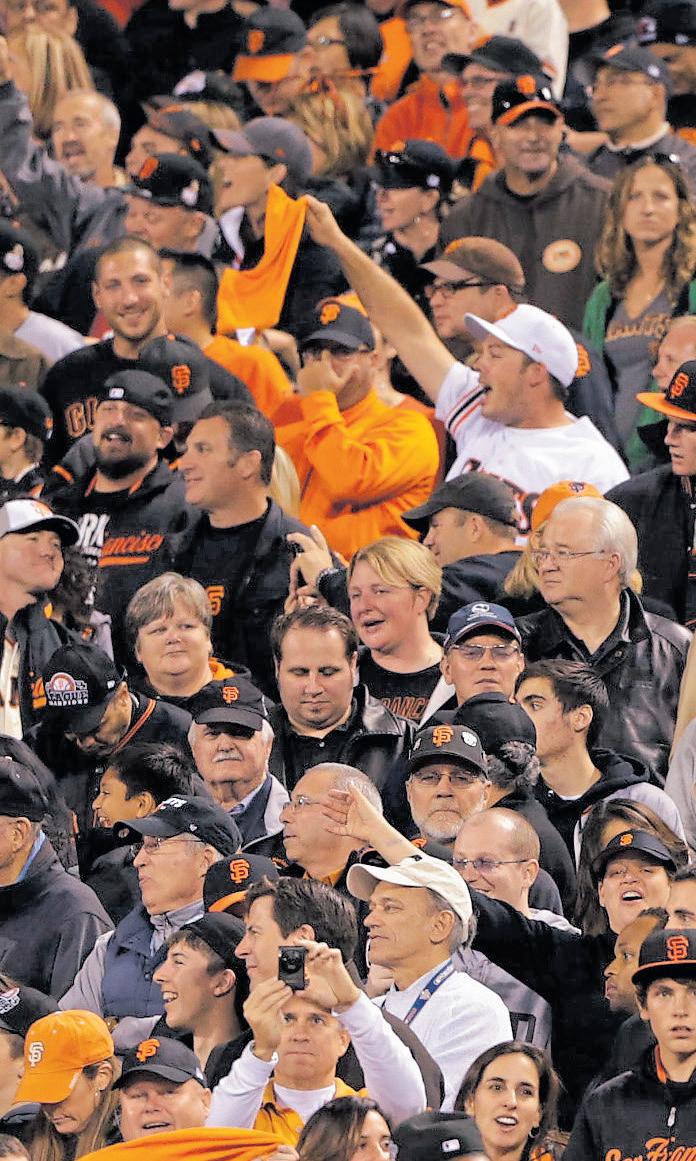

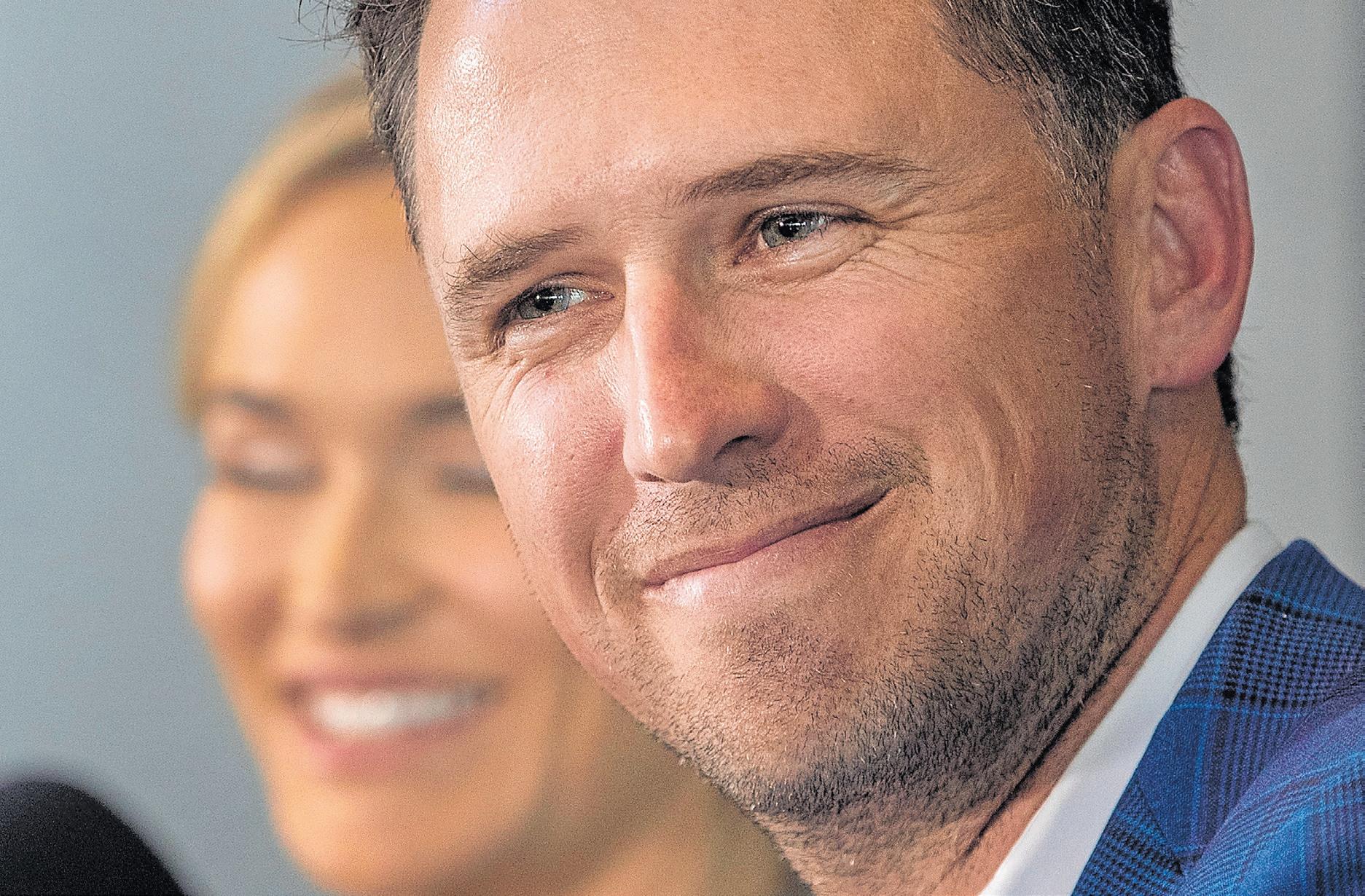
it isn’t going to win (for) you in the playoffs.”
If only the Giants had the luxury of testing that hypothesis.
“There’s a lot of benefit for everybody else on that staff,” Posey said of adding Verlander. “I mean, this is a future Hall of Famer. How does he go about his business? How does he walk into the park each day? How does he carry himself during a good outing or a bad outing? What’s his work ethic? All of those things — I think it’s hard to measure that value, but I believe they’re really important.”
And perhaps they will prove
invaluable.
The problem is that while Verlander and Adames can bring the Giants so many positive, unquantifiable things, wins and losses are, in fact, counted.
Posey might believe that the Giants are in the “memory-making business,” as he said at his introductory press conference, adding: “Sure, winning is great, and ultimately that’s our goal, but the overall big picture of being a part of something bigger than yourself is really appealing.” But that kind of holistic approach only flies until the standings become live.
After that, the Giants are in the business of winning games. As it stands now, the nation’s leading sportsbooks are expecting the Giants to have another mediocre, roughly .500, non-playoff season. FanDuel has the Giants winning 79 or 80 games in 2025.
Zaidi’s numbers-over-everything approach might be out in favor of Posey’s people-can’t-be-quantified approach, but the output is projected to be the same.
And while that says nothing about the Giants’ future — Posey’s No. 1 responsibility is to build up this team’s bottom-
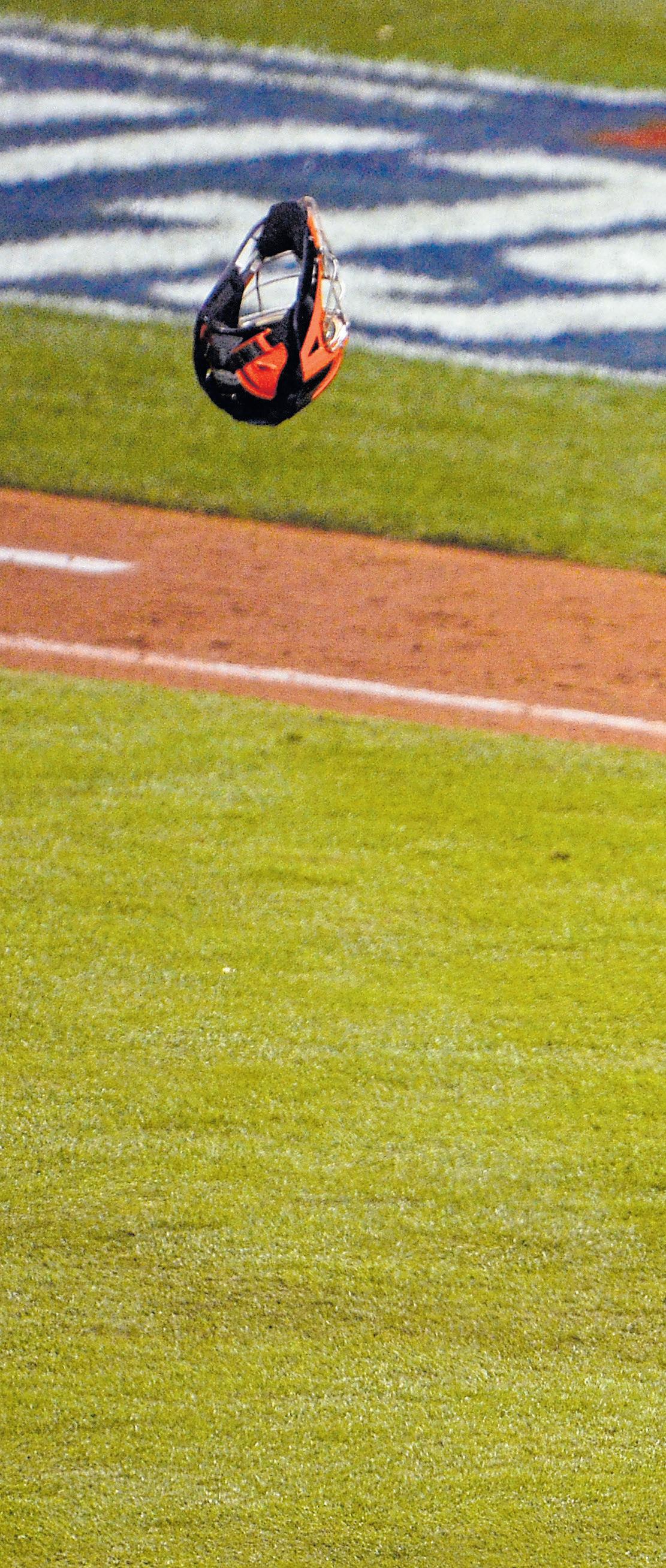

of-the-barrel farm system, a job that will take years — patience will be a hard sell to a fan base that has seen this flush-withcash organization abdicate their near-sacred responsibility of competing with their arch-rivals in Los Angeles.
That’s the other fun part about prioritizing chemistry — the unquantifiable is cheaper than buying up home runs and strikeouts (those pesky things everyone understands). Sure enough, as of mid-January, the Dodgers — who are estimated to bring in 20 percent more revenue than the Giants annually — have double the payroll of San Francisco ($369 million to $181 million).
In fact, the Giants payroll is down nearly $20 million from 2023.
Yes, the Giants, one of the most valuable operations in sports (the fifth-most valuable baseball team in the world, per Forbes) and the sole big-league team in America’s most affluent metro area, are cutting payroll under part-owner Posey’s watch. They’re not even close to being a luxury tax-paying team, outspent by every team in the division but the perpetually lastplace Rockies.
Posey knows all this. He might be inexperienced, but he’s no dummy.
In turn, he knows that the excitement that came with his appointment will fade without a turnaround on the field.
At some point, wins and losses will be counted, and all those forces that folks who have never lived in a big-league clubhouse couldn’t possibly understand will have to manifest, and the Posey Way will have to lead the Giants back to relevance. And time, the most quantifiable asset of all, is of the essence.

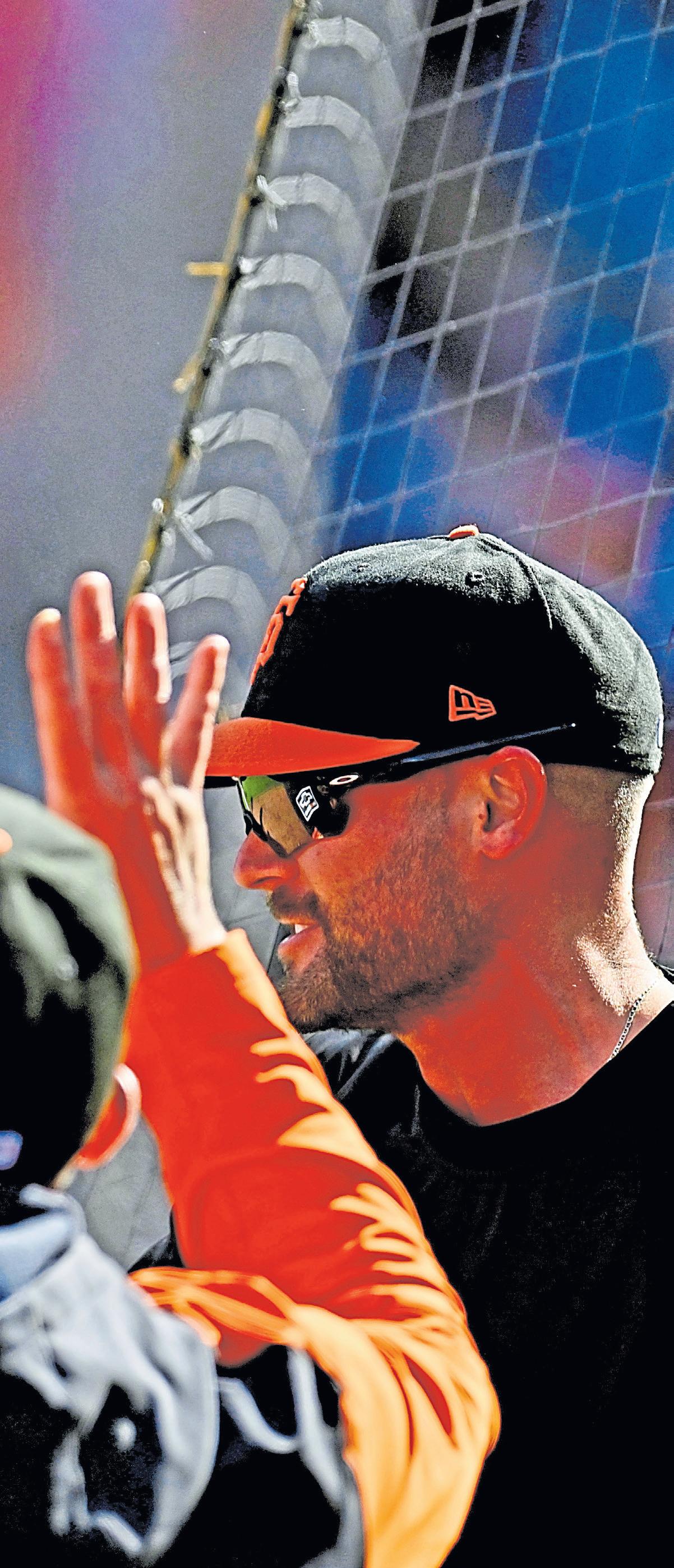
BY JUSTICE DELOS SANTOS
Matt Chapman recorded 290 assists at third base in his first season with the San Francisco Giants. He nearly recorded another one during the offseason, too.
The Giants’ main goal of the winter was to acquire a shortstop, one of the main targets being free agent Ha-Seong Kim. Due to a shoulder injury, Kim wouldn’t have been ready for Opening Day, but Chapman didn’t want that to be an impediment to signing the former San Diego Padres infielder. So, Chapman told the front office he’d be willing to play shortstop in the interim if they signed Kim.
The move would have been no small concession. Chapman has made his career at third base. He’s won five Gold Gloves — and counting — at the position. A switch to shortstop, even temporarily, would’ve likely impeded his run for a sixth in 2025. To Chapman, winning games came first.
“He wants to win, and he’s willing to do whatever it takes to do that,” said Giants hitting coach Pat Burrell, citing Alex Rodriguez’ move to third base to play alongside shortstop Derek Jeter when he joined the Yankees in 2004 as a rare example of a star switching posi-
tions for the benefit of the team. “It’s not uncommon, but it takes special guys to feel confident enough with where they’re at in their career to make changes.”
In the end, the Giants signed Willy Adames to be the team’s shortstop for this season and beyond. Chapman’s willingness to play out of position, though, exemplified the leadership role he’s already assumed in San Francisco. Last spring, Chapman wasn’t in any position to exert his influence.
When spring training opened last season, Chapman was still a free agent. It wasn’t until March 3, 2024, that Chapman signed a one-year, $18 million deal with options baked in — far from the long-term, nine-figure deal he was expected to sign when the offseason began. Chapman could’ve easily opted to play the free agency game for a second consecutive offseason, especially as his Giants debut turned into his best overall season since his days in Oakland from 2017-21. Chapman, though, wanted to plant his flag.
In mid-August, the 31-yearold Chapman expressed his openness to signing a long-term extension. Less than a month later, Chapman put pen to paper on a six-year, $151 million extension. At the time, it was the second-largest deal in franchise history behind Buster Posey’s $167 million, eight-year deal.
“Every player’s goal is to be able to know where you’re going to be and be somewhere that you want to be,” Chapman said. “For me, my experience here last year was amazing. I got to be able to experience what it was like to be a Giant.
“Having Bob Melvin as your manager is something I want to do forever. I love playing for BoMel. I love my teammates, and I think what they’re doing here is special. They’re going to

Giants third baseman Matt Chapman mingles during a FanFest event held at the Napa Yard in January.
KARL MONDON/ STAFF
continue to try to win, so that’s something I want to sign up for.”
The Giants have already seen substantial return on their investment. In his first season with the team, Chapman slugged 27 homers, stole a career-high 15 bases, posted a .790 OPS and won the fifth Gold Glove of his career. Chapman’s 5.5 WAR, according to FanGraphs, was his highest since he was an All-Star with the A’s in 2019.
Fans on the other side of the Bay envisioned Chapman and first baseman Matt Olson to be the foundation of the team well into this decade. Instead, they were both traded before the start of the 2022 season (part of a purge that also saw Melvin leave to manage the Padres) and signaled the end of the era and, ultimately, the end of the A’s in Oakland.
The Giants had no intention of letting Chapman get away. As
things stand, Chapman could play out the rest of his career in orange and black.
“It’s what you want to see as a player,” said Giants left-hander Kyle Harrison of Chapman’s extension. “You want guys that want to be here — especially leaders that want to be here. Chappy has been that guy every day. He’s been in Scottsdale with us training every day. He’s been a vocal leader there. He’s got this calmness to him that can mesh
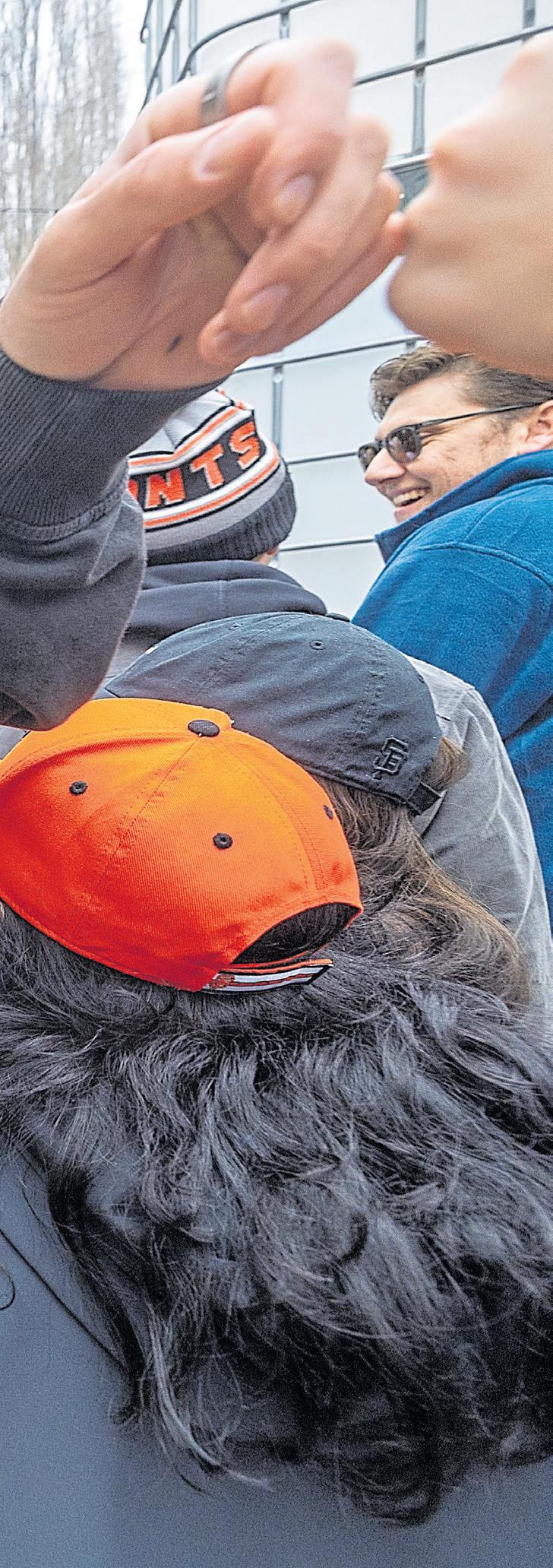
everyone together.”
When Chapman signed his extension, Melvin said, “The performance speaks for itself, but I think it’s a lot of the intangible things that make him who he is and make him such a great fit here. The style of play, the tenacity with which he plays, wants to post every day, plays hurt and never says anything about it.”
Chapman is far from the only Giant who figures in the Giants present and long-term plans.


In his first season with the team, Matt Chapman slugged 27 homers, stole a career-high 15 bases, posted a .790 OPS and won the fifth Gold Glove of his career. Chapman’s 5.5 WAR, according to FanGraphs, was his highest since he was an All-Star with the A’s in 2019.
JOSE
CARLOS FAJARDO, NHAT V. MEYER/STAFF ARCHIVES
“It’s what you want to see as a player. You want guys that want to be here — especially leaders that want to be here. Chappy has been that guy every day.”
Logan Webb, San Francisco’s ace, is signed through 2028; outfielder Jung Hoo Lee is signed through ‘29; Heliot Ramos, Patrick Bailey and Tyler Fitzgerald have yet to hit arbitration. Bryce Eldridge, the Giants’ top prospect, could make his way to San Francisco as early as this season.
And, of course, there’s Adames.
Adames, one of baseball’s better shortstops over the last half-decade, signed a seven-year, $182 million contract in December, and he’s just 29. On the field, they’ll hold down the left side of San Francisco’s infield. Off the field, they’ll hold down San Francisco’s clubhouse.
“It’s impossible to put value on (leadership),” Burrell said. “Everybody that plays this game learns from the people that came before them. To have two guys that go about their business the way these two do, you can’t put a price tag on it. It’s too valuable. Sometimes, just having guys like Adames and Chappy in the room will elevate people’s games.”
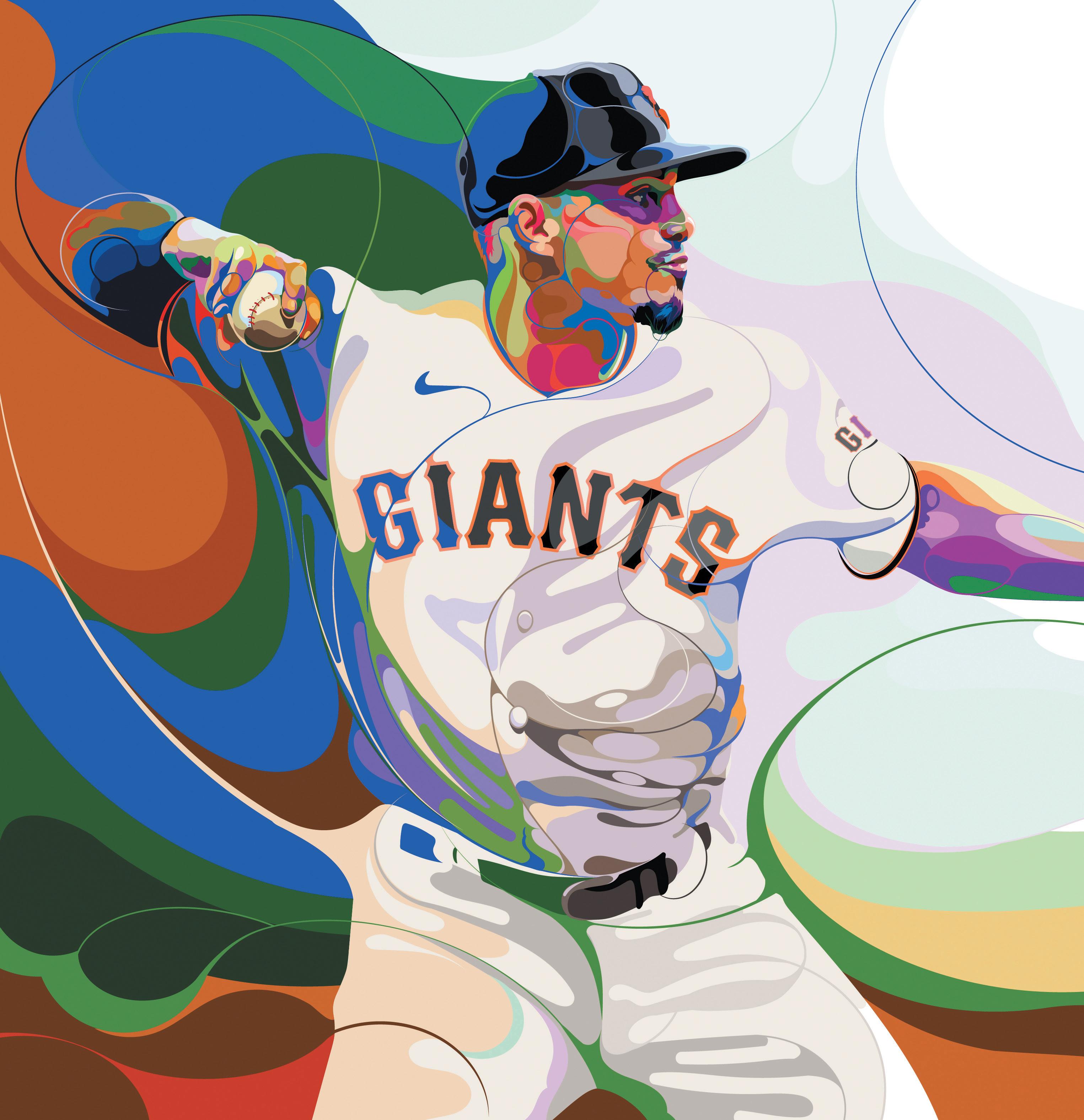

STORY BY JUSTICE DELOS SANTOS
ILLUSTRATION BY MARTIN SATI
The San Francisco Giants enter their first season under Buster Posey and Zack Minasian’s leadership fresh off back-to-back fourth place finishes in the NL West. To have any chance of playing October baseball, they’ll need a lot to fall in their favor. Consider that this winter:
The Diamondbacks took a hit by losing first baseman Christian Walker but responded by landing Corbin Burnes and acquiring first baseman Josh Naylor from the Guardians.
The Padres didn’t make any impact additions and are in a bit of disarray — the widow of the late Peter Seidler is suing her brothers-in-law — but return a talented nucleus.
As for the defending World Series champion Dodgers? They won the sweepstakes for star Japanese phenom pitcher Roki Sasaki, signed former Giants Michael Conforto and Blake Snell, added super utility man Hyeseong Kim and re-signed Teoscar Hernández and Blake Treinen. There’s also the matter of MVP Shohei Ohtani, who will return to the mound fresh off the first 50-50 season in league history.
How do the Giants compete and return to the playoffs for the first time since 2021? Here are five keys to the 2025 season:
The Giants won their most recent World Series title — and third in five seasons— in 2014. Here’s a look at how they’ve fared in the decade since they last won it all.

The Giants missed out on opportunities to land Burnes and Sasaki but added future Hall of Famer Justin Verlander. As things stand, San Francisco’s rotation options feature Verlander, Logan Webb, Robbie Ray, Kyle Harrison, Jordan Hicks, Hayden Birdsong, Landen Roupp, Mason Black and Keaton Winn. Whether they roll with a six-man rotation at this point is unclear.
Webb produced another quality season and received Cy Young votes, but the rest of the rotation is difficult to project.
Verlander, who will be 42 on Opening Day, is coming off the worst season of his career, posting a 5.48 ERA over 90 1/3 innings. That said, Verlander’s stuff still grades out well, and he
made offseason adjustments to help with the shoulder and neck injuries that ailed him last year.
Ray, 33, has thrown 34 innings in the last two seasons after undergoing Tommy John surgery in 2023, though he did perform well upon returning last year. Excluding his blowup against Atlanta on Aug. 14, Ray had a 3.30 ERA with 41 strikeouts over 30 innings last season.
Hicks, 28, started strong in his first season as a full-time starter, but his effectiveness faded as the innings added up. By late July, Hicks was back in the bullpen to manage his workload.
Harrison and Birdsong are both 23 years old with 47 combined major-league starts under their belts. The former experienced a velocity dip, partially the product of a careerhigh 124 1/3 innings. The latter boasted impressive strikeout
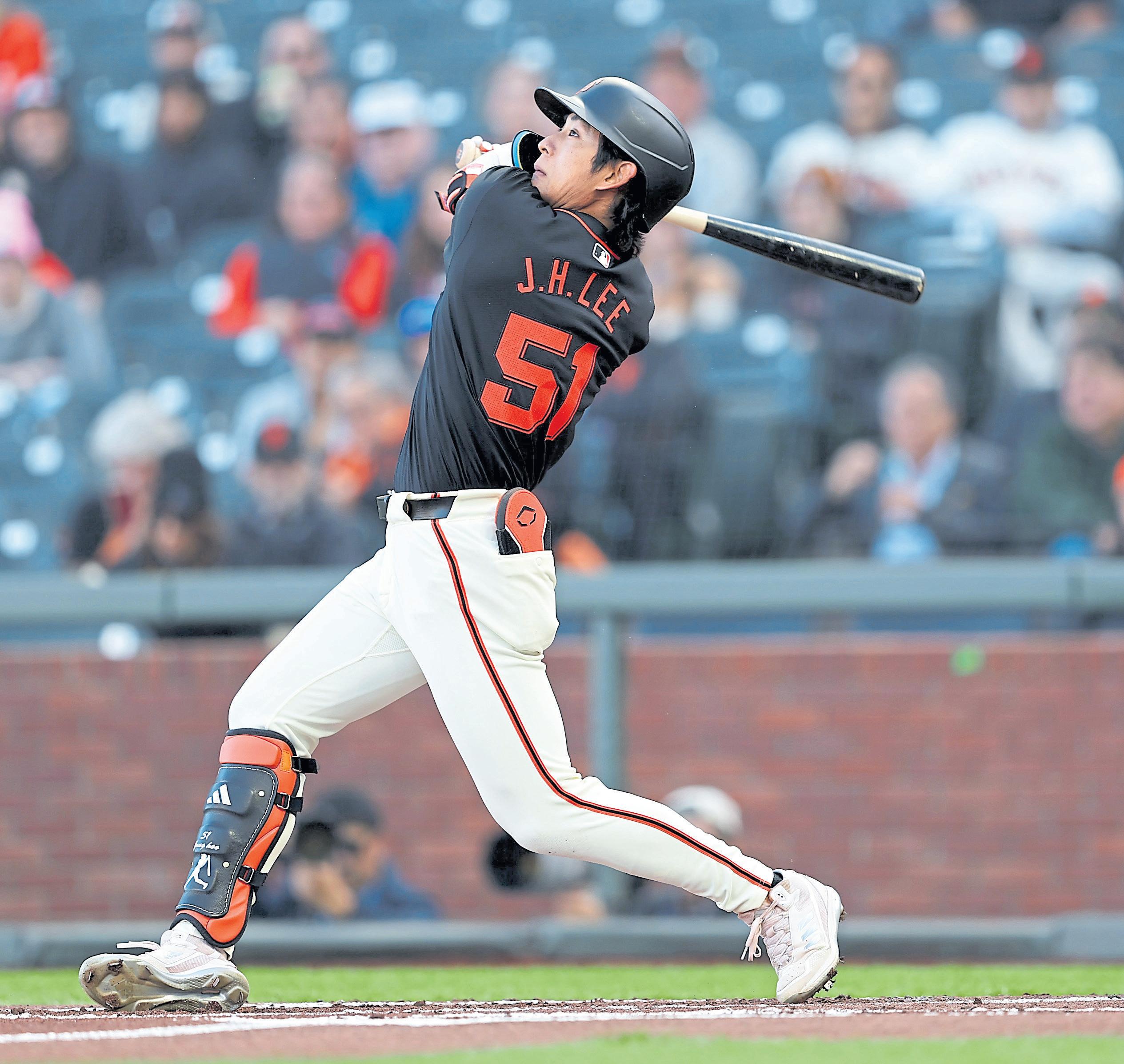
totals (11.00 K/9) but stacked up the walks, too (5.38 BB/9). This rotation unquestionably has the potential to be solid. Whether that potential is realized remains to be seen.
Verlander is the biggest name they brought in, but the biggest bucks went to Willy Adames, who signed a franchise-record seven-year, $182 million deal. Alongside Matt Chapman, San Francisco has assembled one of the best left sides of an infield in baseball.
Adames, 29, has quietly been
Above: Jung Hoo Lee hits a flyout against the Athletics at Oracle Park during a Bay Bridge Series game in 2023.
RAY CHAVEZ/ STAFF ARCHIVE
one of baseball’s best shortstops over the last half decade. Since 2019, the year he became a full-time starter, Adames ranks ninth among all primary shortstop in WAR, according to FanGraphs.
Over his career, Adames owns a career .248 batting average and .766 OPS with 150 homers and 472 RBIs while being an above-average defender at a premium position. In 2024, Adames posted career-highs in homers (32), RBIs (112) and steals (21).
The biggest question with Adames is defense. From 2019-23, Adames was worth 28 defensive runs saved (DRS). Last season, by contrast, Adames was worth -16 DRS, the fewest of any shortstop.

Jung Hoo Lee’s first season in San Francisco lasted all of seven-ish weeks before he suffered a season-ending left shoulder injury. Still, Lee has plenty of time to live up to the six-year, $113 million deal he signed in December 2023.
Over 37 games, Lee had a .262 batting average and .641 OPS with two homers and two steals while playing fine defense. The sample size is too small to definitively project how Lee will perform, but Lee did provide a glimpse of how his game translates from KBO to MLB.
For one, Lee’s bat-to-ball skills


are already elite. If Lee qualified, his contact rate of 91.5 percent would’ve ranked third in all of baseball, behind only Luis Arraez (94.1 percent) and Steven Kwan (92.9 percent). Additionally, Lee’s strikeout rate of 8.2 percent would’ve ranked behind only Arraez (4.3 percent) if he qualified.
Lee will also represent a defensive upgrade after San Francisco’s center fielders combined ranked dead last in DRS (-24) last season.
Camilo Doval entered last season as the Giants’ unquestioned closer but ended last season with an uncertain future. Not only did he finish with a careerworst 4.88 ERA over 59 innings, but lost the closer role when he was demoted to Triple-A Sacramento in August. Upon returning to the majors, Ryan Walker filled the closer vacancy.
Posey and manager Bob
Melvin both gave Doval a vote of confidence at the Winter Meetings, and as bad as last season went, there’s still reason to believe Doval can be a great high-leverage reliever.
Doval, 27, maintains elite fastball velocity (96th percentile) paired with a wipeout slider. Opponents had a career-high .235 batting average against Doval, but Doval had a careerbest expected batting average of .187 (96th percentile). Doval posted a career-high groundball rate of 60.0 percent last season, and Adames can help ensure those grounders become outs.
Amid everything that went wrong last season, Tyler Fitzgerald unexpectedly emerged as a bright spot, hitting 15 homers and stealing 17 bases with an .831 OPS over 96 games.
As well as Fitzgerald played, his underlying data paints a bleaker picture. Fitzgerald excelled at elevating the baseball, but his batted-ball data (average exit velocity, hard-hit rate, expected batting average) was below average. If he played enough games to qualify, his strikeout rate of 31.7 percent would’ve been the second-worst in all of baseball.
With Adames captaining the infield, Fitzgerald will slide over to second base. Time will tell if Fitzgerald can hold down the starting role for the entire season.


BY JUSTICE DELOS SANTOS
Before making a single decision on the job, Zack Minasian had already made history. When the San Francisco Giants hired Minasian to serve as the team’s new general manager, Zack and his brother, Perry, the general manager of the Los Angeles Angels, became the first siblings in Major League history to simultaneously hold the title. As kids, the Minasian brothers — Zack, Perry, Calvin, Rudy — played their own version of fantasy baseball, drafting teams under very specific constraints. Which brother could craft the best team exclusively composed of players from the AL West? What about a team of only left-handed hitters? There was a salary cap, too.
For Zack and Perry, fantasy evolved into reality. Zack, 41, understands the magnitude of what he and his brother accomplished but seldom allows it
to come into focus during his day-to-day life. For one, he has a ballclub to help rebuild alongside Buster Posey, a franchise icon turned president of baseball operations. There’s also the matter of taking care of his newborn son, Nico.
On the rare occasion that Minasian steps back and takes stock of his accomplishments, he puts them in the context of the people who have come before him.
He thinks of his parents, who allowed him into the world of baseball at a young age.
He thinks of his grandparents, who laid the foundation for a life in America.
He thinks of his great-grandparents, who survived and escaped unspeakable horrors.
“If it wasn’t for the courage of so many people before me,” Minasian said, “I have no idea if I would
Baseball runs in the family of Giants general manager Zack Minasian. His father, Zack Minasian Sr., served as the Rangers’ clubhouse manager, and his brother, Perry, is the Angels’ general manager.
ARIC CRABB/STAFF
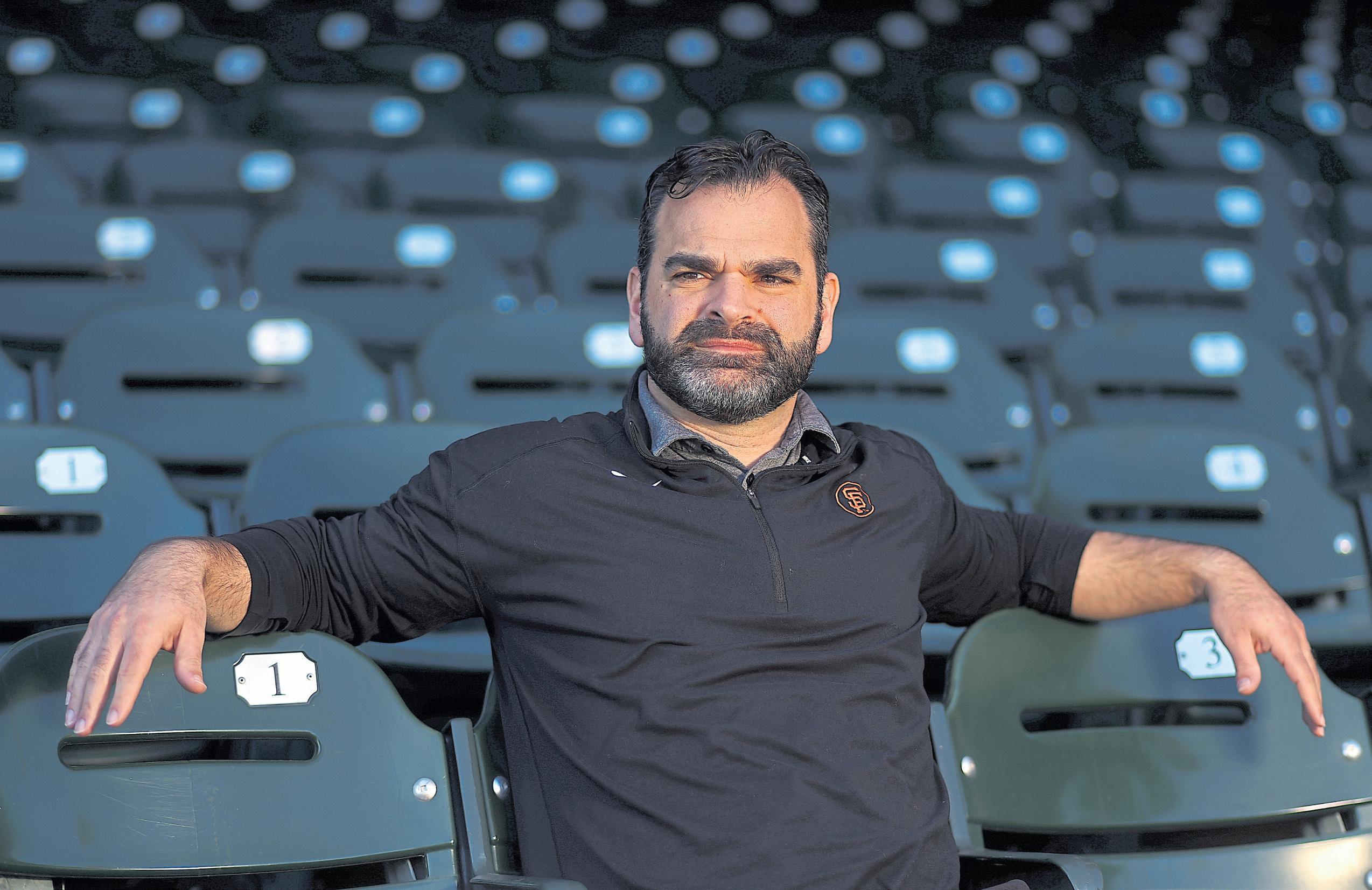
be anywhere close to here.”
The Minasians are a tight-knit baseball family. Zack Minasian Sr. served as the Texas Rangers’ clubhouse manager from 1988-2009, allowing his four kids into the clubhouse under the condition that they work. Calvin is currently the clubhouse manager for the Atlanta Braves. Their lives in baseball would not have been possible without the sacrifices of those who preceded them.
Six of Minasian’s eight great-grandparents fled Europe to escape the Armenian genocide, which claimed the lives of up to 1.5 million Armenians. Minasian recalls being told that one of his great-grandfathers witnessed a severed head rolling into their house. Minasian’s ancestors sought new lives in America.
Hagop Ipjian, his mother’s paternal grandfather, became embedded into the community of Evanston, Illinois. In addition to starting a successful dry cleaning business called “Perfecto Cleaners,” Ipjian helped build the St. James Armenian Church. Ipjian’s son John — Minasian’s
grandfather — earned a Purple Heart for fighting in World War II.
Zack understands the stark discrepancy between the challenges he faces versus those of his grandparents and great-grandparents. The fire to build a winning ballclub in San Francisco rages on a daily basis; between Nico and the job, sleep has been at a premium since December. But the struggles that his lineage endured provided him with perspective.
“When I think about my grandparents, my great-grandparents and the sacrifices they made, I’m sure they would be proud of the position that we’ve been able to take,” he said. “More than anything, I hope they’re proud of who I am as a husband, a father, a brother and what the community means to me.”
Edward Minasian, the son of Kevork Minasian and Yagsa Cholakian — Zack’s great-grandparents — was working at the legendary Ambassador Hotel in Los Angeles when he met Tommy Lasorda. At the time, Lasorda was managing the Dodgers — not Los Angeles, but Ogden,
the franchise’s rookie-level affiliate.
Lasorda and Edward developed a friendship, so much so that Lasorda requested Edward’s son, Zack Sr., spend a summer in Ogden and manage the clubhouse. He was 16. Despite his youth and inexperience, Zack Sr. spent the summer of 1968 running the Ogden Dodgers’ clubhouse, meeting future major-leaguers Steve Garvey, Bobby Valentine, Bill Buckner and Tom Paciorek.
Two decades later, Zack Sr. was living in Chicago with his wife, Barbara, and four kids when he received a call to become the visiting clubhouse manager for the Texas Rangers. Valentine, the former Ogden Dodger, was the Rangers’ manager.
Dad allowed his kids to join him in the clubhouse but only if they did chores such as cleaning kitchens, shining shoes, scrubbing toilets and washing jocks. Zack Sr. compensated his children for their work, but the real payment for his baseball-obsessed kids were the stories.
The laundry list of players that entered young Zack’s realm included Ken Griffey Jr., Cal Ripken Jr. and Cal Ripken Sr., Frank Thomas, Kirby Puckett, Joe Carter, George Brett and so many others. For no particular reason, he remembered being scared of Dennis Eckersley and Carlton Fisk.
Zack also remembers watching Albert Belle take soft tosses in the middle of the clubhouse, unfurling “angry hacks” and producing a distinctly loud sound — a sound that let the teen know that the majors were not in his future.
“When you’re in there, you learn pretty quick, ‘I don’t think I’m going to be able to do that,’” Zack said.
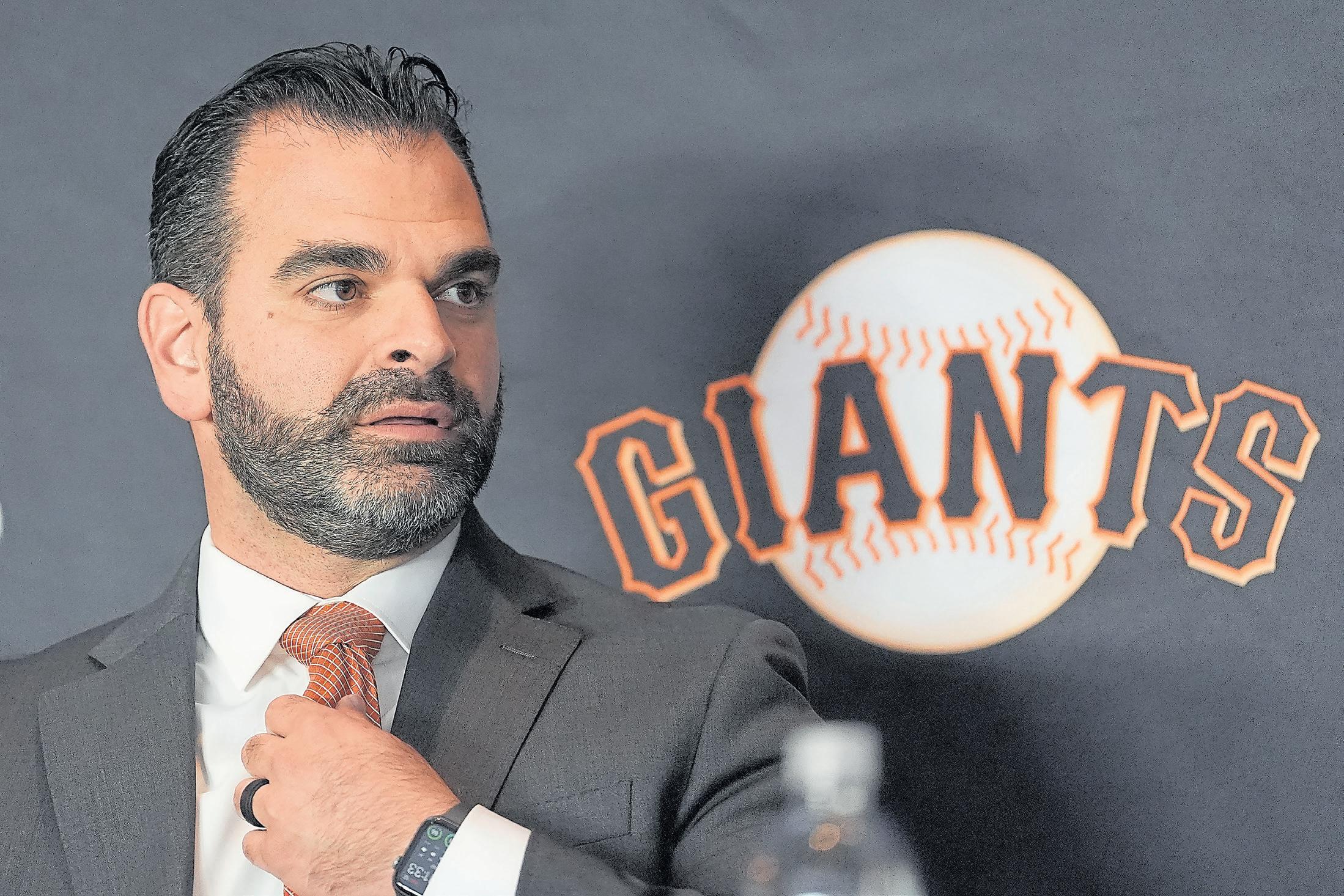
It was during these formative years that Zack developed a relationship with Doug Melvin, the Rangers’ general manager from 1995-2001. When Melvin took over as the Milwaukee Brewers’ general manager in 2002, he offered Zack an internship. Following his graduation from the University of Texas-Arlington, Zack joined Milwaukee to work for the team’s scouting department.
Zack soared through the ranks. By 27, he became baseball’s youngest director of professional scouting. He took on several roles during his 14 seasons with the Brewers organization, helping the team acquire the likes of Zack Gre-
Zack Minasian joined the Giants as the team’s director of pro scouting in 2019. Now in his first year as San Francisco’s general manager, Minasian finds himself tasked with competing with the Dodgers in a stacked NL West.
JEFF CHIU/ ASSOCIATED PRESS
inke, Josh Hader, Carlos Gómez and newly minted Hall of Famer CC Sabathia.
In 2019, Zack joined the Giants as the team’s director of pro scouting. The decision was much to the chagrin of Lasorda, the Dodgers’ Hall of Fame manager who also happens to be his godfather. Lasorda went as far as to refer to Zack as “Benedict Arnold.”
In his first year as San Francisco’s general manager, Minasian finds himself tasked with competing with the contemporary version of Lasorda’s Dodgers in a stacked NL West. Minasian, in time, will become plenty familiar with opposing general managers and presi-
dents of baseball operations. There’s one GM, though, that he already knows all too well.
Zack and Perry have had their share of conversations about their teams. Given they’ve known each other all their lives, they’re both aware of their respective tells. If there’s nothing worth discussing, they can always fall back on talking about their kids. Their great-grandparents never saw them ascend to these heights in the game. Zack knows he and Perry wouldn’t be here without them.
“I’m a product of all these people who have come before me,” Zack said.
BY JUSTICE DELOS SANTOS
Buster Posey is back calling the shots for the Giants, this time leading them in the front office instead of from behind home plate.
But the rookie president of baseball operations doesn’t inherit an easy job. The Giants haven’t made the postseason since his final year as a player in 2021. San Francisco has gone 240-246 over the last three seasons. It won’t be an easy road back to the playoffs, but it will be an entertaining one.
The Giants will make trips to Detroit, Houston and New York to face the Mets, setting up the possibility that new Giant pitcher and future Hall of Famer Justin Verlander could pitch at each of his old ballparks. Willy Adames, the Giants big free agent catch, will have a similar homecoming when San Francisco travels to Milwaukee.
The Athletics return to the Bay Area (at least for a weekend) in mid-May, and the Giants also have a chance to see the reigning MVPs in Aaron Judge and Shohei Ohtani, rookie Japanese phenom Roki Sasaki and the Mets’ new $765 million man, Juan Soto.
Here’s a look at some key series to watch this season:
March 27-30 at Cincinnati Reds
Another season starts, not surprisingly, on the road. The Giants have opened a season at home just five times this millennium and once went 12 straight seasons (2010-21) without a season opener at home. Opening Day will likely feature Logan Webb versus Hunter Greene, both of whom received Cy Young Award votes last season. Adames, who will be making his Giants debut, has hit eight home runs at Great American Ballpark, the most he’s hit at any road venue.
April 4-6 vs. Seattle Mariners
Following a six-game opening trip, the Giants finally return to San Francisco for their home opener. Depending on when Verlander makes his season debut, he could be in line to start the home opener. Alameda’s Bryan Woo could start for the Mariners in this series as well, if the schedule lines up right. In four career starts in the Bay Area (three being at the Oakland Coliseum), Woo has a 1.64 ERA with 25 strikeouts over 22 innings.
April 11-13 at New York Yankees
Despite losing Juan Soto to the Mets, the pinstripes responded by signing left-hander Max Fried, then traded for outfielder/first baseman Cody Bellinger, closer Devin Williams and reliever Fernando Cruz. And, yes, there’s also the matter of Judge, who absolutely mashes the team he grew up watching. Judge has hit five home runs in six career games against the Giants, and his 1.751
Yamamoto last offseason, Los Angeles has recruited another Japanese superstar to the mix in right-hander Roki Sasaki. Along with winning the Sasaki sweepstakes, the Dodgers signed super utility man Hyeseong Kim from the KBO as well as former Giants Blake Snell and Michael Conforto. They also re-signed outfielder Teoscar Hernández and reliever Blake Treinen and extended Tommy Edman. Los Angeles will also “add” Ohtani to the rotation after he spent last season recovering from elbow surgery — and formed the 50-50 club in his downtime.
July 4-6 at Athletics
OPS against San Francisco is the highest of any opponent.
April 25-27 vs. Texas
On April 26, the Giants will celebrate the career of Brandon Crawford, who announced his retirement in December. Appropriately enough, former Giants manager Bruce Bochy and his current team will be in town that weekend. The Pleasanton native played 13 seasons for his hometown team, becoming the franchise’s all-time leader in games played at shortstop (1,617) and helping the Giants win the final two of their three championships in the Bochy era. He’s one of the greatest shortstops in franchise history and unquestionably the greatest shortstop in San Francisco Giants history.
May 26-28 at
The Giants swept Verlander’s Tigers in the 2012 World Series. Verlander, arguably baseball’s best pitcher at the time, is most remembered in San Francisco for allowing two of the three home runs that Pablo Sandoval hit in Game 1. Fast forward to present year, and there’s a realistic chance that Verlander could start for the Giants against the Tigers in Detroit.
July 11-13 vs. Los Angeles
The archrival Dodgers have assembled plenty of talented teams over the last decade, but this iteration — fresh off their second World Series title of the decade — might be in a tier of its own. After landing Ohtani and Yoshinobu
The Bay Bridge Series is officially a thing of the past, but the A’s visit to Oracle May 16-18 figures to be emotional for fans. With the A’s temporarily playing in Sacramento, the regular-season duels between the Giants and A’s shall be referred to as … the Carquinez Bridge Series? The I-80 Series? This is a road series for the Giants, but a good chunk of their roster has played at Sutter Health Park, the home to the Triple-A Sacramento River Cats.
July 25-27 vs. New York Mets
The Giants didn’t pursue Soto the same way they lost out on Judge and Ohtani when they were free agents, but Soto’s first visit to Oracle Park will offer Giants fans a vision of what could’ve been. Over 22 career games at Oracle Park, Soto owns a slash line of .325/.436/.615 with seven homers, 13 RBIs and as many walks as strikeouts (17). Francisco Lindor, like Soto, loves hitting at Oracle Park, owning a career .933 OPS with four doubles, four homers and 16 RBIs in 13 games.
Aug. 22-24 at Milwaukee Brewers
After spending three-and-a-half seasons in Milwaukee, Adames will make his first appearance at American Family Field as a Giant. A fan favorite in Milwaukee, Adames hit 107 home runs with 348 RBIs and a .780 OPS during his time with the Brew Crew. In his final season in Milwaukee, Adames set career-highs in homers (32), RBIs (112) and steals (21).
NOTES
All times Pacific. All game times and telecast information subject to change. All games broadcast on 680 AM
Home games
BY KATE BRADSHAW
It’s something very few people want to ever think about: What’s the best way to care for a dying child? For some families, the George Mark Children’s House is the best answer to a question they never wanted to have to ask.
And for nearly nine years, athletes from the San Francisco Giants have teamed up with one of the biggest names in Bay Area pizza — Tony Gemignani — to support the institution’s mission.
The crossover between the worlds of pro sports and philanthropy goes back decades in the Bay Area, where many teams consider it an essential part of their community involvement. The Giants, for example, have donated more than $40 million to charitable causes since they launched their Community Fund in 1991. And Buster and Kristen Posey have long been known for their work with pedi-
atric cancer organizations.
But this particular partnership began with a pizzaiolo.
Tucked into a quiet nook of San Leandro, the George Mark Children’s House was the first pediatric palliative care home in the nation when it opened 20 years ago. An oasis for families facing unimaginable sorrows, it was founded by Dr. Kathy Hull and modeled after programs in the U.K. to help terminally ill children and their families find joy in each remaining day together.
There are visits from ponies and puppies, a garden with Pixar-designed hummingbird sculptures, music and aquatic therapy. Small acts of magic occur daily. The staff at the nine-bed home takes care of its patients’ families, too, providing respite care when they need a little time away from the intense demands of caregiving.

It’s a personal mission for CEO Shekinah Eliassen, who stayed at George Mark Children’s House with her newborn son in 2012, after he was given a terminal diagnosis. For the last nine days of little Lars’ 21-day life, her family was able to have space, quiet and support while navigating a devastating experience.
Since Eliassen took the helm at George Mark Children’s House two years ago, the non-
profit has increased its patient population by 41 percent. It’s expanding its programs to serve children and young adults with cancer. A new aquatics facility with triple the capacity is set to open this spring, allowing them to offer outpatient aquatic therapy services. And a ramp-up in staffing following the pandemic means that often, there are one or two beds available, Eliassen says, so they’re eager to get the
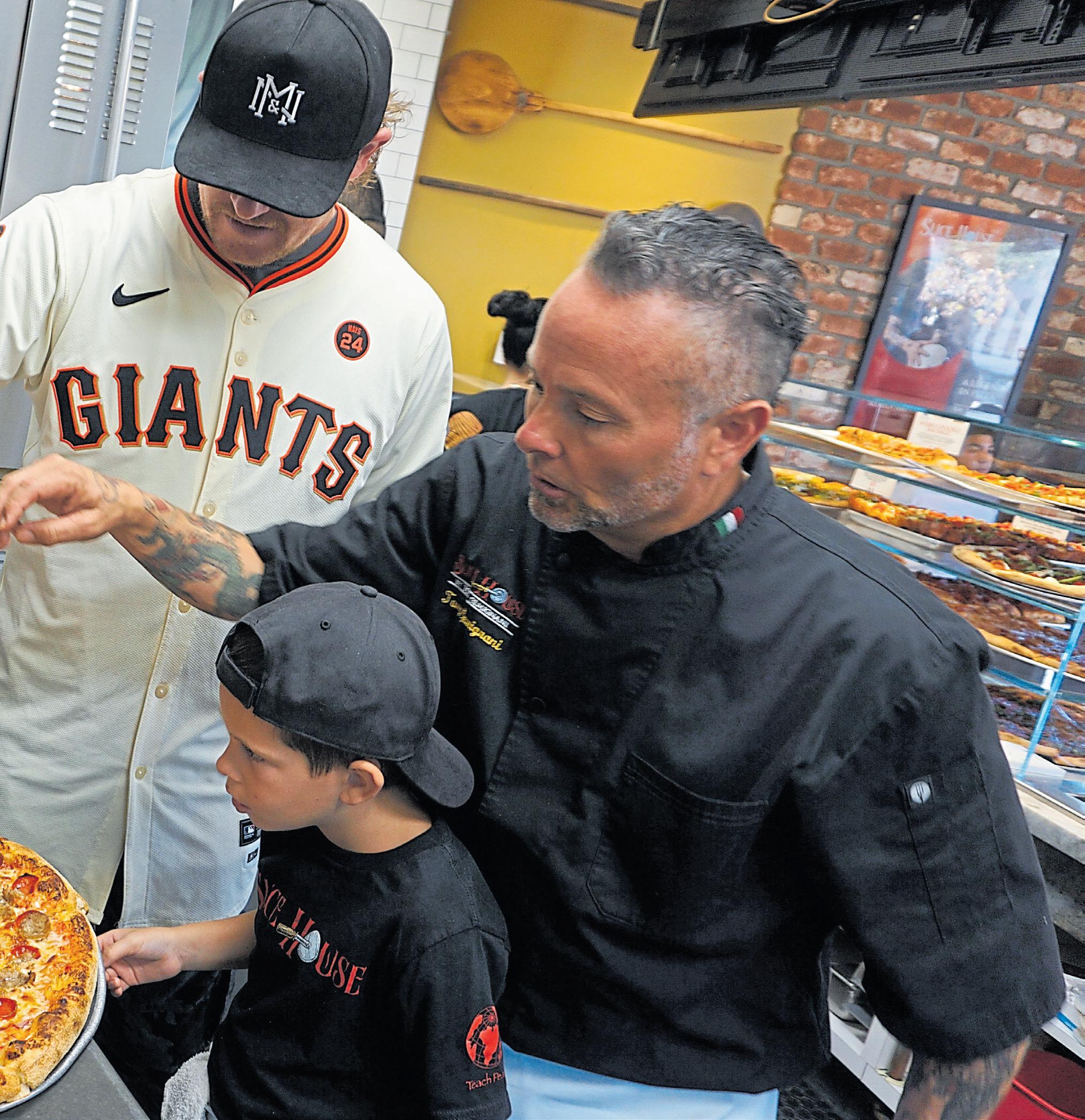
word out about their services.
“We should be the St. Jude’s of the Bay Area,” she says.
Providing all this — there is zero cost to the families who enter — requires major fundraising efforts, since only a small portion of the home’s roughly $6.4 million annual budget is covered by insurers. That’s where Gemignani and the Giants come in.
A Fremont native, Gemignani
is pizza royalty. The 13-time World Pizza Champion is the pizzaiolo behind more than 30 restaurants, including the North Beach institution, Tony’s Pizza Napoletana, and Slice House in Walnut Creek, Mountain View and cities far and wide.
About 15 years ago, George Mark Children’s House asked Gemignani to help fulfill a child’s wish to make pizza together. The experience made
such an impression on him, he has returned again and again.
“It’s sad,” he says, “but it’s a beautiful, beautiful place.”
As his Slice House emporium grew over the years, the cause remained top of mind. So in 2016, he began a creative fundraiser for the nonprofit, partnering with the San Francisco Giants to develop signature pizzas based on participating athletes’ favorite toppings. The

pizzas are featured on Slice House menus between April and mid-September with a portion of the sales — $6 per 20-inch pie or $1 per slice — going to George Mark Children’s House.
As the number of Slice House locations has expanded, so has the support. Last year alone, Gemignani raised $69,000 through pizzas developed with Giants pitcher Logan Webb and former outfielder Michael Conforto, bringing the total so far to about $250,000.
Gemignani will continue the tradition this season, swapping out Conforto’s Grand Slam pizza topped with pepperoni, pepper and hot honey for a new custom pie designed by a different player. Webb’s Double Sausage pie should be back in all its tomato-sauced, cheesy glory, topped with Italian sausage, sliced link sausage, Cup & Char thin pepperoni, red onions, oregano and garlic oil ($7.25 slice / $41.40 pizza).
Details: Find more information about George Mark Children’s House at https:// georgemark.org/. Find Gemignani-Giants pizzas at Slice House locations around the Bay Area this season, including in Walnut Creek, San Leandro, Castro Valley, Mountain View, Belmont, Santa Clara, Milpitas and Millbrae, as well as at Oracle Park and Chase Center; https:// slicehouse.com/.
add toppings to a pizza as part of a fundraiser for the George Mark Children’s House, a pediatric palliative care center in San Leandro.
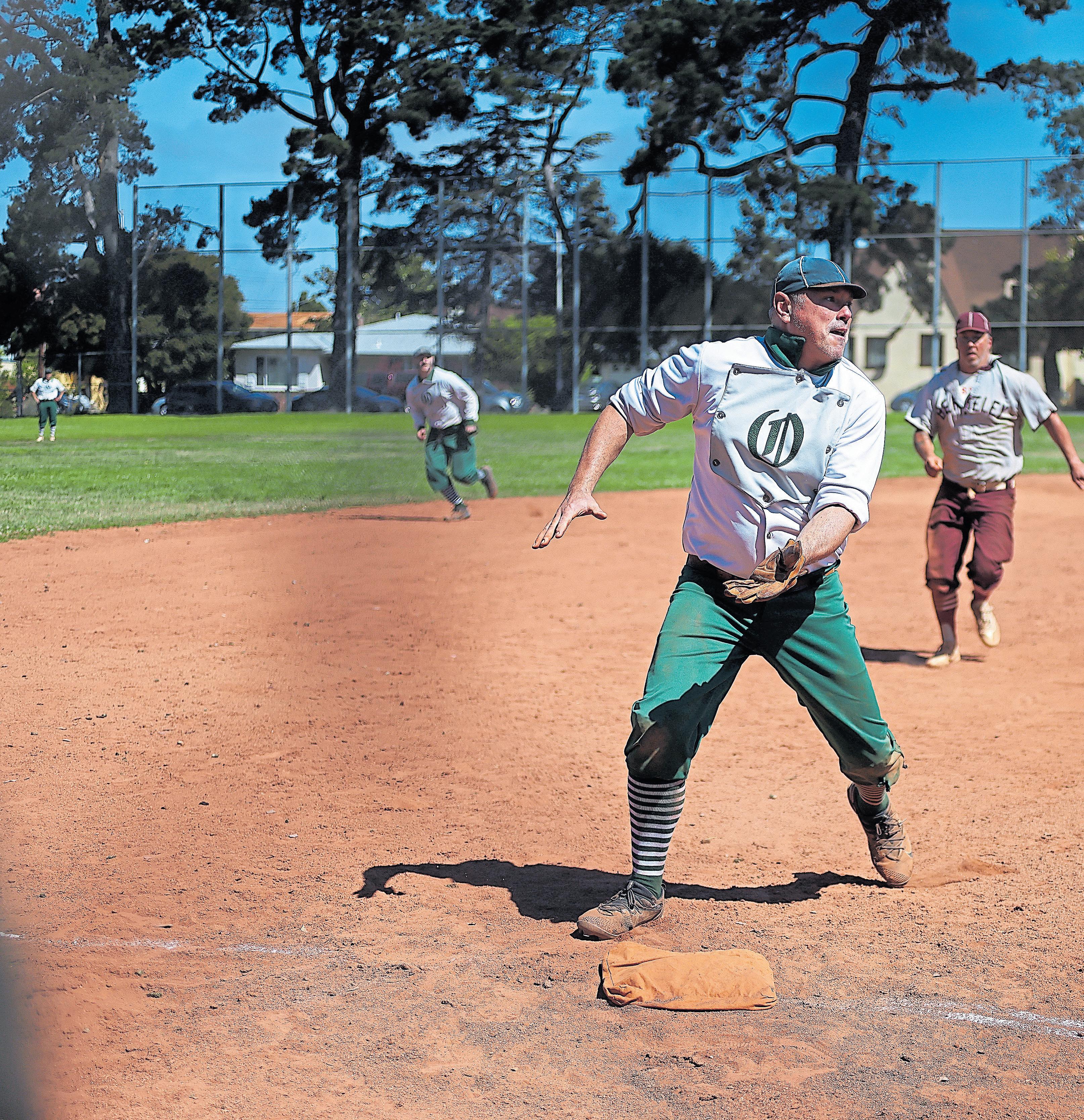

STORY BY JASON MASTRODONATO
BY ARIC CRABB
When Carl Gibbs finishes his regular work week as a criminal investigator for death penalty cases, the 69-year-old puts on his black suit, grabs his fancy derby hat and heads to his parttime job.
On most summer weekends, Gibbs can be found at Golden Gate Park wearing his “Monopoly man” outfit and calling balls and strikes for a bunch of middle-aged guys playing baseball by a rulebook last used in 1886.
Gibbs isn’t an umpire, but a “sir,” the original title of the uniformed men officiating America’s pastime.
Players doff their caps when they see him, treat him with the utmost respect and invite him out for beers after — and sometimes during — a long day at the yard.
This is the Bay Area Vintage
Oakland Colonels third baseman Chris “Goldie” Wood moves to field a ball during a game against the Berkeley Clarions at Albany’s Memorial Park last August.
ARIC CRABB/STAFF
Base Ball League, and it’s here that Gibbs fell in love with his new hobby and his new friends.
“I had no idea what I was getting into when I was invited 13 years ago,” says Gibbs, who lives in Berkeley but commutes to San Francisco for games. “I got on BART, and I’m riding in on a Sunday morning dressed like it’s 1886.”
When he walked onto the park’s Big Rec Field and saw a bunch of men wearing wool uniforms that looked to be a century old, he knew he was in the right place.
“The great thing about this league is it’s a competitive team sport without the alpha male element,” Gibbs says. “I think of it as 20 percent Renaissance fair, 80 percent Little League.”
Trying to find an adult sports league that suits folks who want a competitive environment without the toxicity often created by guys who take it way, way too seriously is what led a large majority of the players to the vintage league, which plays in cities from Dublin to San Jose.
Here, baseball is still baseball, but the funky rules which, oddly enough, date back to a time when the game was played with ruthless vigor, have somehow inspired a culture that promotes sportsmanship and respect over everything else.
Hit a ball nicely into the gap, and the other team’s shortstop is likely to come smack you on the rear and tell you “great hit” when you get to second base.
But most players don’t know each other’s real names; only their nicknames, given to them by their teammates.
There’s “Blaze,” the guy so fast


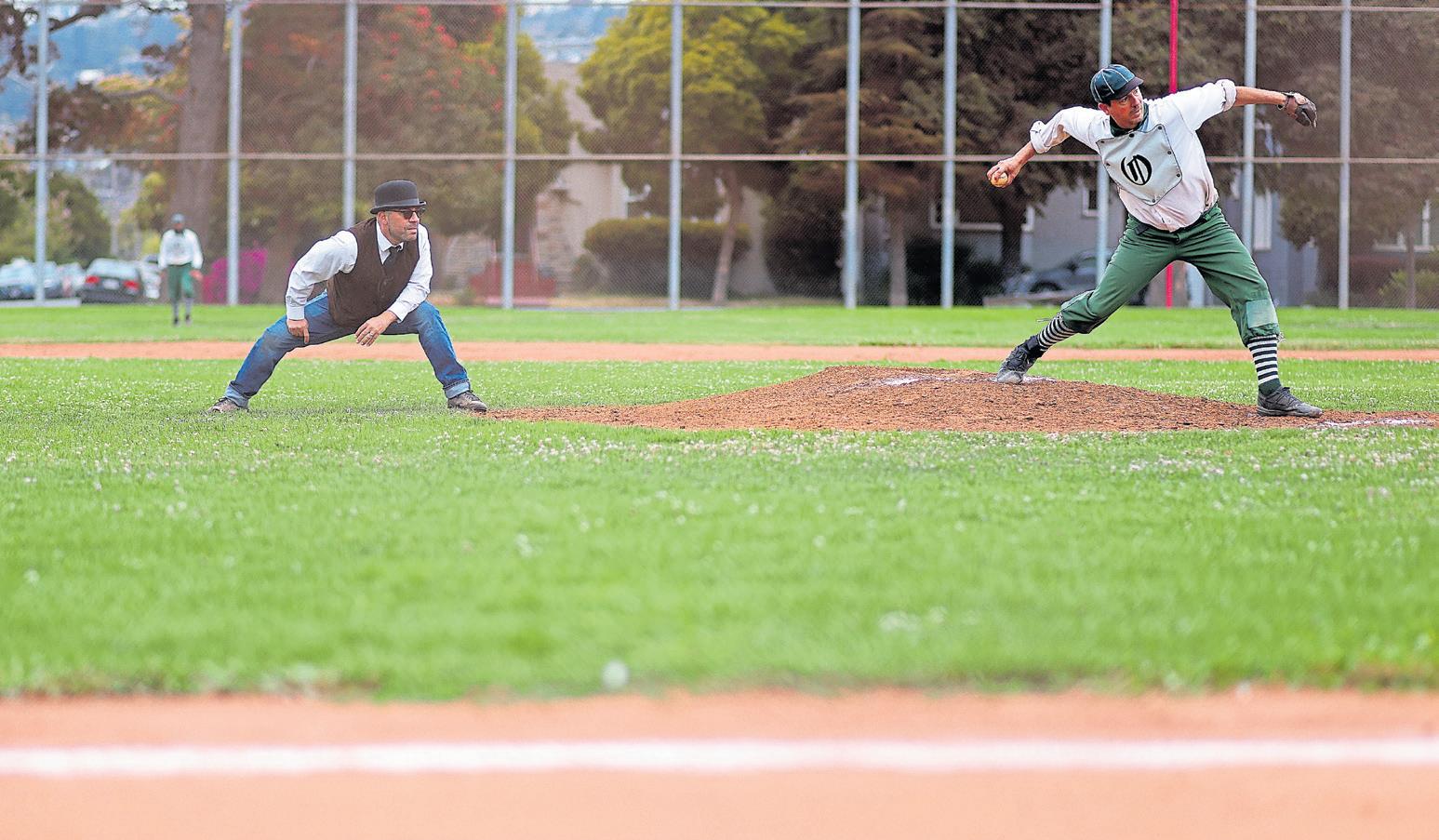
and so good he nearly broke the league, before he moved away during the pandemic. There’s “Rocky,” perhaps the best pitcher to ever play in the league, who threw in the high 80s with a wipeout slider.
“I think he was drafted by the Phillies,” says Dave “Driver” Phillips.
There’s “SwitchBlade” and “Tools,” a pair of players who can play any position and do everything well.
Some nicknames have nothing to do with talent. “Shadow,” for example, shows up late, leaves early, and nobody knows where he goes.
The pitcher is called a “hurler” and sometimes throws between 150 to 200 pitches per game.
This league seems to have solved modern baseball’s problem with slow-moving play: Batters can’t call time. Quick pitches (a pitch thrown directly after receiving the ball back
Above: The “sir” crouches low to call the ball – or the strike – as the Oakland Colonels’ “hurler” unleashes a pitch during a game against the Berkeley Clarions in Albany last summer.
Left:
Meanwhile in Sunnyvale, the San Jose Dukes prepared for their game against the Mission Reddingtons.
ARIC CRABB/STAFF
from the catcher) are allowed. There are no balks, and the ball is live, which means the hidden ball trick happens regularly.
“There are at least one or two a game,” says “Driver.”
Three strikes, and you’re out, but there are no foul balls, and tipped balls that are caught by the catcher are outs. There are seven balls to a walk, but if the pitcher plunks a batter, there’s no free base given; it’s just called a ball.
And once a ball is in play, look out.
Because the bats are so big and heavy — 35 inches and 40 ounces — and the ball is a smaller, softer ball than those used today, there are rarely home runs. Groundballs and fly balls are anything but routine, as players don’t wield modern-day baseball gloves, but tiny little leather mitts akin to a gardening glove.
Look at any longtime player’s hands and you’ll find mostly crooked fingers.
And the players absolutely love it.
“When I found it, it was a really fresh change, because it was competitive, but everyone was so friendly with each other,” Driver says. “You could tell everyone liked and respected each other. A lot of the adult baseball leagues are guys trying to relive their high school and college days. That competitiveness is overkill. But here, respect is a big thing. Being a gentleman.”
Many of the longtime players have a favorite rule they think sums up the entire league: the “Gentleman’s Call.”
If the “sir” has a difficult decision to make and isn’t certain which way to go, he can request the “Gentleman’s Call,” which transfers the power to the players. Were you out or safe?
Players must be honest or risk having their reputation smeared during gossip hour after the game.
“ We’re a professional drinking team with a baseball problem. You have to be at least a little crazy to play vintage baseball.”
Matt “Chops” Siee
“Being a gentleman means that you don’t let your competitiveness take away the ability to give someone a compliment or say something positive towards them,” says Driver, who captained the Berkeley Clarions to a perfect 17-0 record last season on their way to a double: a regular season league championship and a trophy for winning the end-of-season tournament.
Each team has its own personality and legend.
The San Francisco Pacifics, for example, are known as the “Yankees,” because they’re seen by some as a white-collar group of architects and tech workers. And because until last year, they always won.
“But they won because they’re tight friends, not because they’re great athletes,” Gibbs says. “They would stick together and work on their game. It was



more like a family. Now Berkeley is the team to beat. They’re a great team and just a great bunch of guys.”
Then there are the Oakland Colonels, the “Bad Boys” of the league, a reputation that team captain Matt “Chops” Siee embraces.
“Most of the guys are from Oakland; you kind of need a chip on your shoulder attitude to live in this town,” says Chops, who earned his nickname for a mean set of mutton chops and, he says, his baseball chops. “So the Colonels are a loud, boisterous bunch. We’re a passionate team.”
The Oakland team includes blue-collar guys, teachers, engineers, warehouse workers, some techies and one individual who works at a toy shop. Most have been on the team a decade or longer. They’re best friends on and off the field, Chops says.
“We’re a professional drinking team with a baseball problem,” he says. “You have to be at least a little crazy to play vintage baseball.”
Most teams are made up of two sets of people: Some were fine athletes in their day and might still have something left in the tank, and some use the term “athlete” loosely.
“The first couple seasons were tough,” Chops says. “That’s where I adopted the motto, ‘If you’re a body, and you show up, you play.’”
But longtime players say the competition has greatly improved in recent years. A league that started in 2006 with two teams, the San Jose Dukes and South County Jaspers, now features 10 teams from Berkeley to San Jose and about 15 players per team.
And while anybody with a beating heart and a decent set of hands was given a roster spot in
The 2025 Vintage Base Ball League season opens on March 30 with two games in Dublin — the Oakland Colonels playing the Dublin Aces and the Berkeley Clarions vs. the Mission Reddingtons. San Francisco’s Big Rec field will host three games the same day, including the San Jose Dukes vs. the San Francisco Sea Lions, San Francisco Eagles vs. Barbary Coasters and the San Francisco Pelicans vs. San Francisco Pacifics. Spectators are welcome to drop in and watch.
Find the full season schedule, game times, locations and other details at https://www.bavbb.com.
the early days, the league is now robust enough to have its own minor league equivalent, “Fall Ball.” Vintage League hopefuls can come try out in pick-up games from November through January.
The standouts get scooped up by teams in need, with an unspoken rule that the last-place teams get first dibs at any especially talented newcomers.
Most new players found the league by accident. They were just walking through Golden Gate Park, say, or Sunnyvale’s Raynor Park, when they saw something they couldn’t look away from.
There may only be a few dozen people in the stands for the first pitch, but by the later innings, there are often hundreds crowding the bleachers. Beers are flowing. Jokes are cracked. Friends are made. After all, that’s what the players are really there for: camaraderie.
STORY BY JASON MASTRODONATO
Dave Phillips’ journey from an Alameda screenprinter to the exclusive producer of rosin bags for Major League Baseball started with a love of pelicans.
It was 2013, and Phillips was printing up T-shirts of old minor league teams that no longer existed and selling them to die-hard baseball fans, when Ebbets Field Flannels, the historic athletic fashion manufacturer, approached him.
“They said, ‘We have the licensing for all these teams, so you can’t do that,’” said Phillips, 44. “I was like, OK, screw it. I’ll make shirts of fake teams that never existed, so I could keep the designs I had.”
One of those designs was of
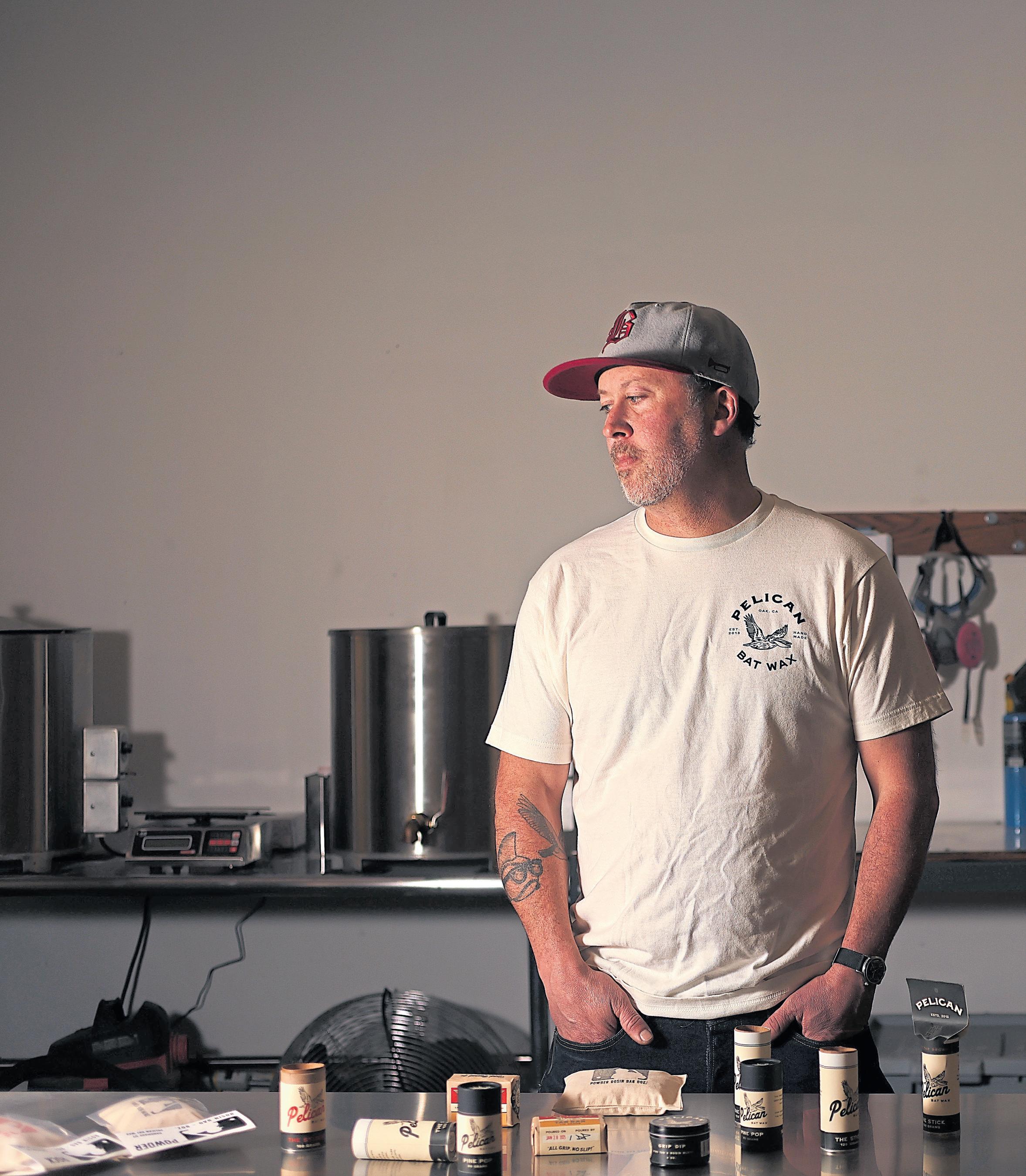




an imaginary team called the San Francisco Pelicans.
Well, he thought it was an imaginary team.
But when he posted a picture of his design online, he got approached by a group of middle-aged guys playing baseball in 1800s uniforms.
Their name? The San Francisco Pelicans.
They told Phillips they play in the Bay Area Vintage Base Ball League, and they loved his design. And they invited him to a pickup game.
Vintage baseball is a bizarre thing at first glance. The players use tiny gloves, akin to the ones used in 1886. The umpire is dressed in a tuxedo and smokes cigars. Players swig from beer cans and shout old-timey sayings. And some of the rules wouldn’t make any sense to a modern fan.
But to Phillips, it was perfect.
“I thought it was a really fresh change, because it was competitive, but everyone was so friendly with each other,” he said.
Phillips joined the league’s Berkeley team, and soon he was channeling his obsession with T-shirt printing into an obsession with baseball accessories.
“I wanted to come up with a product that I could screenprint the design for,” he said.
His product of choice: sticky stuff. There’s plenty of it in baseball, as pitchers and hitters alike search for ways to grip the ball, especially in cold or humid conditions.
He made pine tar sticks to rub all over the bat in the on-deck circle and help prevent it from flying out of hitters’ hands. His
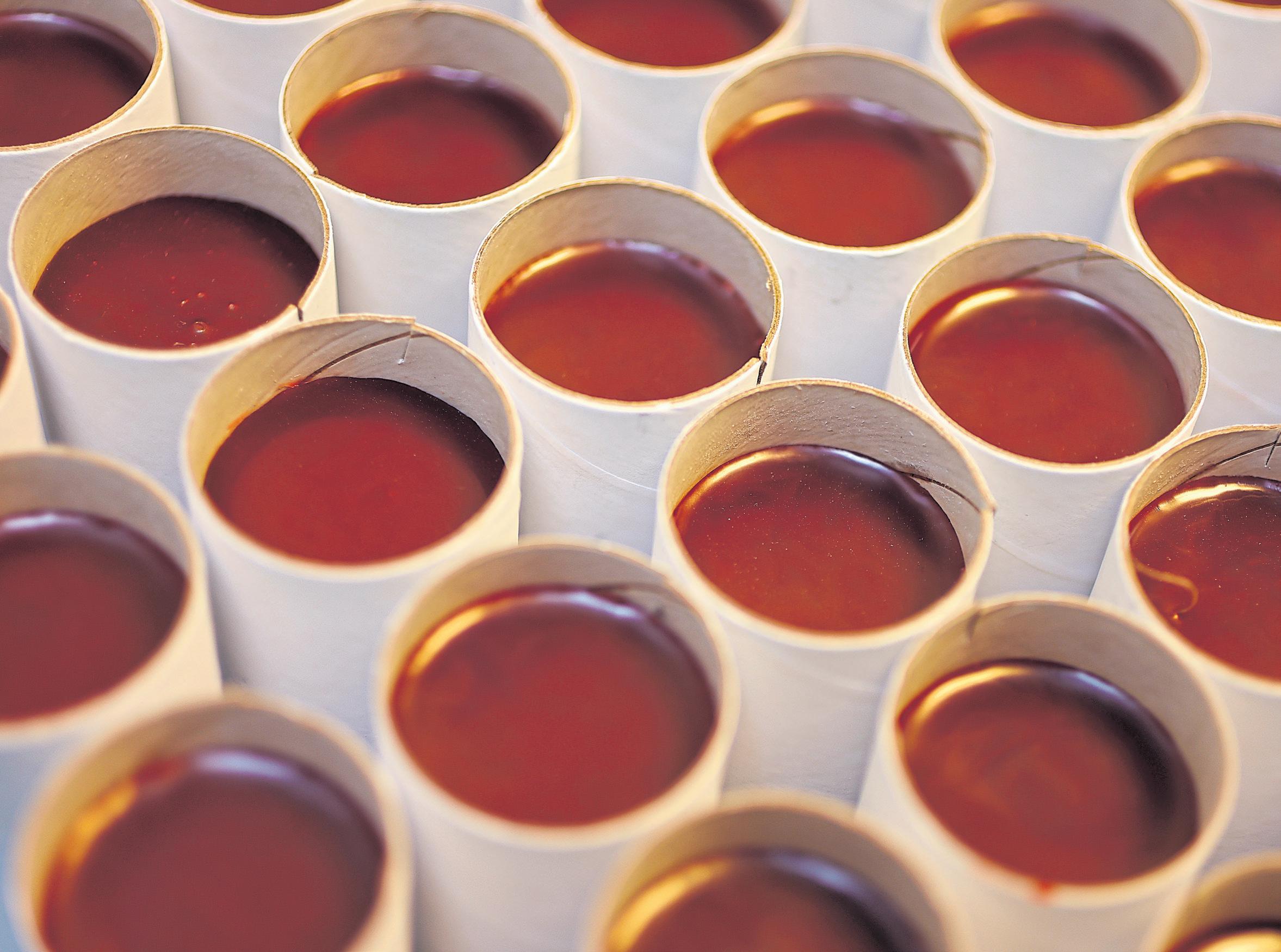
Tubes of bat wax, above, await packaging, while tar bars, right, are wrapped and ready to go at Emeryville’s Pelican Bat Wax workshop.
GripDip was placed in pitchers’ gloves and offered a sticky substance to improve their handle on the ball. His rosin bags were placed behind the pitcher’s mound to offer an alternative.
“The vintage baseball guys got a kick out of it,” he said. “I started taking it everywhere I went. I became obsessed with it. I’m like, ‘This is something I should keep doing.’”
Two years into his experimentation, Phillips sent some of his items to every MLB team. The product still wasn’t very good, he said, but a few players liked the aesthetic and requested more.
One of them was former San Francisco Giants’ slugger Pablo Sandoval.
Sandoval moved to the Boston Red Sox in 2015 and shared the substances with his teammates. Phillips sent more. Soon, multiple big league teams were calling, and Phillips ramped up production.
Then, in 2021, MLB made a historic decision. While there had long been rules against using sticky substances, the


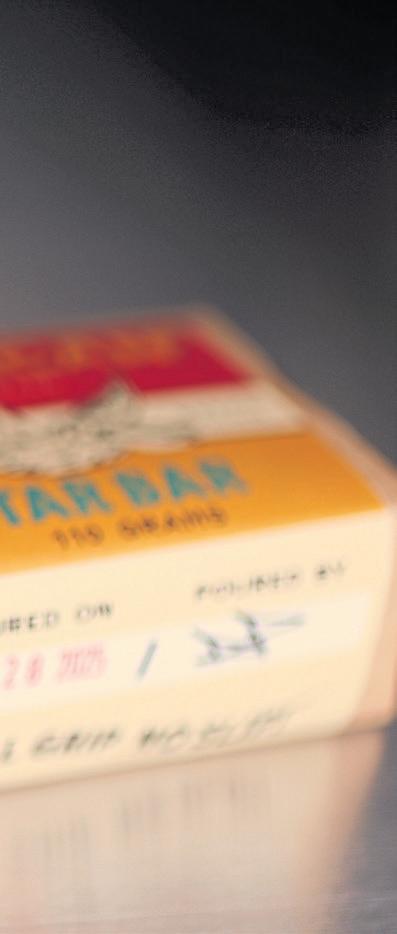

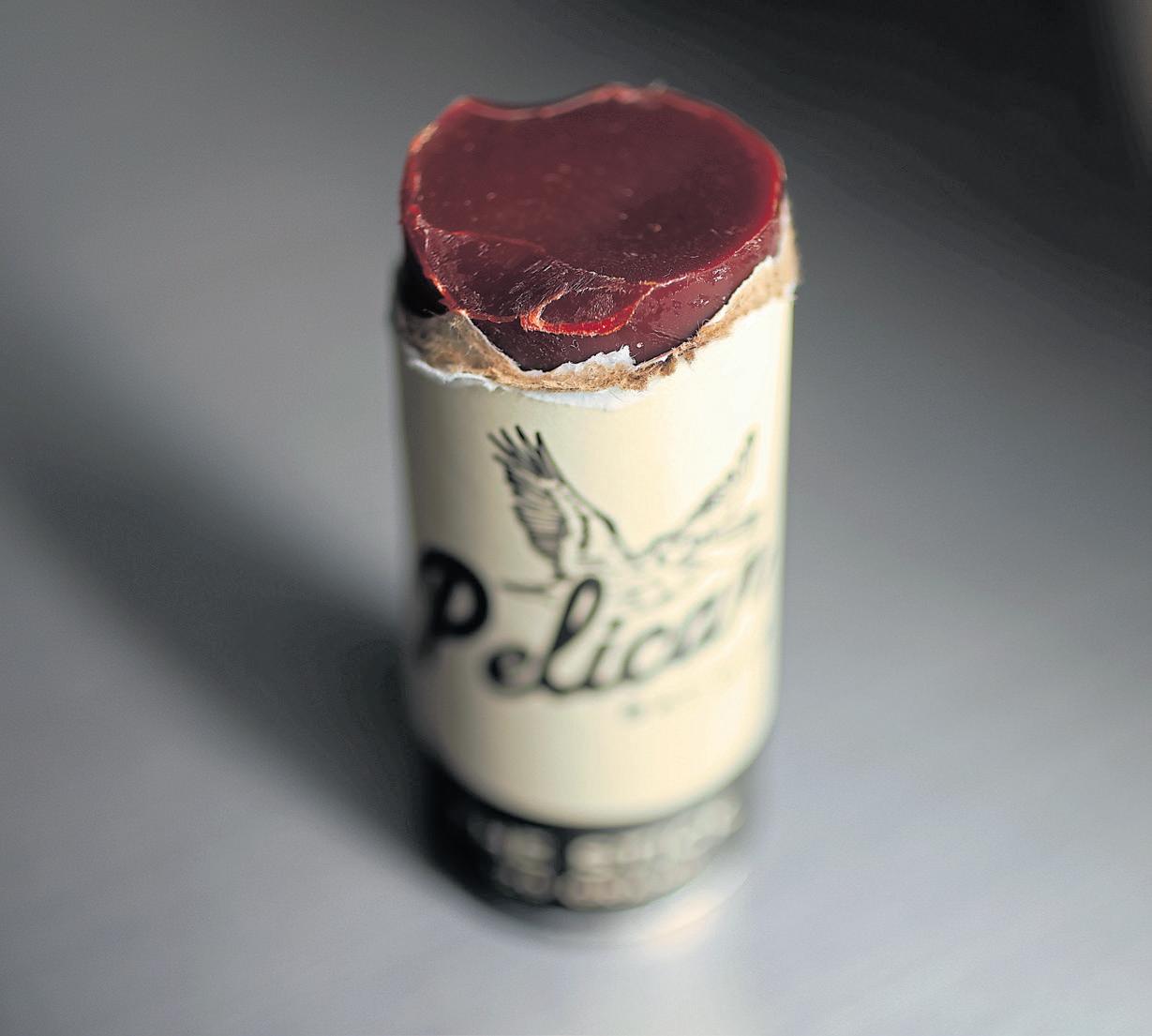
league had rarely enforced those rules, instead allowing players to decide what they thought was acceptable and enforce the rules themselves. MLB wanted to change that.
Suddenly, umpires were ejecting players on a nightly basis. Pitchers were randomly checked throughout a game, and if there was any sticky residue — including from Phillips’ GripDip — on their fingers, they were thrown out and subject to fines and suspensions.
So Phillips called Giants clubhouse manager Brad Grems and suggested MLB standardize a product that every team could use.
At the time, clubhouse attendants were often responsible for grinding rosin in a blender and throwing the results in a sock. Grems connected Phillips with a league executive, and the two started discussing a standardized rosin bag.
Rosin bags are made from sap pulled from pine trees in Honduras, then boiled to distill out the turpentine. What remains is a hard rosin that Phillips crushes and pours into bags.
With player feedback and nearly a year of testing, the league was ready to form a partnership.
In the spring of 2022, Phillips got a phone call.
“How would you like to be the official manufacturer of the rosin bags for MLB?” he was asked.
He quit his part-time bartending job and began producing rosin bags full-time. With the help of a friend who comes by to hold the bags and stamp
them — one side of each bag has the official MLB logo, the other says, “Handmade by Pelican Bat Wax.” — Phillips is producing hundreds of bags per day. He has 5,000 due in mid-March. When the season opens, dozens
“I started taking it everywhere I went. I became obsessed with it. I’m like, ‘This is something I should keep doing.’”
Dave Phillips
of times each game, a big league pitcher will step off the mound between pitches, pick up one of Phillips’ rosin bags, give it a good whack to release some of the rosin and rub the ball to improve the grip.
Most days, Phillips can be found at his Emeryville workshop, but on the weekends, he puts on his vintage baseball uniform and hits the field with his teammates on the Berkeley Clarions.
Much like making rosin bags, putting together a baseball team is a “chemical equation,” Phillips said. “You don’t have to be the best team, but if everyone has the right mentality, plays well together, and nobody feels pressure, they can do something special.”
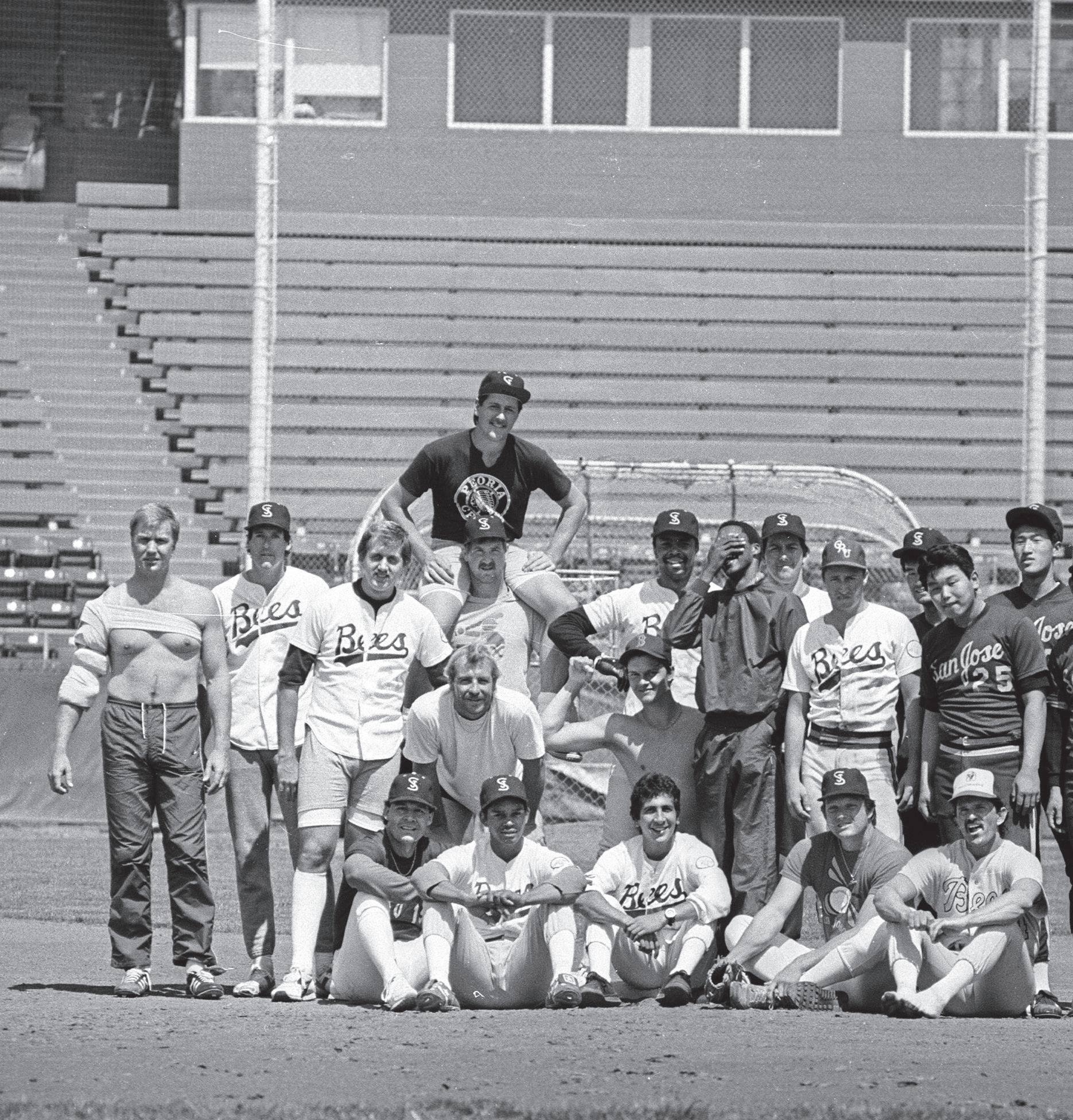

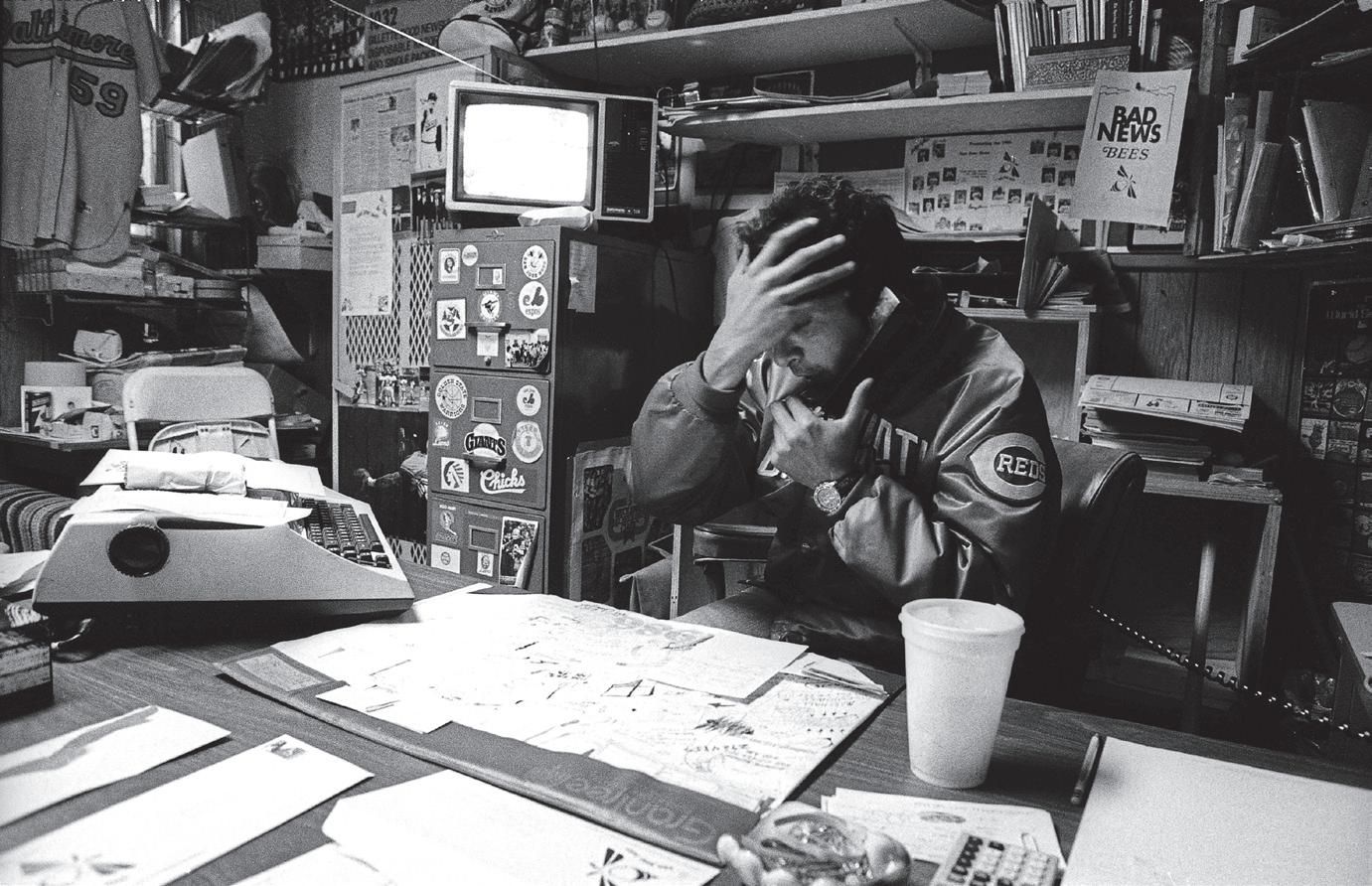
In the spring of 1986, he was the 31-year-old general manager of a low-level minor league franchise that was failing on and off the field and in all likelihood, playing its way out of San Jose.
Then he assembled a hodgepodge collection of nobodies, oddballs and outlaws who also were down to their last strike. Almost overnight, the San Jose Bees became one of baseball’s most unlikely sensations.
When they were done, the unlikely band of brothers had helped save baseball in the South Bay.
“There’s not a day in my life that goes by that something doesn’t jingle my brain to bring me back to that ’86 team,” said Stavrenos, who is retired after more than three decades in baseball and living in his childhood home in Youngstown, Ohio. “It was a one-of-a-kind thing.”
The team even had a memorable — and apt — nickname: The Bad News Bees.
Sound like the makings of a Disney movie? Several attempts have been made over the years, but they never got far. The story of these Bees was always complicated. And rough around the edges; more “Sons of Anarchy” than “Toy Story.”
The players’ ages ranged from 18 to 35. Former
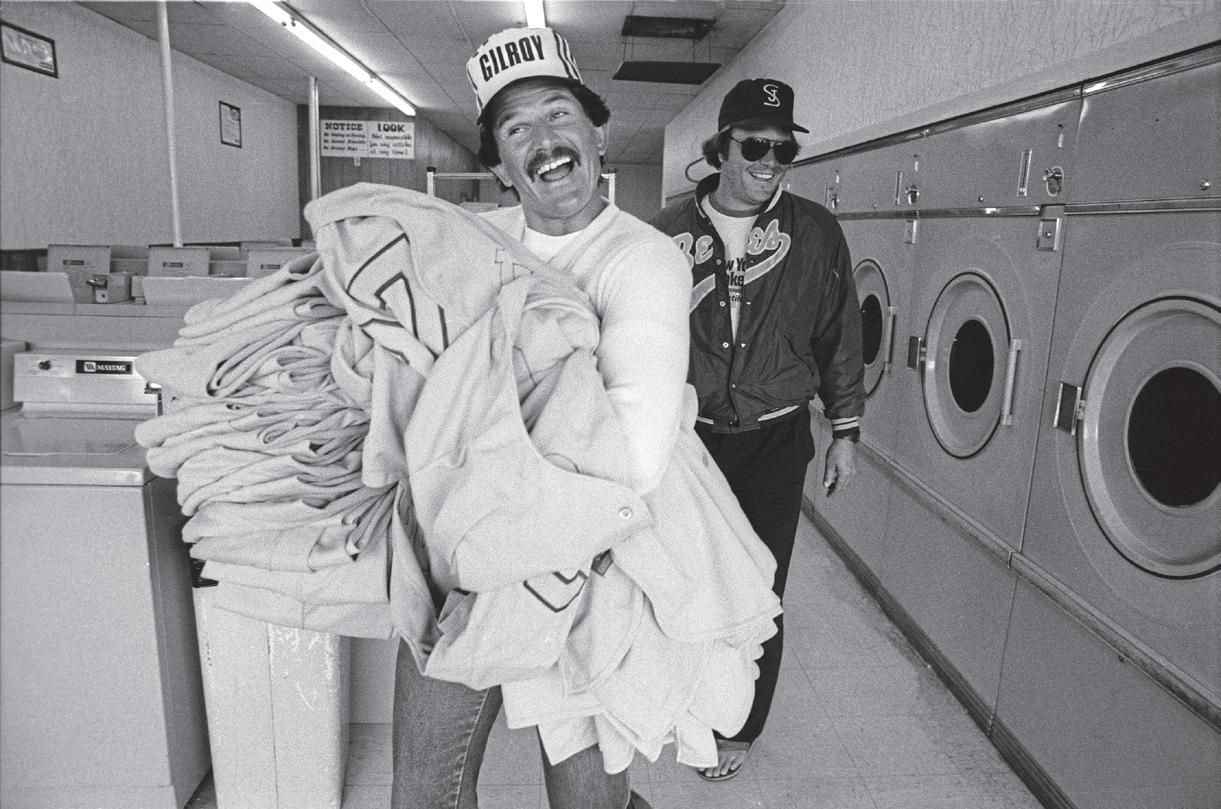
major league stars meshed with never-would-bes and, for good measure, a half-dozen prospects from Japan who didn’t speak English.
Choir boys they were not.
“We certainly didn’t listen to authority, let’s put it that way,” said Kevin Christman, who was just 20 and two years out of San Jose’s Archbishop Mitty High when he spent that season as a Bees backup catcher. “But I don’t think there was one person you wouldn’t call a friend, or if I was standing next to them today, I couldn’t give them a hug. They were great people. Everybody. The entire operation.
“It just happened to be the land of misfit toys.”
Professional baseball in San Jose dates to 1891. Before becoming a San Francisco Giants affiliate in 1988, teams from San Jose served as minor league homes for the A’s, Red Sox, Royals, Pirates, Angels, Mariners and even the Montreal Expos.
But starting in 1983, San Jose was on its own, playing as an
independent team in the Class A California League. The Bees rosters were mostly filled with players no one else wanted.
Losses piled up — 257 in three seasons — and fans stayed away from the then-44-year-old Municipal Stadium. Pro baseball in San Jose was dying.
“It was very disappointing to come out there on a Sunday afternoon, and there’d be 150 people,” recalled Stavrenos, who went by “Harry Steve” back then. “It was an urgent time. We were holding on, just trying to make it as a franchise.”
Everything changed when Stavrenos controversially signed Steve Howe, Mike Norris, Ken Reitz and Daryl Sconiers, recent major league stars who had burned through second (and in some cases, third and fourth) chances because of substance abuse issues.
“I felt like I could still play,” Reitz told Sports Illustrated in 2016. Reitz was an All-Star in 1980 and spent 11 seasons in the majors but hadn’t played in the majors since 1982 because of his addictions. At the suggestion of his father, Reitz gave San Jose
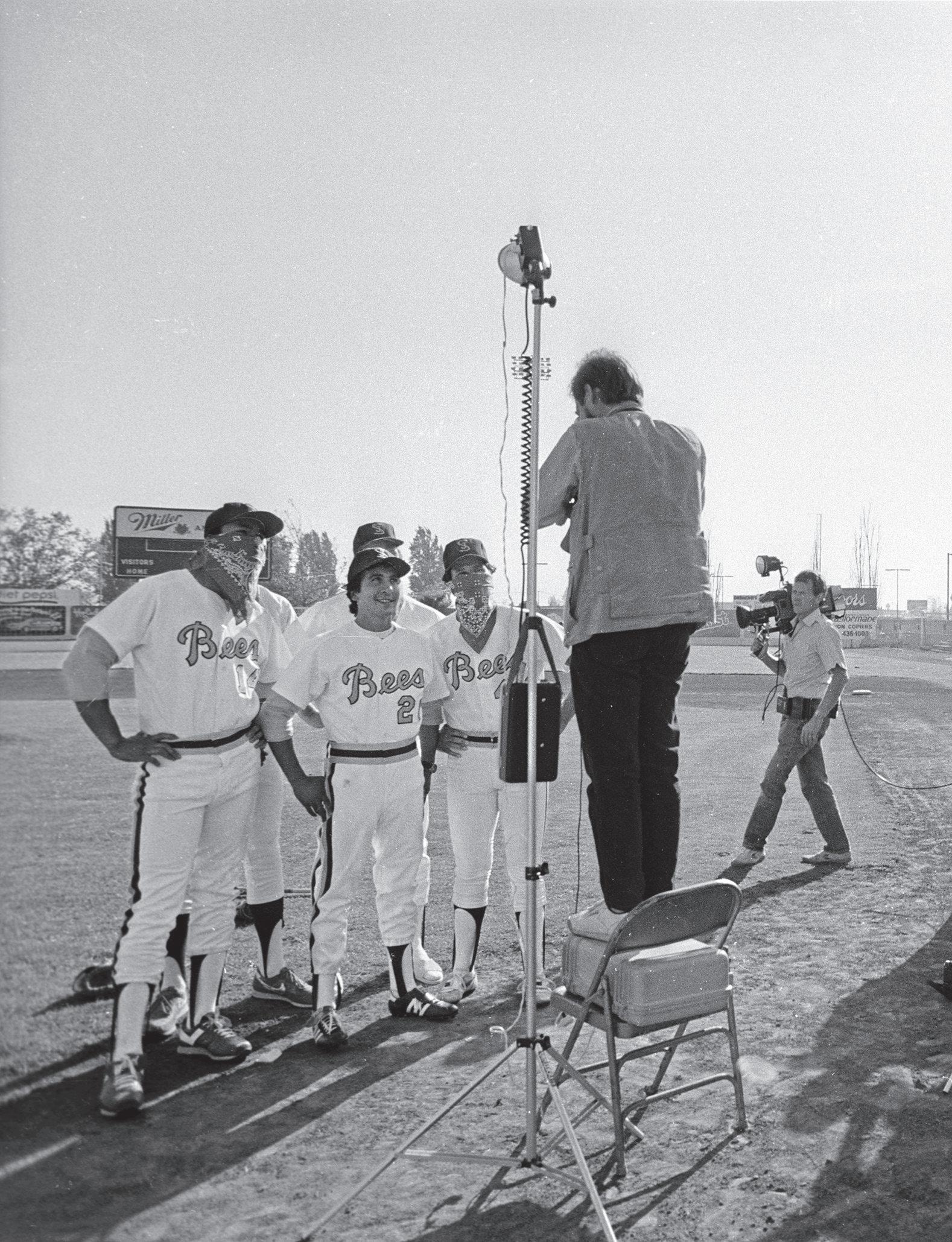
a shot.
“I thought I was going in a rec league,” he told SI. “I didn’t realize we were in the California League.”
Suddenly, the Bees had a lot of people buzzing. Reporters from across the country (and one from England) converged on Muni for the Bees’ first practice.
“We had helicopters flying over the parking lot,” Stavrenos said. “I knew we were going to get some publicity (with the signings), but I didn’t anticipate it happening as much as it did.”
Theories abound about why
there was so much interest in the Bees. Drugs were a big topic at the time: President Ronald Reagan and first lady Nancy had just launched an aggressive anti-drugs campaign, and Major League Baseball was embarrassed by a trial in late 1985 that revealed significant cocaine use on and off the field by players.
It didn’t hurt that Stavrenos and the players were charismatic and embraced the attention.
When USA Today set up a photo shoot, the players gleefully covered their faces with bandanas to look like Wild
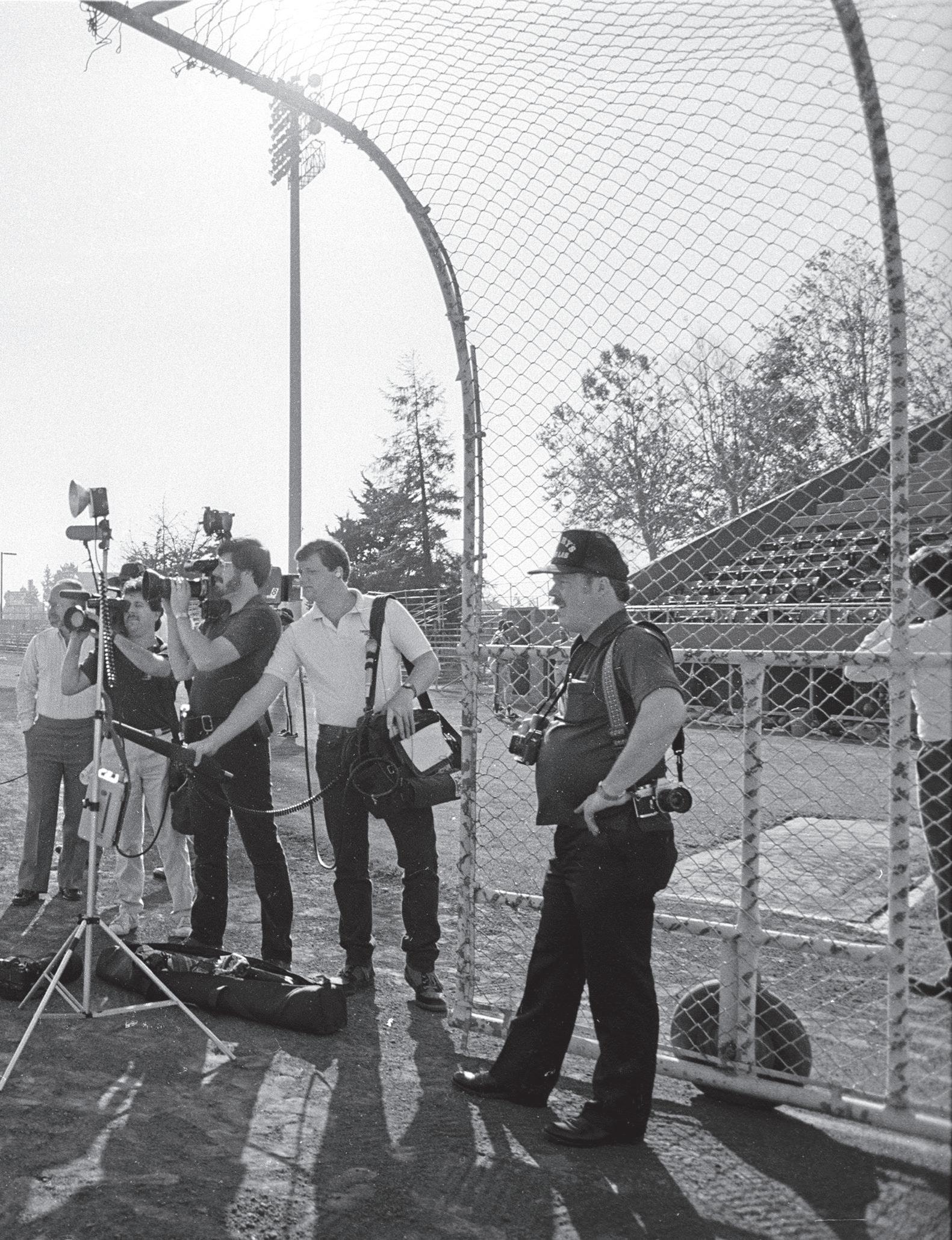
West bandits. They wore Bad News Bees T-shirts, which they handed out from the team bus. Four players lived in a storage room under the concrete Muni grandstand and were more than happy to give tours. And the players openly shared tales about the various transgressions that landed them in San Jose — and the ones that followed them to town. Even on their best behavior, players would occasionally disappear for several days, then return to Muni for batting practice.

two dozen before the 1986 season. Eventually, they were reinstated, but there was another group of substance abusers who couldn’t find a second chance.
Stavrenos viewed that group as his potential free agent class.
The first into the fold was Reitz, who at 35 would be the oldest Bee — and quickly was named team captain. Then came Norris, another San Francisco native who finished second in the Cy Young voting with the A’s just six years earlier before drugs torpedoed his career.
“Once a couple of them signed, the word got out and sorta opened the floodgates,” Stavrenos said.
“The overall goal was behave, let’s open some eyes with our talent, and hopefully we can move some guys back into ‘real baseball,’” Stavrenos said. “I knew it wasn’t going to be easy. It was a battle for them. Same with any addiction. But they had a purpose.
In the wake of the cocaine scandal, then-commissioner Peter Ueberroth had suspended 11 players and penalized another
The biggest addition by far was Howe.
The hard-throwing lefthander was the NL Rookie of the Year in 1980, saved the Dodgers’ World Series-clinching game over the Yankees in 1981 and a year later was an All-Star. But by 1986, at the age of 28, Howe had washed out of the majors because of his cocaine and alcohol use.
“Who doesn’t deserve a second chance?” Stavrenos said. “That’s why they put erasers on pencils.”
The signings ruffled more than a few feathers, but Cal League commissioner Joe Gagliardi gave his blessing, noting that since the Bees had no MLB affiliation, “if Harry wanted to sign King Kong, he can sign King Kong.”
In all, the Bees used 14 former major leaguers. Only a handful had substance issues. But that mattered little to opposing fans who hurled insults at the Bees wherever they went.
“We were pretty much villains in ’86,” Stavrenos said. “But we liked it.”
The other owners were enjoying the ride, too.
“When the traveling circus is coming to your town, you’ve got a way bigger chance to draw more people,” Stavrenos said.
“People wanted to see Norris, Howe and Sconiers and all those guys other than the usual ragtag San Jose team.”
Not all the media attention was positive, either. The club was dubbed, among other things, the Bad Nose Bees and the Dirty Dozen. They were savaged so badly in Rolling Stone that, a decade later, the writer apologized for betraying the team’s trust.
It didn’t take long to see what the season was going to look like. Following the team’s first night practice at Muni, the group assembled in the locker room to receive a scouting report about San Jose life. Above all else, they were told, avoid a specific downtown establishment because of its links to drugs and crime.
All the players nodded, and the group broke up. Several hours later, Stavrenos’ route home took him past the bar.
“Every car that I knew our guys had was in that parking lot that night,” he said. “I just shook my head and started laughing. I said, ‘This is going to be a long year.’
“I was sort of proud of them, to tell you the truth. They were all in there together.”
Other notable moments from the Bees’ season:
Most of the players were making around $350 a month, and even then, accommodations around the Bay Area weren’t cheap. So four players bunked at the stadium. The living space was dubbed The Stadium Hilton and had, among other amenities, a black and white TV, a neon beer sign, carpet remnants and a “do not disturb sign” from … Holiday Inn.
Darryl Cias, a former A’s catcher, painted a massive mural commemorating the “Bad News Bees” that included the names of players who had been cut or suspended during the season.
About a month before the season opener, the team’s manager, Frank Verdi, took a scouting job with the Yankees. Stavrenos, whose managing experience had been limited to the Strat-o-matic board game, decided to give it a shot.
“I never, ever planned on managing,” Stavrenos said. “But I knew why I picked every one of these guys.”
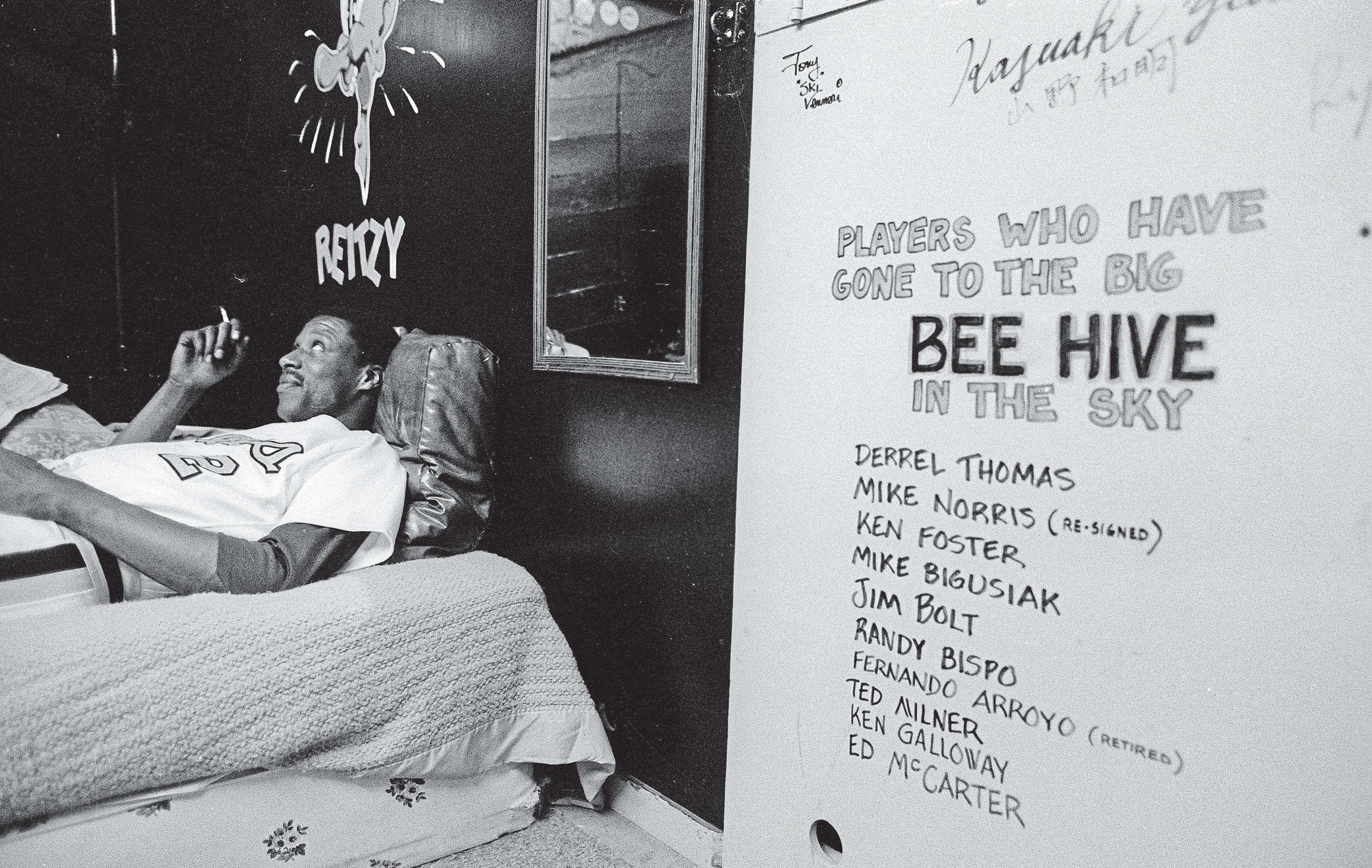
Stavrenos said the toughest part of his job was having to cut players in a season that eventually saw 42 players rotate through. After telling Ted Milner he was no longer with the team, Stavrenos learned the 25-year-old outfielder had no way to get home to Southern California. Stavrenos lent him his car.
“Harry couldn’t really judge talent, but in his heart he was a really good guy,” Milner told Sports Illustrated.
Norris had been in rehab multiple times and jailed briefly in the Dominican Republic before landing with the Bees. When he made his San Jose debut, teammates had tiny white chalk “lines” waiting for him on the pitcher’s rubber.
“I can see him right now, laughing his head off,” said Christman, who caught for Norris that day.

It wasn’t unusual for towns around the Cal League to greet the Bees with banners mocking the team as druggies, and boos from the stands far outnumbered the cheers. But one night in Bakersfield, taunts turned into a full-out brawl in the stands.
Stavrenos was in the bleachers that night, suspended by the president of the minor leagues for allowing Howe to pitch while results of a drug test were pending. Fans recognized Stavrenos, who was wearing a Bees polo shirt, and began heckling him.
After several innings, things intensified to the point where Bees players decided to defend their GM.
“They were protective of me,” Stavrenos said. “Everybody got punched that was in the way. Everybody. All the way up the bleachers.
“I can remember when it was over, all you saw on the field was the gloves.”
Stavrenos added, “But that is what we were all about. It was us against the rest of the world.”
The cinematic ending to the story of the 1986 Bees would include a championship and long careers for everyone. But life isn’t a movie, and the Bees were far from perfect.
They went 65-77 and finished 14 games out of first place in the North Division. Only the 102loss Bakersfield Dodgers had a worse record in the Cal League. Despite the former major leaguers, San Jose was last in runs scored and home runs, and only three teams had a lower batting average. The Bees were fifth in the league in team ERA.
Howe was outstanding, logging a 1.47 ERA, but he didn’t last the season before receiving another suspension for drug use. A year later, he was back in the majors with the Rangers, only to be released before the 1988
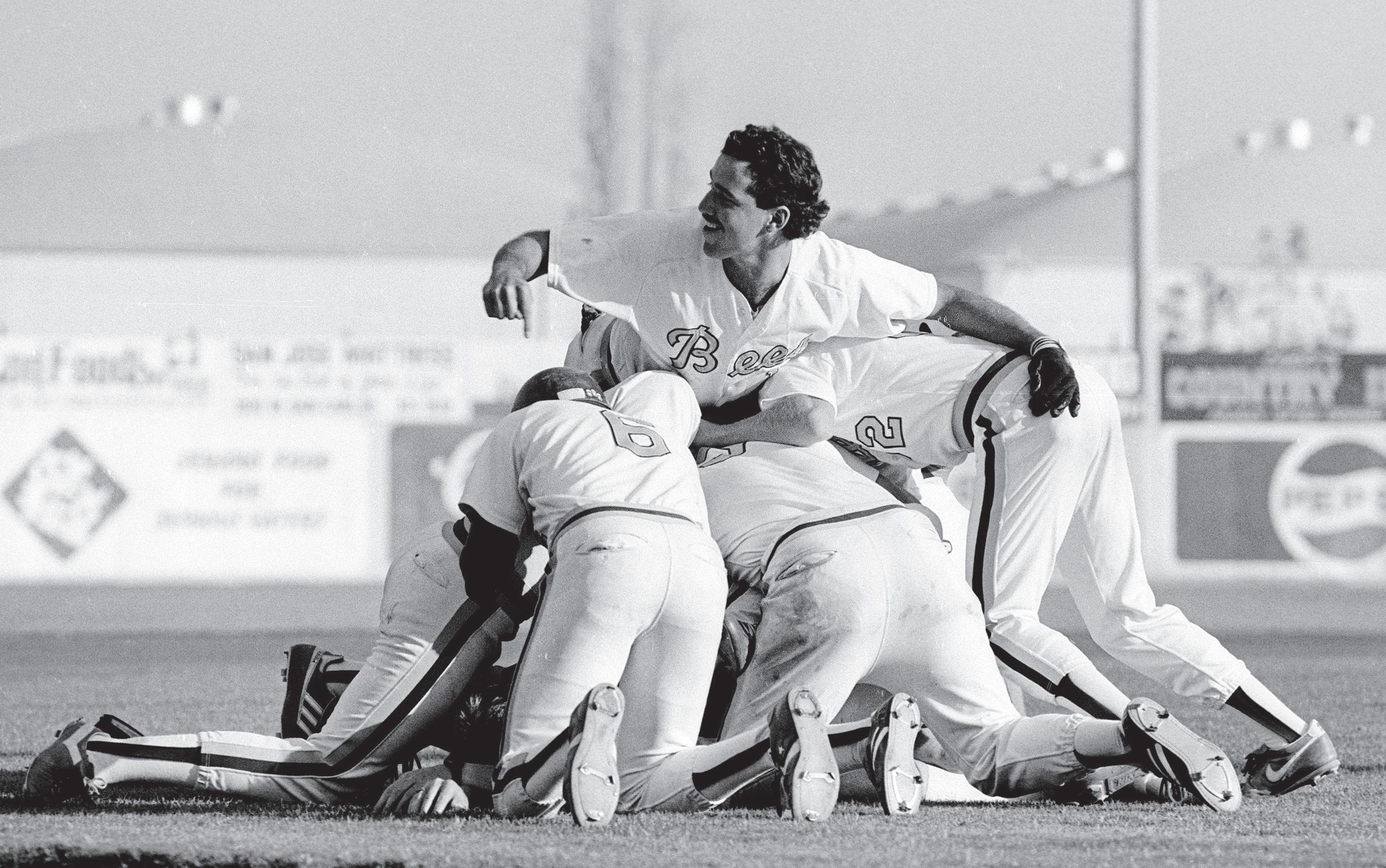
season because of an alcohol problem. In 1991, he resurfaced with the Yankees, pitching in parts of six straight seasons with New York — despite receiving another ban in 1992 — before he was released in the middle of the 1996 season. Howe died in a single-vehicle accident in 2006 at age 48.
The Bees didn’t open as many doors back to “real baseball” as hoped, either.
Of the 42 Bees who suited up that season, half never played pro ball again.
Reitz was one of just a handful of the ’86 players to return to San Jose the following season, then returned to St. Louis, where he spent most of his MLB career and was involved in establishing drug education programs for youths in the area.
The grandfather of six died in 2021 at age 69.
Four other players got back to the majors, including Norris, who earned a win for the A’s in
Jose Bees players pile on manager Harry Stavrenos after the final game of the season at Municipal Stadium.
1990 — 15 years and one day after he pitched a shutout victory in his debut with that team. Norris still lives in the Bay Area, where he founded the Mike Norris Baseball and Wellness Program.
Christman, the Mitty High grad, began the season as the Bees bullpen catcher. He ended up playing in 25 games and received the baseball education he credits with preparing him for a baseball career that spanned four decades and earned him three World Series rings as a scout for the Giants.
“I probably learned more in life in a short period of time playing for the Bees than I learned in my, at that time, entire 20-year-old life,” said Christman, who was hired as a scout by the Milwaukee Brewers in the spring of 1987 and then briefly worked as a player agent before joining the Giants scouting department. He retired in 2019 and lives with his family
in Indiana.
Stavrenos’ career in baseball spanned nearly three decades. He was a scout with the Giants, owned teams in the independent Northern League and even served as the league’s director of baseball operations.
But he never experienced anything quite like the 1986 Bees, who might have become San Jose’s last team if his experiment had failed. The team’s success — combined with the ballpark in Fresno, then the Giants’ Cal League affiliate, being condemned — led to a working agreement that’s been in place since 1988.
“It was a perfect world. We were finally a farm club of the Giants,” said Stavrenos, who remained part of the San Jose Giants ownership group until 2003. “We paid the price those other years. It was a lot of work, but it was a lot of fun.
“That the franchise is still there (makes) it all worth it.”
BY JUSTICE DELOS SANTOS
With all due respect to the American League, the National League is currently in a class of its own.
The NL not only boasts the defending champions in the Los Angeles Dodgers, who used the offseason to add even more talent to an already loaded roster, but features at least five teams with legitimate World Series aspirations.
The New York Mets gave Juan Soto a record-setting 15-year, $765 million contract, and the Arizona Diamondbacks signed ace Corbin Burnes to a six-year, $210 million deal, but the Dodgers added Roki Sasaki and Blake Snell, among others, to a team already featuring a laundry list of All-Stars and superstars.
Let’s try to predict who will win the divisions, who will make the playoffs and which players will take home hardware.
The Los Angeles Dodgers will be favored to win the NL West for the 12th time in the past 13 seasons, with a lot of help coming from dual threat
Shohei Ohtani, right, who could net his fourth MVP season in 2025.
ASHLEY LANDIS/ ASSOCIATED PRESS

1. Los Angeles Dodgers
2. Arizona Diamondbacks (Wild Card)
3. San Diego Padres
4. San Francisco Giants
5. Colorado Rockies
The Dodgers will be heavily favored to win this division for the 12th time in the last 13 seasons, but the real intrigue lies in the next three spots. San Diego remains talented, but the combination of its current ownership situation, missing out on Sasaki, letting Ha-Seong Kim and Jurickson Profar walk and Joe Musgrove undergoing Tommy John surgery could be too much to overcome. Along with adding Burnes to a rotation already featuring Zac Gallen, Merrill Kelly, Brandon Pfaadt, Eduardo Rodriguez and Jordan Montgomery, the Diamondbacks addressed the loss of Christian Walker by trading for Josh Naylor.
1. Chicago Cubs
2. Milwaukee Brewers
3. Cincinnati Reds
4. Pittsburgh Pirates
5. St. Louis Cardinals
Aside from the Cubs, is there any team that objectively got better? Chicago made one of the offseason’s biggest moves by acquiring star outfielder Kyle Tucker from the Houston Astros, but would this team finish first in any other division?
The Brewers, who are mourning the passing of the legendary Bob Uecker, lost Willy Adames to the Giants in free agency, then traded star closer Devin Williams to the New York Yankees. The Pirates and Reds, now led by Terry Francona, boast two immensely talented pitching staffs, but neither team appears to have enough offensive punch.
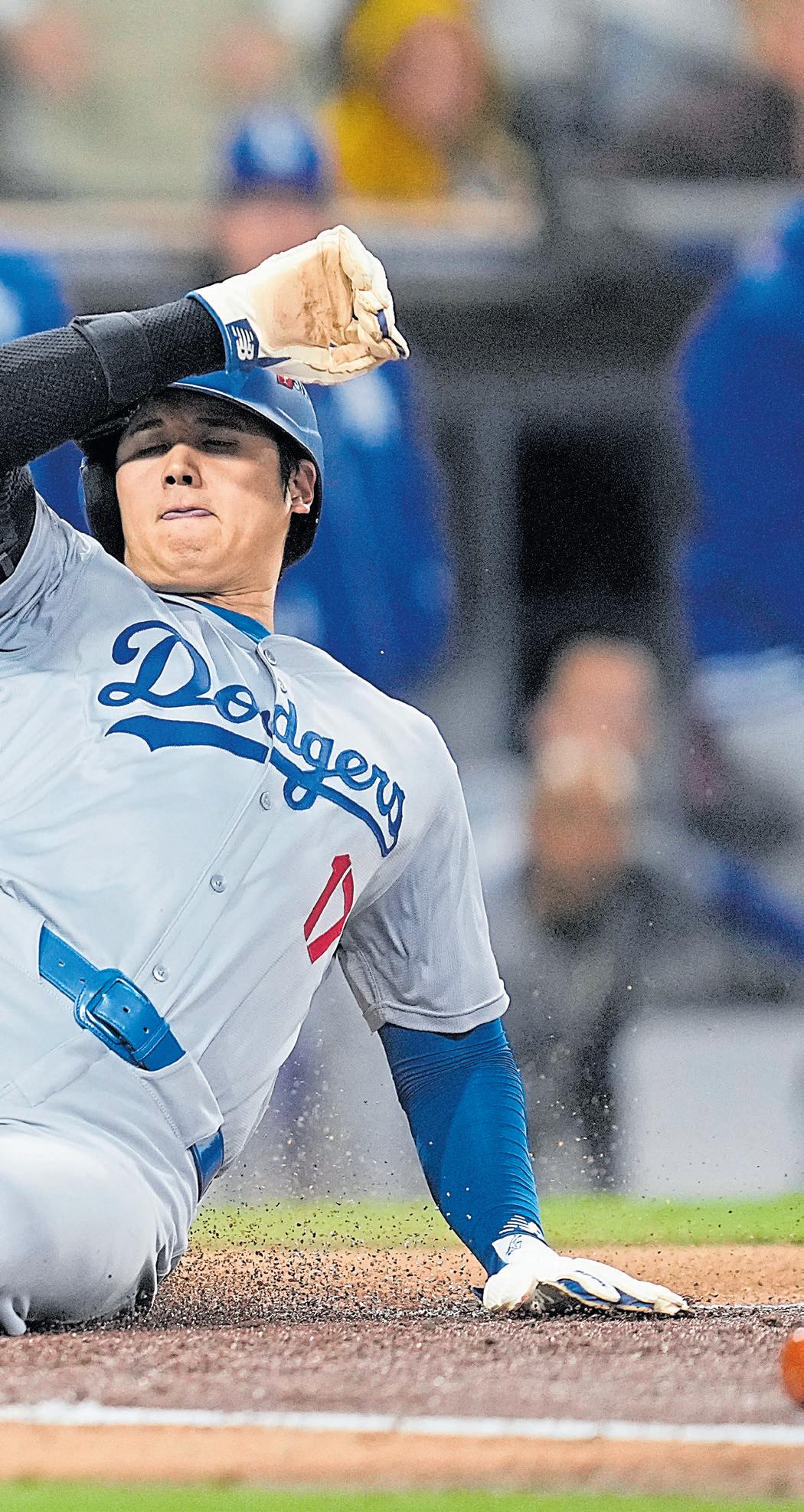
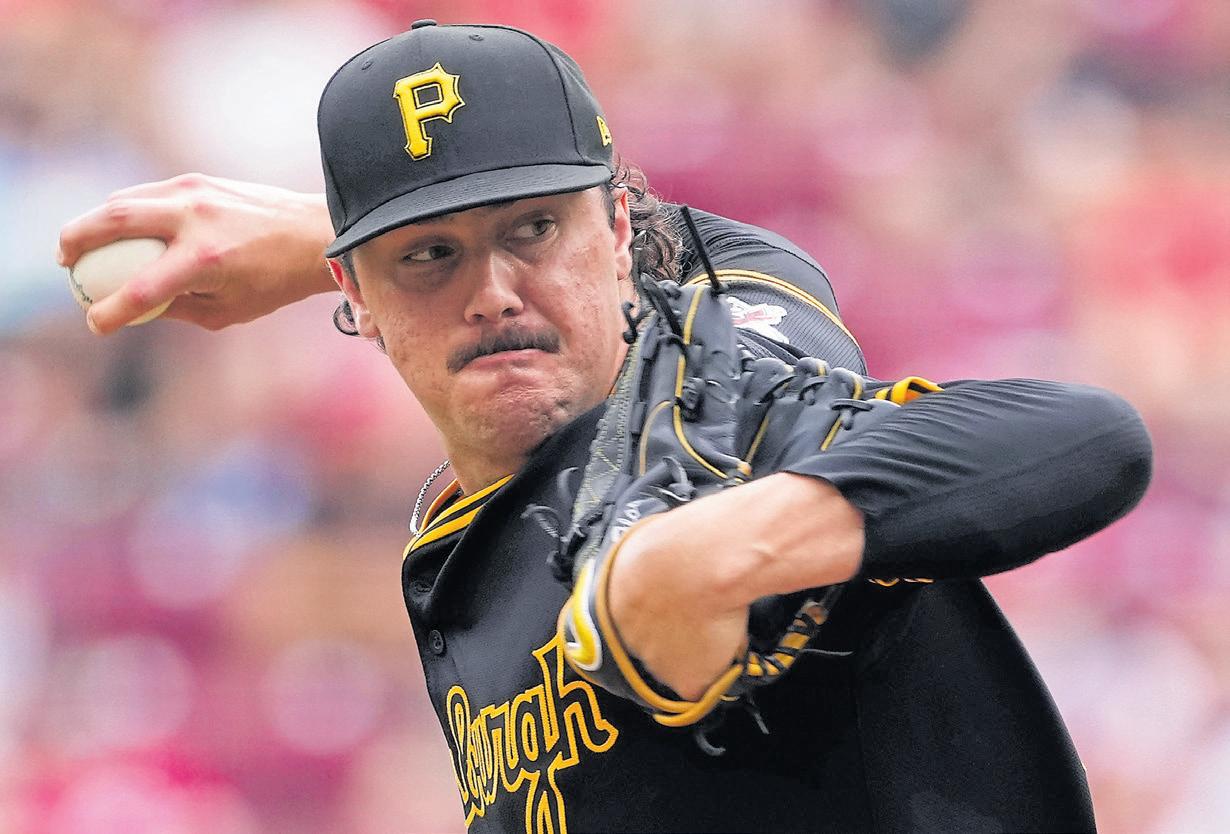
In just 23 starts in 2024, Pittsburgh Pirates pitcher Paul Skenes had a 1.96 ERA with 170 strikeouts over 133 innings. Skenes finished 10th in all of baseball in WAR (4.3) and finished third for the NL Cy Young Award.
KAREEM ELGAZZAR/ASSOCIATED PRESS
Shohei Ohtani (Dodgers)
The Steve Cohen-led Mets dolled out the single biggest contract in sports history, poaching Soto from the New York Yankees to the tune of $765 million — with no deferrals. The Phillies, though, stand to maintain their hold on the division. Philadelphia didn’t make a huge splash but beefed up the rotation with Jesús Luzardo, added Jordan Romano and Joe Ross to the bullpen and signed outfielder Max Kepler. Atlanta will be without ace Spencer Strider and 2023 NL MVP Ronald Acuña Jr., but both will likely return in time for the stretch drive. When Acuña returns, the trio of Acuña, Profar and Michael Harris II could be one of baseball’s best outfields.
Other candidates: Juan Soto (Mets), Francisco Lindor (Mets), Mookie Betts (Dodgers), Corbin Carroll (Diamondbacks), Fernando Tatis Jr. (Padres), Kyle Tucker (Cubs), Oneil Cruz (Pirates), Jackson Chourio (Brewers)
Ohtani is in the midst of one of the greatest stretches in the history of the sport. He’s won MVP in three of the last four years, and he would’ve won in 2022 if not for Aaron Judge having one of the best individual seasons of this millennium.
In his first year with the Dodgers, Ohtani formed the 50-50 club and helped the Dodgers win their second World
Series in the last five years — all while recovering from elbow surgery that kept him off the mound.
The two-way superstar’s offensive numbers will likely dip as he returns to the mound (especially the steals). It’s also far from a guarantee that he’ll be in ace form after undergoing a second elbow ligament reconstruction. But if Ohtani posts anywhere near his season averages, a fourth MVP will soon be in his possession.
Paul Skenes (Pirates)
Other candidates: Zack Wheeler (Phillies), Blake Snell (Dodgers), Chris Sale (Braves), Logan Webb (Giants)
Skenes didn’t even need a
full season to declare that, with respect to Tarik Skubal, he was the best pitcher on the planet. He started the All-Star Game despite spending the first month in Triple-A, then was named NL Rookie of the Year and finished third for the NL Cy Young Award.
The numbers alone are plenty impressive. Over 133 innings, Skenes had a 1.96 ERA with 170 strikeouts. Despite making just 23 starts, Skenes finished 10th in all of baseball in WAR (4.3). But the numbers alone only paint a partial picture. Every Skenes start was an event, a reminder of the unparalleled aura that a truly elite starting pitcher can possess.
Roki Sasaki (Dodgers)
Other candidates: Dylan Crews (Nationals), Andrew Painter (Phillies), Bubba Chandler (Pirates)
In the end, it was always going to be Los Angeles.
As Skenes graduates from rookie status, Roki Sasaki will take the reins as the latest mustwatch first-year pitcher. During his four years in Japanese pro ball, “The Monster of the Reiwa Era” had a 2.02 ERA over 414 2/3 innings with 524 strikeouts. With a combination of a midto-high 90s fastball and a devastating splitter, Sasaki has the potential to become one of baseball’s best pitchers. Now, he joins the Dodgers to form a rotation that’s talented from top to bottom.
BY LAURENCE MIEDEMA
Anything is possible in the American League.
Eleven of the 15 teams have reached the playoffs — and three different teams have represented the AL in the World Series — since 2021. And the races appear even more wide open in 2025.
Most of the blockbuster moves this winter were made by National League teams, and some of the biggest stars on the move — Juan Soto, Corbin Burnes and Kyle Tucker — jumped to the NL from AL teams. But some of the best young talent in the game resides in the AL, which should create deep and competitive races in all three divisions.
Even the A’s, two years removed from a 112-loss season, might find themselves in the mix for a playoff spot in their new temporary home in Sacramento.
Let’s try to predict who will win the divisions, who will make the playoffs and which players will take home hardware.
The Detroit Tigers had the best record in the AL after last year’s AllStar break (3926). The Tigers should win the AL Central and could be in the World Series conversation with Cy Young contender pitcher Tarik Skubal on the mound.
JASON MILLER/ GETTY IMAGES

1. Seattle Mariners
2. Texas Rangers
3. Houston Astros
4. Athletics
5. Los Angeles Angels
After four consecutive AL West titles and another roster overhaul, the Astros might finally be running out of steam. The Mariners appeared poised for a massive breakthrough after they ended their playoff drought in 2021 and finally may put it all together after a disappointing 2024. Seattle was 10 games up in the West in mid-June, then went 25-39 to fall out of the race, only to rally and miss the playoffs by one game. Seattle has the best starting pitching in the AL, and Julio Rodriguez is poised for an MVP run. The Rangers’ World Series title defense was undercut by injuries and inconsistency, but they are the most complete team in the division, and ace Jacob deGrom appears healthy.
1. Detroit Tigers
2. Kansas City Royals (Wild Card)
3. Cleveland Guardians
4. Minnesota Twins
5. Chicago White Sox
The Central isn’t the best division in the AL, but it might be the deepest. And it is a threat once again to produce half the league’s playoff field, in large part because the four other teams play 13 games each against the still woeful White Sox, who established a modern-era record with 121 losses. Detroit had the best record in the AL after last year’s All-Star break (39-26) and is a serious World Series contender. Royals star Bobby Witt Jr. emerged as the best shortstop in baseball — and he’s just 24. Cleveland did more with less last season to win the division and gets ace Shane Bieber back after missing last season with elbow surgery.

1. New York Yankees 2. Baltimore Orioles (Wild Card)
3. Boston Red Sox (Wild Card)
4. Tampa Bay Rays
5. Toronto Blue Jays
The Yankees are doing their best to separate themselves from the rest of the league. New York ended a 14-year drought and returned to the World Series last fall, only to lose to the Dodgers in five games. But no AL team was more aggressive than the Yankees this winter, despite losing Soto to the Mets. The Orioles boast an exciting young lineup, have solid starting pitching and expect star closer Felix Bautista back after elbow surgery but will have their hands full holding off Boston, which might be the most improved team in the league.

76 extra-base hits and a slash line of .277/.350/.516 the past four seasons and could be in the race for NL MVP.
Jose Ramirez (Guardians)
Other candidates: Bobby Witt Jr. (Royals), Aaron Judge (Yankees), Julio Rodriguez (Mariners), Tarik Skubal (Tigers), Gunner Henderson (Orioles), Wyatt Langford (Rangers)
Judge had another magical offensive season in 2024, capturing his second MVP in three seasons after hitting .322 with 58 home runs and 144 RBIs. He could come close to duplicating those numbers in the beefed-up Yankees lineup, although it’d be the first time in his career he had back-to-back monster seasons. Witt and Rodriguez will be in the MVP hunt for years to come. But the time may finally arrive for Ramirez, the Guardians’ Mr. Dependable.
Ramirez has averaged 76 extra-base hits and a slash line of .277/.350/.516 the past four seasons. He was fifth in the MVP race last season, the fifth topfive finish in eight seasons, including a runner-up to Jose Abreu in 2020.
Tarik Skubal (Tigers)
Other candidates: Garrett Crochet (Red Sox), Emmanuel Clase (Guardians), Max Fried (Yankees), Logan Gilbert (Mariners), Jacob deGrom (Rangers), Josh Harder (Astros), Mason Miller (A’s)
The AL has plenty of live arms, but Skubal, 29, appears poised for a long run as the ace of the league. It doesn’t hurt that the Tigers appear on the brink of a breakout of their own. Last season, the 6-foot-3 lefty won the AL pitching Triple Crown — leading the league in wins (18), ERA (2.39) and strikeouts (228). No pitcher had done that in a full
season since Justin Verlander (AL) and Clayton Kershaw (NL) in 2011.
Skubal, whose family lived in the East Bay when he was a child, has the lowest ERA (2.51) and most strikeouts (330) in the majors since he missed the start of the 2023 season with flexor tendon surgery.
Travis Bazzana (Guardians)
Other candidates: Jasson Dominguez (Yankees), Jackson Jobe (Tigers), Roman Anthony (Red Sox), Kumar Rocker (Rangers), Jacob Wilson (A’s), Kristian Campbell (Red Sox)
The safe picks are Dominguez and Jobe, who retained rookie eligibility despite debuting in the majors last season and enter favorable spots in the Yankees lineup and Tigers’ rotation, respectively. But Bazzana, the first overall pick in the draft last June, might be a quick mover and game-changer when he arrives.
The 22-year-old Australian only played 27 games at high-A last season in his pro debut, posting a slash line of .238/.369/.396 in 122 plate appearances. But he’s hit everywhere he’s played,and the Guardians appeared to create an easier path to the big league lineup this winter when they traded former All-Star and three-time Gold Glove winner Andres Gimenez to the Blue Jays.
Here’s a look at some of the top players across the league with new teams this spring:
Pos Name Current team Previous team
OF Juan Soto Mets Yankees
SS Willy Adames Giants Brewers
SP Corbin Burnes Diamondbacks Orioles
OF Kyle Tucker Cubs Astros
SP Blake Snell Dodgers Giants
SP Max Fried Yankees Braves
SP Garrett Crochet Red Sox White Sox
OF/1B Cody Bellinger Yankees Cubs
SP Walker Buehler Red Sox Dodgers
2B Jonathan India Royals Reds
RP Devin Williams Yankees Brewers
OF Jurickson Profar Braves Padres
SS Ha-Seong Kim Rays Padres
OF Anthony Santander Blue Jays Orioles
3B Isaac Paredes Astros Tigers
1B Christian Walker Astros Diamondbacks
2B Gleyber Torres Tigers Yankees
SP Luis Severino Athletics Yankees
2B Andrés Giménez Blue Jays Guardians
SP Brady Singer Reds Royals
SP Jesús Luzardo Phillies Marlins
1B Josh Naylor Diamondbacks Guardians
BY JUSTICE DELOS SANTOS
Baseball has always been about numbers.
For decades, fans relied primarily on the statistics that graced box scores, baseball cards and the good old Baseball Almanac to evaluate players. Pitchers were judged on wins, losses, earned run average and strikeouts, while hitters were graded on batting average, home runs and RBIs for hitters. How times have changed.
There have never been more publicly available statistics in the history of recorded baseball. Traditional numbers are still informative, but there are now a laundry list of advanced stats at every fan’s disposal for deeper dives. Debates over Willie, Mickey and The Duke would look a lot different with contemporary data sets.
With so many stats available, which of them matter? Why do they matter? And how do they help us evaluate players?
Here are several stats to help serve as an introduction to the world of sabermetrics:
Definition: WAR, otherwise known as Wins Above Replacement, is an attempt to take all of a player’s contributions and summarize them into one number.
How to interpret: WAR is a cumulative stat. Generally speaking, for position players and starters, bench players are 0-1; fringe starters are 1-2; solid starters are 2-3; good players are 3-4; All-Stars are 4-5; superstars are 5-6; and MVPs are 6+. Relief pitchers are considered excellent if they crack 1 WAR and elite if they crack 2 WAR.
Worth noting: There are two

popular forms of this stat: bWAR refers to Baseball Reference WAR, while fWAR refers to FanGraphs WAR. These two sites use different methodologies, which can result in different numbers. For example, last season, Matt Chapman was worth 5.5 fWAR but 7.1 bWAR.
Example: Chapman led all Giants in fWAR (5.5), while Logan Webb led all Giants pitchers (4.4).
Why it’s important: WAR is an attempt to answer a simple question: Just how valuable is an individual player? WAR is not an exact science and more of an estimate, but the players who accumulate the most WAR in a season generally align with being the best players.
Definition: OPS+ is an advanced version of OPS, or on-base plus slugging. OPS+ takes into account a player’s ballpark and the current run environment (i.e. how many or few runs the league is producing), among other factors.
How to interpret: The average OPS+ is 100. If a player has an OPS+ of 105, for example, that player is five percent better than league average. If a player has an OPS+ of 95, that player is five percent worse than league average.
Example: In 2024, Tyler Fitzgerald and the Brewers’ William Contreras both had an OPS of .831, but Fitzgerald (136 OPS+) had a higher OPS+ than Contreras (129 OPS+), due in part to Oracle Park being more pitcher friendly than American Family Field.
Why it’s important: Context is everything. Some hitters have

the luxury of hitter-friendly confines, while others endure pitcher-friendly establishments. Additionally, a .900 OPS with 30 homers in 1968, the Year of the Pitcher, is different from a .900 OPS with 30 homers in 2019, the season where a league-record 6,776 home runs were hit. OPS+ provides context.
Definition: Fielding Independent Pitching, or FIP, is an attempt to estimate a pitcher’s ability to prevent runs based solely on the three true outcomes: strikeouts, walks and home runs. The results on balls in play are not taken into consideration.
How to interpret: FIP, like ERA, is a rate stat. It can be interpreted like ERA: the lower, the better.
Example: In 2024, Camilo Doval had a 4.88 ERA but a 3.71 FIP. Even with a high walk rate (5.95 BB/9), Doval still managed to have a lower FIP than ERA because of his ability to total strikeouts (11.90 K/9) and reduce home runs (0.76 HR/9).
Why it’s important: ERA tells us what a pitcher did, but FIP tells us what a pitcher could do. FIP isn’t the end all be all when trying to project how someone will perform going forward. That said, FIP gives us a general idea of whether a pitcher overperformed or underperformed, based on their strikeout, walk and home run rates.
Definition: Defensive Runs Saved, or DRS, attempts to quantify the entirety of a defender’s performance and measure how many runs a defender saves — or costs.
How to interpret: DRS, like WAR, is a cumulative stat. An average defender is worth roughly 0 DRS; an above-average defender is worth 5 DRS; a great defender is worth 10 DRS; and a Gold Glove defender is worth 15+ DRS.
Example: In 2024, Patrick Bailey led all catchers in DRS (20), and Chapman led all third basemen in DRS (17) both en route to winning Gold Gloves.
Why it’s important: DRS is more useful than citing errors or fielding percentage, because errors can be subjective. DRS, by contrast, takes into account a multitude of objective data.
Definition: The speed of a baseball coming off the bat at contact.
How to interpret: In the Statcast Era (since 2015), the highest single season exit velocity in a full season is Aaron Judge in 2023 at 97.6 mph, while the lowest is Billy Hamilton in 2017 and 2018 at 80.5. The median average exit velocity in any given season is generally around 90 mph.
Example: Chapman led all qualified Giants hitters with an average exit velocity of 93.2 mph, which ranked 12th in the league. Thairo Estrada, by contrast, had the lowest average exit velocity among qualified Giants at 86.2 mph, which ranked 230 out of 250.
Why it’s important: High velocity pitches are harder to hit, and high velocity batted balls are harder to field. There is a direct correlation between higher exit velocities and better results.
A high average velocity is not necessarily a prerequisite to being a good hitter. That said, some of the best hitters in baseball have the ability to hit the ball really hard. The leaders in exit velocity last season are as follows: Judge, Shohei Ohtani, Oneil Cruz, Giancarlo Stanton, Juan Soto, Ketel Marte, Vladimir Guerrero Jr., Kyle Schwarber, Fernando Tatis Jr. and Austin Riley.
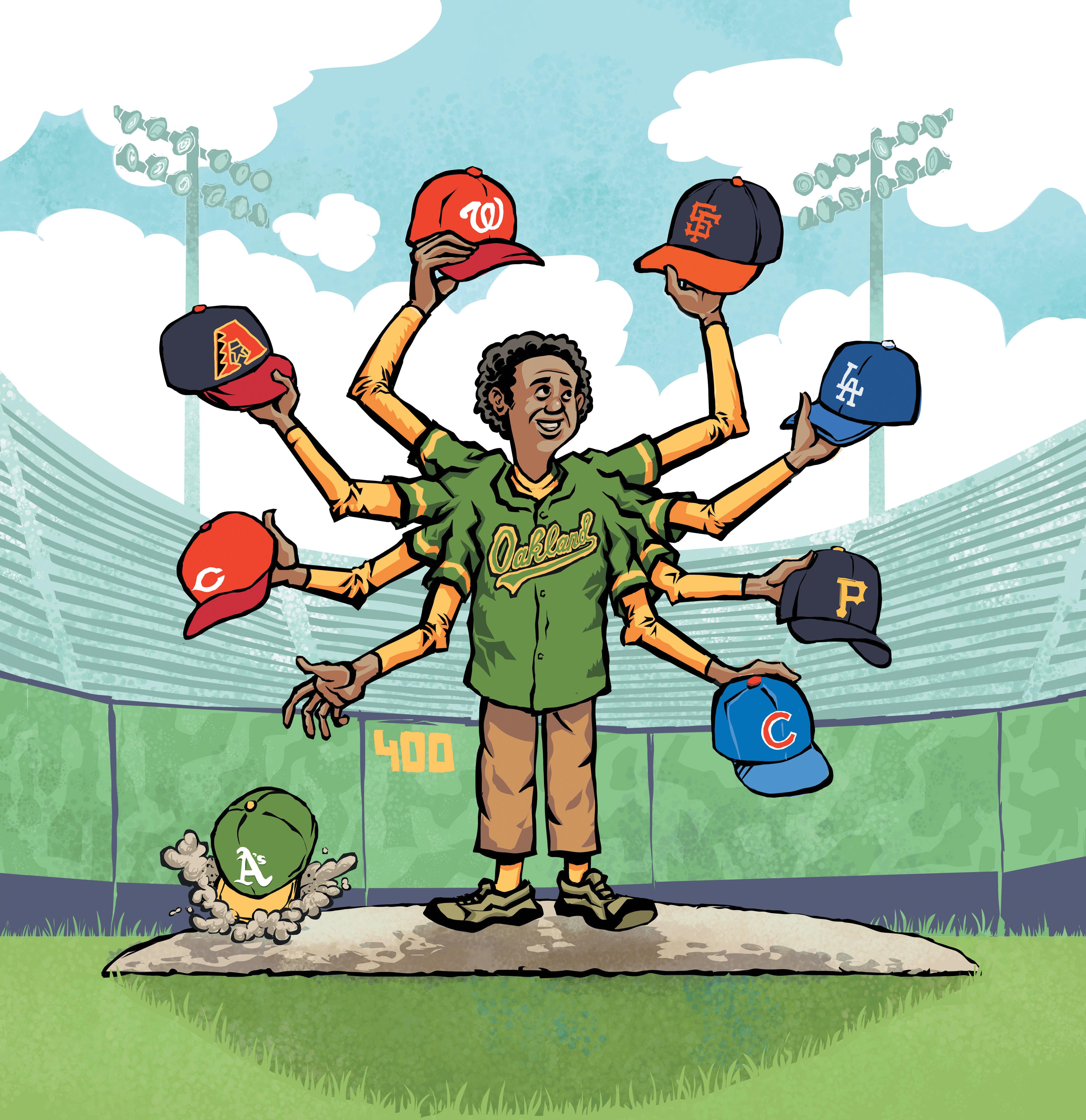
STORY BY LAURENCE MIEDEMA
ILLUSTRATION BY JEFF DURHAM
What’s an A’s fan to do now?
The franchise has, at least temporarily, set up shop in Sacramento after saying all of its goodbyes to Oakland and the Bay Area last summer. A permanent relocation to Las Vegas is at least three years away.
Of course, some fans will continue to support the Green and Gold, no matter where they call home. Raiders fans followed their team to Las Vegas, too.
But other A’s fans severed ties because of the heartbreaking move or
World Series titles: 3 in San Francisco, the most recent in 2014 (5 in New York)
Recent former A’s on the roster: Bob Melvin (manager), Matt Chapman
Common ground: There’s some comfort — and easier access — in rooting for the Bay Area’s lone MLB team, although taking the colors of a longtime rival will be a non-starter for many.
2025 win projection: 80
Fan pitch: “The view of the East Bay is breathtaking from the upper deck here.”
World Series titles: 7 in L.A., including two of the past four (1 in Brooklyn)
Recent former A’s on the roster: Max Muncy, Blake Treinen
Common ground: The franchises met in World Series in the 1970s and ’80s but not much in common as of late.
Freewheeling L.A. spent more last season (about $240M) than the A’s have the past four seasons combined.
2025 win projection: 110
Fan pitch: “We hate the Giants, too!”
vowed to stay away as long as John Fisher owns the team.
One option for the free-agent fan class of 2025 is to adopt another team.
Does a perfect replacement exist? Time will tell. The A’s and their fans made 57 seasons of memories in Oakland. It was one of the most successful (four World Series titles) and colorful franchises in the modern era. So the bar is set pretty high.
Here’s a look at what the other 29 teams (listed by division) could offer former A’s fans looking to root for a new team in 2025.
World Series titles:
None
Recent former A’s on the roster: Tyler Wade, J.B. Wendelken
Common ground: At the time of his death, late Padres owner Peter Seidler was against the A’s leaving Oakland and reportedly was gaining the support of several other owners.
2025 win projection: 90
Fan pitch: “So you like colorful uniforms?”
World Series titles: 1, in 2001
Recent former A’s on the roster: A.J. Puk, Aramis Garcia, Cristian Pache
Common ground: No shortage of exciting young talent, and these teams tend to be ones the “experts” underestimate.
2025 win projection: 84
Fan pitch: “Come for spring training; stick around for the pool.”
World Series titles: None
Recent former A’s on the roster: Jack O‘Loughlin, Nick Martini, Jeff Criswell
Common ground: The Rockies would not exist if potential sales and relocation of the A’s didn’t fall through in 1978 and ’79.
2025 win projection: 62
Fan pitch: “Coors Field might not be a dive bar, but it’s a pretty great hang.”
World Series titles:
None
Recent former A’s on the roster: Joel Payamps, Jared Koenig
Common ground: Oakland
rapper Stanley Burrell, better known as MC Hammer, earned the nickname “Lil Hammer” as a kid hanging around the A’s clubhouse because of his physical resemblance to one-time Brewer “Hammerin” Hank Aaron.
2025 win projection: 83
Fan pitch: “You’d look good in a racing sausage costume!”
World Series titles: 11, most recent in 2011
Recent former A’s on the roster: Sonny Gray
Common ground: We know who A’s fans were rooting for during the McGwire/Sosa home run chase in the summer of 1998.
2025 win projection: 76
Fan pitch: “We’re the best fans in baseball. Just ask us.”
World Series titles: 5, the most recent in 1979
Recent former A’s on the roster: Tristan Gray
Common ground: Have been giving the A’s a run for the money to field teams with the lowest payroll possible.
2025 win projection: 77
Fan pitch: “It’s not the Bay Bridge, but the Roberto Clemente Bridge isn’t a bad substitute.”
World Series titles: 3, most recent in 2016
Recent former A’s on the roster: Carlos Perez
Common ground: Harry Caray spent the 1970 season calling games for the A’s, before he became a Cubs broadcasting legend.
2025 win projection: 87
Fan pitch: “Just like BART, the ‘L’ will drop you a short walk from the stadium.”
World Series titles: 5, most recent in 1990
Recent former A’s on the roster: Terry Francona (manager), Sam Moll, Emilio Pagan, Cooper Bowman
Common ground: Both teams had, at one time, a live animal serve as the unofficial mascot — Charlie O., the A’s mule, and Schottzie, the Reds’ Saint Bernard.
2025 win projection: 84
Fan pitch: “We can relate to embarrassing owners: Does Marge Schott ring a bell?”
World Series titles: 2, most recent in 1986
Recent former A’s on the roster: Starling Marte, Sean Manaea, Frankie Montas, Paul Blackburn
Common ground: First met in the 1973 World Series.
2025 win projection: 92
Fan pitch: “We heard you wanted to root for a team that spends, right?”
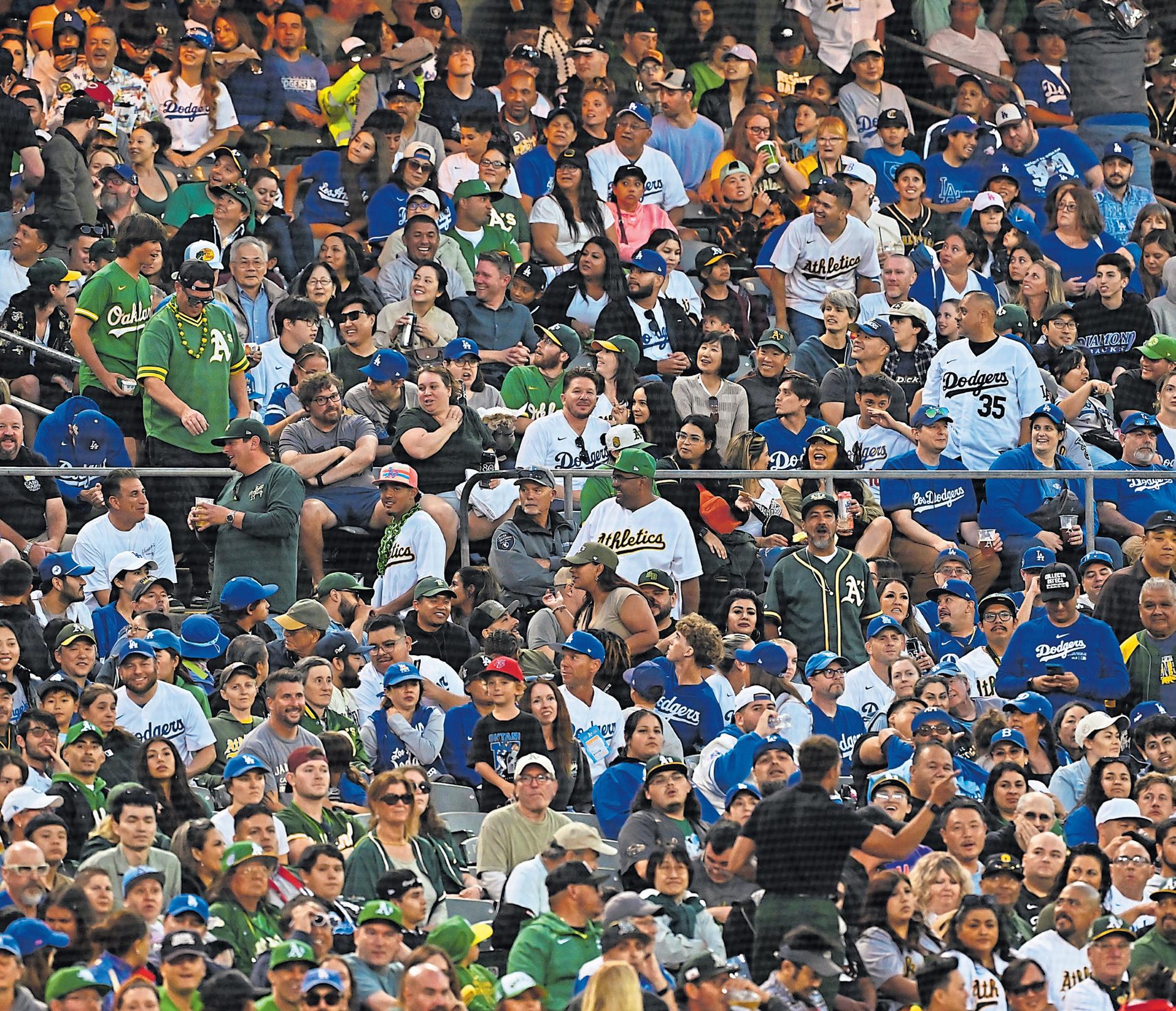
While some A’s fans will continue to support the Green and Gold no matter where they call home, one option for the free-agent fan class of 2025 is to adopt another team. One thing Dodgers and A’s fans have in common is a shared hatred for the Giants.
JOSE CARLOS FAJARDO/STAFF ARCHIVES
World Series titles: 1 in 2019
Recent former A’s on the roster: None
Common ground: The Nationals were born when the Expos moved to D.C. from Montreal in 2005 — the last MLB team relocated before the A’s.
2025 win projection: 69
Fan pitch: “Don’t recognize any of the players’ names? Don’t worry; they won’t be here long.”
World Series titles: 2, most recent in 2008
Recent former A’s on the roster: Jesus Luzardo, Cal Stevenson
Common ground: Philadelphia is where the Athletics franchise was born in 1901 and remained through 1954.
2025 win projection: 92
Fan pitch: “Yo, it’s about time you came back!”
World Series titles: 2 in Atlanta, most recent in 2021 (1 in Milwaukee, 1 in Boston)
Recent former A’s on the roster: Matt Olson, Sean Murphy, Nick Allen, Jurickson Profar, Jordan Weems, Grant Holmes
Common ground: Just look at how many former A’s are on the roster. Their bench coach, Walt Weiss, was the A.L. Rookie of the Year in 1988 and won a World Series with Oakland the following year.
2025 win projection: 94
Fan pitch: “What do you mean you couldn’t get a new stadium built in 30 years? We’ve built two since 1997.”
World Series titles: 2, most recent in 2003
Recent former A’s on the roster: Jonah Bride
Common ground: Low payroll. Dismal attendance. Steady roster churn.
2025 win projection: 64
Fan pitch: “At least we have a new stadium.”
World Series titles: 1 in 2023
Recent former A’s on the roster: Marcus Semien, Jonah Heim
Common ground: Another product of relocation: Franchise was known as the Washington Senators and played in D.C. from 1961-71.
2025 win projection: 86
Fan pitch: “Everyone else seems to be moving to Texas.”
World Series titles: 1 in 2002
Recent former A’s on the roster: Ron Washington (manager), Ryan Noda
Common ground: The A’s played more games against the Angels than any other franchise during their Oakland history.
2025 win projection: 72
Fan pitch: “We can talk with our friends at Disneyland to see about getting Stomper a new gig.”
World Series titles: 2, most recent in 2022
Recent former A’s on the roster: Tayler Scott
Common ground: The A’s biggest AL West rival over the past decade. Since 2017, they are the only two teams to win the division.
2025 win projection: 88
Fan pitch: “You with us? One (trash can) bang for ‘Yes’ and two bangs for ‘No.’”
World Series titles: None
Recent former A’s on the roster: Shintaro Fujinami
Common ground: Different sport, but Seattle are fans still reeling from the Sonics’ move to Oklahoma City in 2009.
2025 win projection: 84
Fan pitch: “It’s a short flight, and we’ll leave the roof open for you.”
World Series titles: 2, most recent 2015
Recent former A’s on the roster: Lucas Erceg, Sam Long
Common ground: Home to the A’s franchise from 1955 until it moved to Oakland in 1968.
2025 win projection: 83
Fan pitch: “We know exactly what you are going through … though we got an expansion team out of it.”
World Series titles: 4, most recent in 1984
Recent former A’s on the roster: None
Common ground: The teams met in the playoffs three times in eight seasons from 2006-13, and Oakland’s first playoff series victory came against Detroit in 1972.
2025 win projection: 85
Fan pitch: “Detroit is the Oakland of the Midwest.”
World Series titles: 2, most recent 1948
Recent former A’s on the roster: Stephen Vogt (manager)
Common ground: Recent roster constructions have been very similar — not many familiar names and a steady roster turnover — and both teams are managed by popular former A’s players.
2025 win projection: 84
Fan pitch: “We believe in Stephen Vogt, too!”
World Series titles: 2 in Minnesota, most recent 1991 (1 in Washington)
Recent former A’s on the roster: Armando Alvarez
Common ground: Along with the A’s, the Twins were nearly contracted by MLB in the early 2000s.
2025 win projection: 83 Fan pitch: “You still sore about us ending ‘The Streak’ and your ‘Moneyball’ season in 2002? That was a long time ago.”
World Series titles: 3, most recent 2005
Recent former A’s on the roster: None
Common ground: The “other” poorly run team in a major population market.
2025 win projection: 55
Fan pitch: “Let us know what you decide. We might be looking for a new team, too.”
World Series titles: 27, most recent 2009
Recent former A’s on the roster: None
Common ground: Future home to some of Oakland’s all-time greats: Catfish Hunter, Reggie Jackson, Rickey Henderson, Jason Giambi and Jose Canseco, not to mention the Billy Martin connection.
2025 win projection: 94
Fan pitch: “Buy one hat, and you are set for life.”
World Series titles: 2, most recent 1993
Recent former A’s on the roster: Chris Bassitt, Ernie Clement, Christian Bethancourt
Common ground: The teams have made more trades with each other, 28 according to Baseball-Reference, than any other partners since 1998.
2025 win projection: 76
Fan pitch: “Rickey Henderson and Dave Stewart won a World Series with us, too!”
World Series titles: 9, most recent 2018
Recent former A’s on the roster: Liam Hendriks, Sean Newcomb, Austin Adams,
Common ground: Red Sox nation has deep ties across the country, including the Bay Area.
2025 win projection: 84
Fan pitch: “Let us reverse YOUR curse!”
World Series titles: None
Recent former A’s on the roster: Joe Boyle, Garrett Acton
Common ground: The A’s of the East Coast in terms of regularly turning low-payroll rosters into playoff contenders.
2025 win projection: 82
Fan pitch: “We didn’t have any choice but to play in a minor league stadium this season.”
World Series titles: 3, most recent 1983
Recent former A’s on the roster: Daz Cameron, Jorge Mateo, Vimael Machin
Common ground: Either the O’s or the A’s represented the American League in the World Series every season from 19691974.
2025 win projection: 87
Fan pitch: “We just confirmed a 30-year extension on our stadium lease. So we aren’t going anywhere.”
Dieter Kurtenbach contributed to this story.
BY LINDA ZAVORAL
The Athletics’ move to Sutter Health Park provides a good reason for fans to explore the food and libations scene in West Sacramento, Old Sacramento and beyond. Here’s a guide to get you started:
This may gladden your hearts, East Bay fans. The very cool outdoor brewpub near the ballpark, The Barn, is operated by Drake’s Brewing of San Leandro. This massive curvilinear building helped activate the Bridge District when it opened in 2018. Kick back in the beer garden or grab a lawn chair and order some food and a Drake’s Denogginizer Double IPA, their Flywheel Pilsner or a Bear Republic Racer 5.
Another West Sac option is the Kick’n Mule Bar and Kitchen, which has a massive menu of Moscow Mules — 20 versions. Over on Jefferson Boulevard, a popular stand called Whitey’s Jolly Kone has been selling soft-serve cones, shakes, burgers and hot dogs since 1936.
Or for something completely different, head to Franquette, a Parisian-style bistro. This cafe serves early breakfast, brunch, lunch and dinner — from croissants and quiche to oysters and rillettes. Naturally, the beverage of choice here is wine from a French vintner.
Details: Drake’s: The Barn, 985 Riverfront St.; Kick’n Mule, 2901 W. Capitol Ave.; Whitey’s Jolly Kone, 1300 Jefferson Blvd., Franquette, 965 Bridge St., West Sacramento.
Far right: Molly Morris, of Sacramento, takes a selfie with her family during a Sacramento River Cats game at Sutter Health Park, the ballpark where the former Oakland A’s will play this season.
JOSE CARLOS FAJARDO/STAFF ARCHIVES
Right: Drake’s The Barn, a massive beer garden near the ballpark, is run by Drake’s Brewing of San Leandro.
COURTESY DRAKE’S BREWING
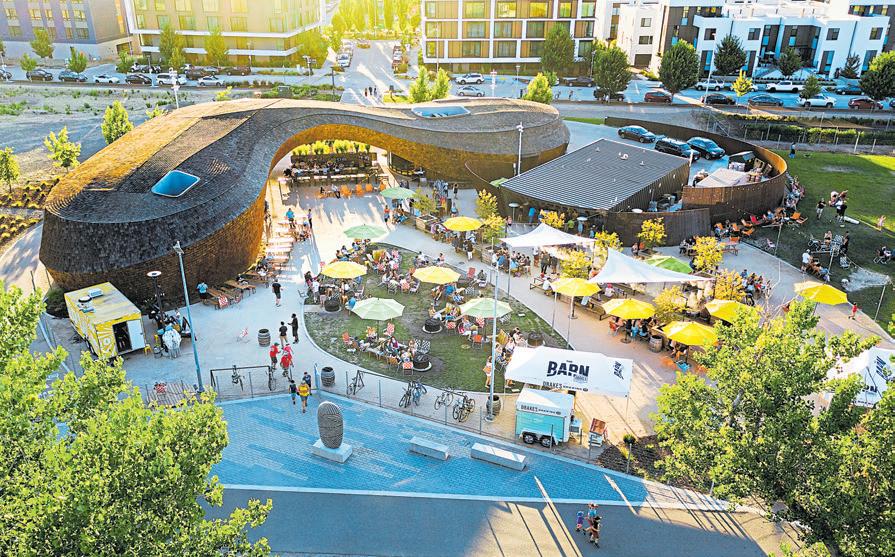
ACROSS THE BRIDGE IN OLD SACRAMENTO
“Old Sac” is located just across the Sacramento River from West Sac and the Sutter Health ballpark. Fans who have attended River Cats games over the years know that this historic district, with buildings dating back to the Gold Rush, is a great, walkable destination for pregame and postgame food and drink. And you can’t help but soak up some California history.
The fine-dining gem is The Firehouse, open since 1960 in a transformed building that historians say was the state’s first fully staffed firehouse. It’s not normally baseball fare — think Stuffed Quail, Corvina Sea Bass, Rack of Lamb — but it could be, if there’s a victory over the Yankees to celebrate. If not, the creative Bar Bites menu is appealing.
Fanny Ann’s Saloon is a classic of a different stripe. Full of personality, this place is known for its wall-to-wall kitschy vintage collection (a buggy from the horse-and-buggy days hangs from the ceiling) and a Jiffy Burger that’s slathered with peanut butter.


Other restaurants include Joe’s Crab Shack, a mainstay for boiled, broiled or fried fish and seafood; the Bear & Crown, where you can fill up on British bangers and mash before enjoying the great American pastime; Brannan Manor for steaks, sandwiches and salads. And pizza. These historic buildings house lots of pizza joints.
Need something sweet for the game or the drive home? Old Sac boasts no fewer than a dozen candy, ice cream and dessert shops. Check out the Rocky Mountain Chocolate Factory, Mad Hatter Doughnuts, Munchies Salt Water Taffy and Cerealism, a cereal-themed dessert bar.
You never forget the craveable fast-food flavors from your youth. For Sacramento area residents, that would be Jimboy’s Tacos, created back in the day by a man named Jim Knudson. Corn tortillas are filled with seasoned ground beef, cheese and lettuce and famously dusted with ... parmesan cheese! “Dusted & Delicious since 1954,” the company boasts. You’ll find two Jimboy’s locations nearby: One in the Downtown Commons — or DOCO — area and one three miles west of the ballpark, making for an easy stop before the first pitch.
Details: Open at 405 K St. from 11 a.m. to 7 p.m. daily and for longer hours at 750 Harbor Blvd., West Sacramento, 10 a.m. to 11 p.m. weekdays, 11 a.m. to 11 p.m. weekends; https://jimboystacos.com.
You’ll find some of the city’s newer dining options in the DOCO district (that’s urban-speak for Downtown

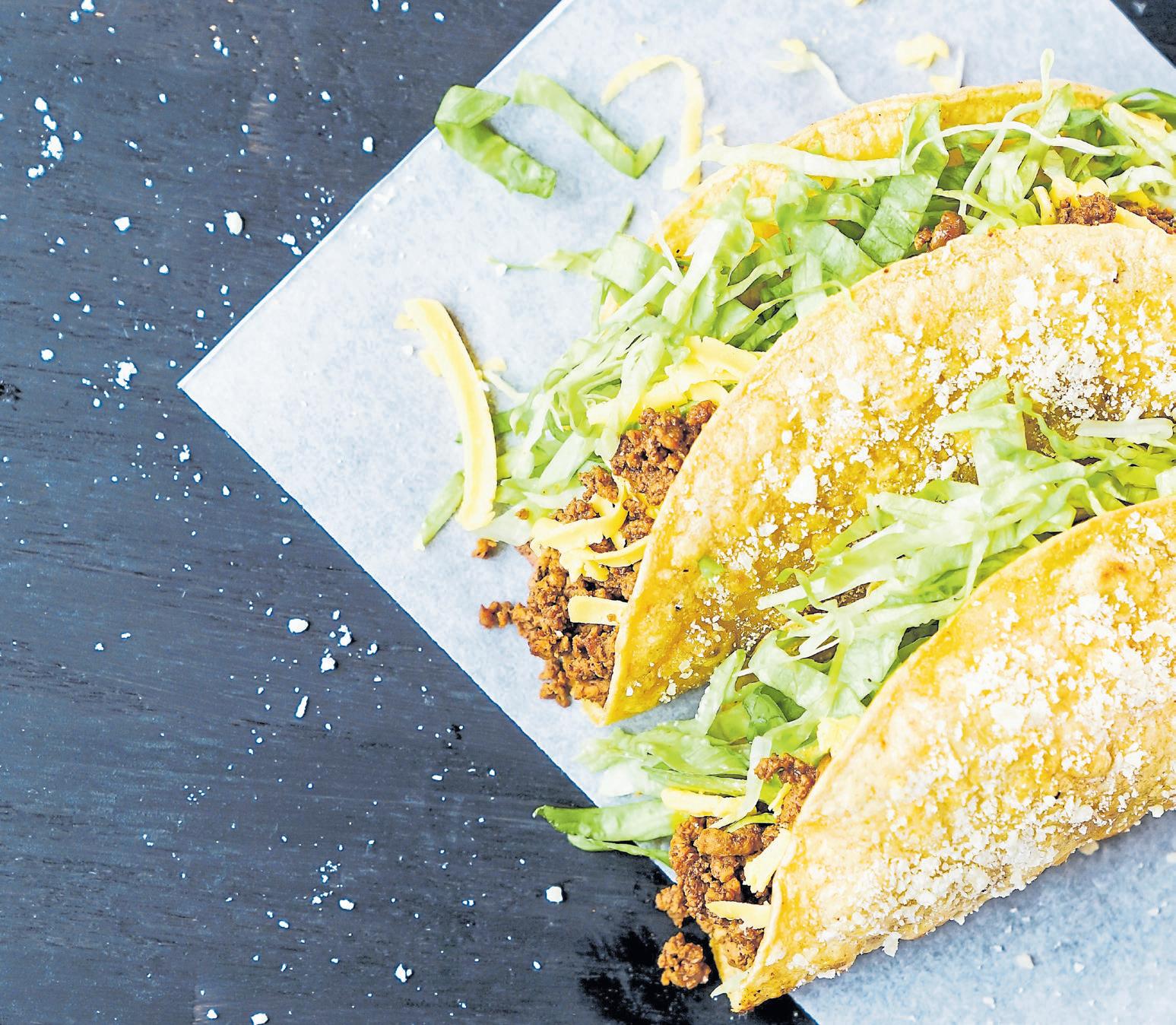
Commons), which is home to the Sacramento Kings’ arena, the Golden 1 Center.
On the streets near the arena there’s a wide array of offerings: A Bay Area favorite, Sauced BBQ & Spirits, offers specialties from the pit, such as the Dinosaur Beef Rib, Burnt Brisket Ends and Burnt Pork Belly and also makes a mean bowl of Brisket Chili. The Cabana Club bills itself as a Palm Springs-inspired lounge with cocktails for those hotbut-not-nearly-as-hot-as-PalmSprings days in the capital city. At Cakes by Jeff the Chef, you can buy cheesecakes in 4-inch and 8-inch sizes from this award-winning baker. He offers several flavors at a time from his rotating menu of 30. Among the many best-sellers are the Peach Cobbler, Oreo Crunch and Lemon Drop versions.
Details: Most DOCO establishments are open daily, and some maintain very early or very late hours or both. Check www.docosacramento.com for specifics.
Like baseball fans all over America, you can sit in the stands mindlessly shelling and tossing back peanuts. But this is Sacramento, almond country, home of Blue Diamond, a cooperative of nearly 3,000 growers. Get into town early and drive to the Blue Diamond Nut & Gift Shop, where you’ll find California-grown almonds in every flavor and form. Munch on samples and pick up some pouches for the game. You can’t go wrong with the classic Smokehouse seasoning or the trendy Sweet Thai Chili flavor.
Details: Open from 9 a.m. to 5 p.m. weekdays and until 4 p.m. on Saturday at 1701 C St., Sacramento; https://bluediamondstore.com.
All

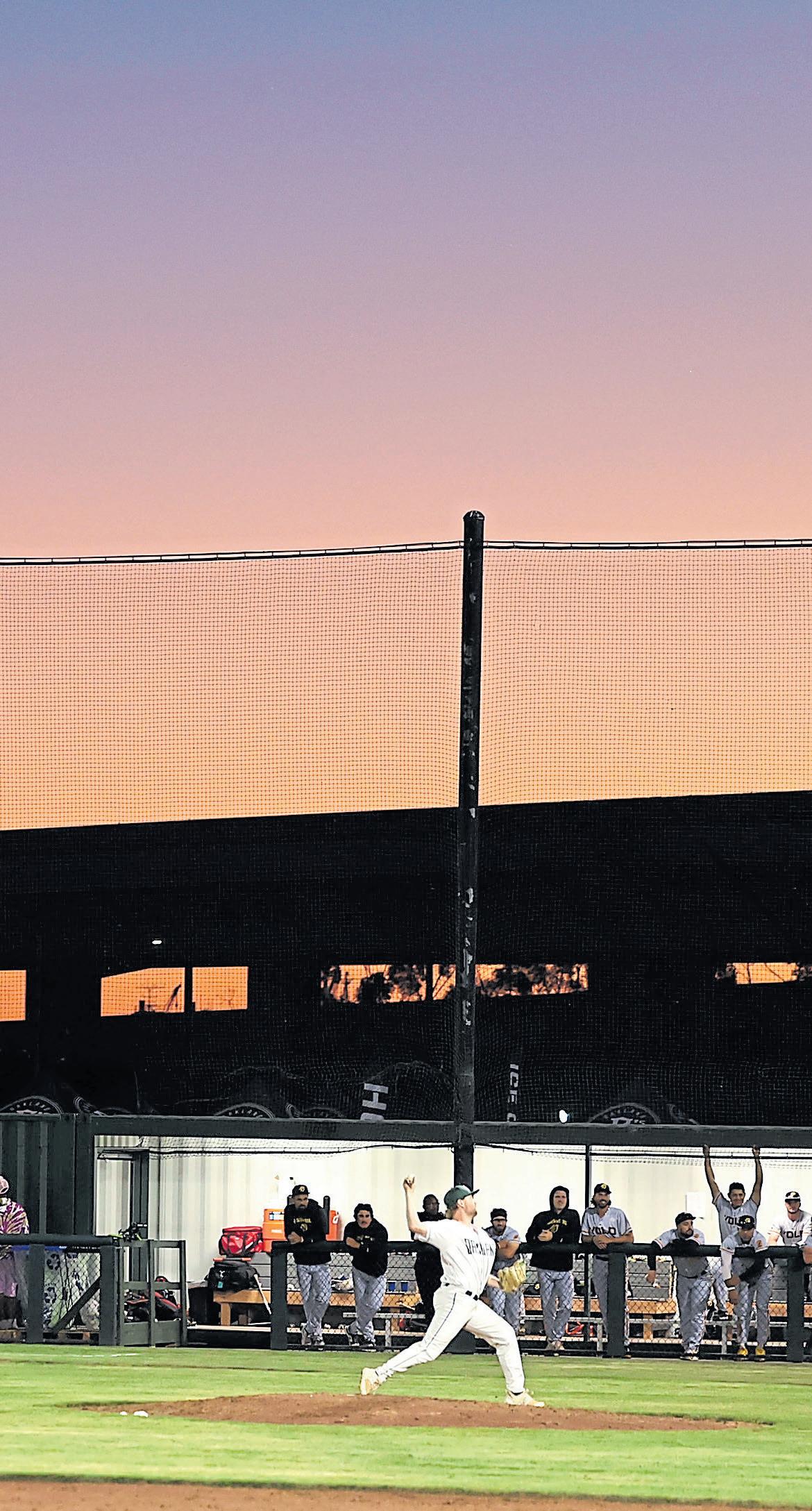
BY NATHAN CANILAO
Aroller-coaster inaugural season that included excitement, controversy and a late playoff push was just the start for the Oakland Ballers.
“We’re happy that we got to the playoffs in our first year of existence, but we didn’t quite hit the goal of winning a championship,” said Paul Freedman, who along with Bryan Carmel founded the Ballers.
“But we’re going to invest in having the best team as well.
“If fans want to see this team win, they should know that their co-founders do, too. We hold ourselves accountable to try to make that happen.”
With the A’s temporarily calling Sacramento home before the planned permanent relocation to Las Vegas, the Ballers have Oakland to themselves.
The franchise is looking to duplicate last season’s success on the field and expand its connection with the community in Year 2.
The Ballers went 58-38 and averaged 1,918 fans per game last season, nearly half the capacity at renovated Raimondi Park in West Oakland. The home opener drew 4,100, and attendance for five other games was more than 3,000.
The Ballers open the 2025 independent Pioneer League season at home on May 20 against the Ogden Raptors.
The organization brought in some new faces and kept some old ones. Raimondi Park is expected to get more upgrades.
“Every season, we’re going to be able to make some investments to improve the facilities and make the experience better,” Freedman said. “We listen to fans and others about what the most important things are and then prioritize our investment based on that.”
Unlike last season, the Ballers have had a full off-season to plan for the season ahead.
The whirlwind began in November 2023, when Freedman
The Oakland Ballers reached the playoffs and averaged nearly 2,000 fans per game at West Oakland’s Raimondi Park during its debut season. The B’s will open the 2025 season in late May and play into September. JANE TYSKA/STAFF ARCHIVES
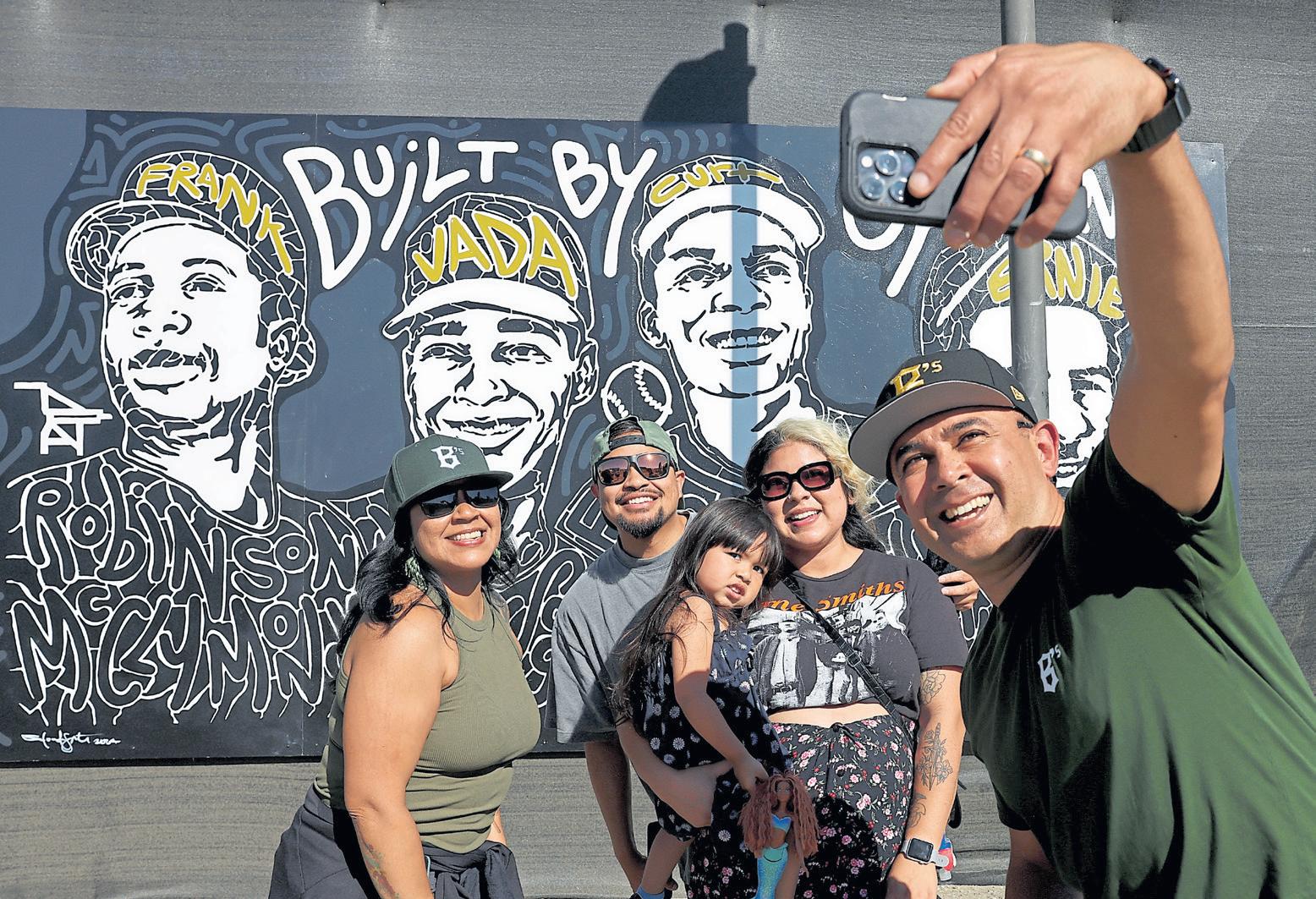
Oakland residents Cristina Mariscal, left, Mikhail Yanogacio and Kela, Alicia and Emilio Mariscal snap a selfie before a game at Raimondi Park.
RAY CHAVEZ/ STAFF ARCHIVES
and Carmel helped create an ownership group that raised more than $2 million to establish the team. Weeks later, the team appointed former Seattle Mariners manager and Hayward High alum Don Wakamatsu as the executive vice president of baseball operations.
Dondrei Hubbard, then the reigning Pioneer League batting champ, was the first Ballers player signed. Later, trailblazing woman pitcher Kelsie Whitmore joined the roster.
In a matter of months, the Ballers renovated Raimondi Park, held tryouts to fill out their roster and, on May 21, the franchise made its debut in Kalispell, Montana, with a 7-6 win over the Glacier Range Riders. It wasn’t all smooth sailing.
The organization fired firstyear manager Micah Franklin halfway through the season, for
what Wakamatsu said at the time was “a difference in baseball philosophy and approach to the game.”
Just a few weeks later, Lonnie Murray, the agent for three players on the team, blasted the Ballers for what she believed was mistreatment of her players, including the handling of injuries and housing concerns. She also advised Whitmore to leave the team.
On the field, the team rallied. Under new skipper Aaron Miles and fueled by several trades, the Ballers finished the second half of the season with the best record in the league (31-17) and captured the final spot in the playoffs.
They lost to the fellow expansion squad Yuba-Sutter High Wheelers in a best-of-three game series, but the season was a success to the Ballers brass.
“I think the main goal of Paul and Brian, when we started this thing, (was) to have a place that is more community-oriented.”
Don Wakamatsu, Oakland Ballers executive vice president of baseball operations
“I think the team knew their backs were against the wall,” Wakamatsu said. “They came together, and I think that had a lot to do with the players we brought in.”
Freedman, Wakamatsu and the rest of the organization feel that they are in a better place after the lessons learned in 2024.
Miles is back as manager and will be helping curate the roster along with Wakamatsu. The first three moves in the offseason were to bring back four core players: pitchers Conner Richardson and Connor Sullivan, outfielder Tyler Best and catcher Tyler Lozano.
There were moves off the field, too. Jorge Leon, the president of the Oakland 68s fan club, was voted by Ballers fans to join the team’s advisory board. The team added former ABC 7 sports anchor and longtime Oakland baseball advocate Casey Pratt as vice president of communications and fan entertainment.
“One thing fans want to see is players people can connect with and recognize,” Freedman said. “We’re going to have more local players on the team this year, which is great, because it gives fans players whom they can root for that they’ve been watching since they were in middle or high school. That kind of continuity is great.”
Big picture, the Ballers are hoping to be here for the long haul. The goal is for Year 2 to be another building block for the team to be a main attraction for the people of Oakland and the East Bay.
“I think the main goal of Paul and Brian when we started this thing is to be able to have a place that is more community-oriented,” Wakamatsu said, pointing to the Cubs’ much larger example in North Chicago.
“Hopefully one day, it’s just like Wrigleyville, where that whole area becomes rejuvenated.”

BY JASON MASTRODONATO
It’s been only a few months since the Oakland A’s left town, and Jorge Leon is relieved.
“It’s a bittersweet thing, but I’m excited the A’s are gone,” Leon said.
One of the leading voices of the Oakland A’s fans who were lobbying for the team to build a new stadium during its final years in Oakland, Leon did everything he could to try to convince the A’s to stay.
Ultimately, the fans didn’t have any power.
That changed in December, when 2,000 fan-investors of the independent league Oakland Ballers elected Leon to the team’s board of directors in a historic move the Ballers believe is the first of its kind in American professional sports. Leon (and the fans he represents) now have a significant say in what their beloved local baseball team chooses to do.
“It’s been quite the journey,” said Leon, 39, an Oakland native and father of two who works as a waste water control inspector
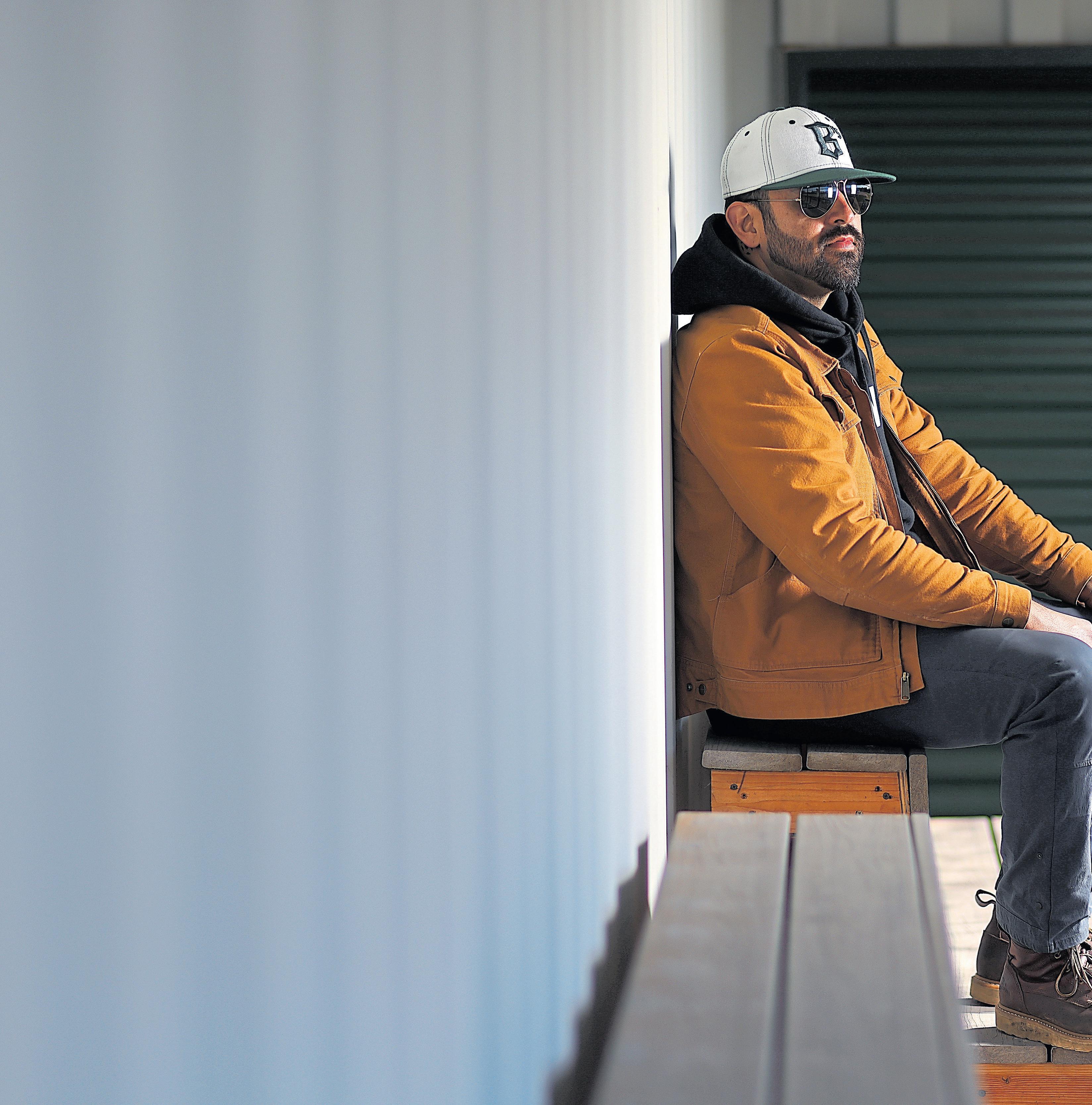
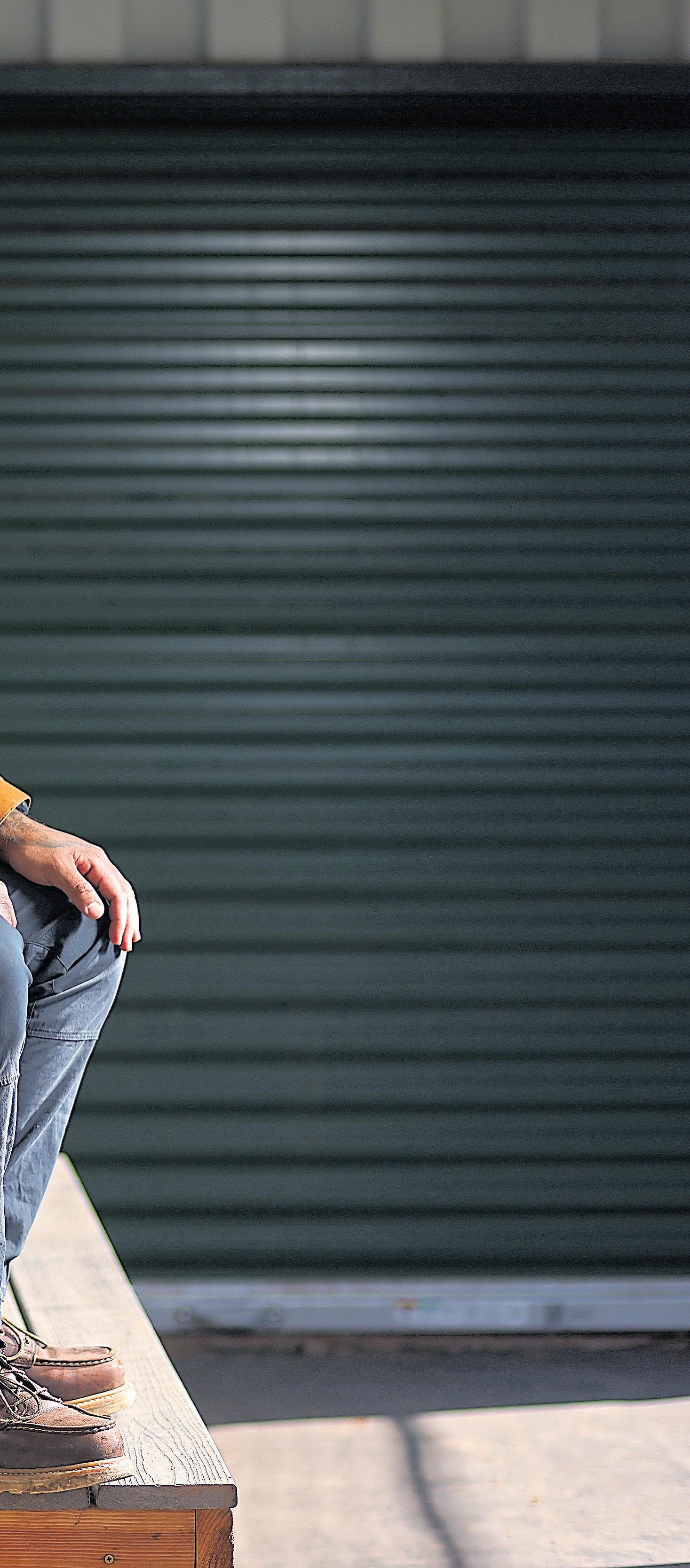
and high school soccer coach.
“The reason I got to this point is because we’ve been trying to build the voice for the fans, trying to say that fans do matter. We have to unite in a way that’s similar to a union.”
When the team was founded in November 2023, co-founders Paul Freedman and Bryan Carmel always planned on listening
made an inspiring run into the playoffs.
After the Ballers lost a best-of-three series against the Yuba-Sutter High Wheelers in September, Carmel said he was giving out hugs to crying fans on their way out of the stadium.
“They didn’t believe it was over,” Carmel said. “It was such a magical, unexpected season that meant so much to people.”
In November, the Ballers made an announcement: They were going to raise $1.235 million by selling ownership shares to its own fans. They were also giving their fans voting rights on high-level decision-making.
ful team and a great place to gather.”
In December, the fan owners had their first decision to make: Elect their representative on the Ballers’ five-person board of directors.
Hoping to find a fan that would take the job seriously, the Ballers made the application process long and tedious. Of the 2,000 fan owners, 76 applied. The Ballers chose 11 finalists and asked them to submit a video explaining their values and intentions. Then, they narrowed the list down to two: local business owner Jade Le and Leon.
Leon took his place on the board of directors, which also includes co-founders Freedman and Carmel, Jesse Eisenhardt and Jamie Rosenberg.
to the fans for advice. Leon, who was passionately organizing fans to support Oakland teams until the A’s announced they were leaving for Las Vegas, “was one of the first people we courted,” Carmel said. “We wanted his blessing and his feedback right away. He had fantastic insights.”
With Leon’s help, the team settled on Raimondi Park as a home field and invested almost $2 million to renovate it. The 4,000-capacity stadium averaged about 2,000 spectators for Ballers games its first season, with attendance highest near the end of the year, when the new team
“If you buy a share in the Green Bay Packers, it’s a really cool thing, you get a certificate, but you don’t necessarily have any power in the decision-making of the team,” Carmel said. “We wanted a way to have actual meaningful fan representation in what we do.”
More than 2,000 fans registered, and the Ballers quickly met their fundraising goal.
“People want to say, ‘Hey, if I put money into this team, at least I have a sense of community with this ballclub,” Leon said. “It’s a risk. Can I say for sure you’re going to make money off it? I don’t know. But I do know the people running it — and people like me — will do their best to create a success-
“The purpose of the board is to serve the cultural community and handle fiscal duties for the team,” Carmel said. “It’s to help make sure from a high level that we’re making really good decisions, hiring the right people and that our strategy and our budget and initiatives are calibrated to meet the goals of the team.”
Leon is already hard at work thinking of ways to better the fan experience in 2025.
“The Ballers gave me a blank canvas to let me do what I got to do to help bring more people in,” he said.
And Le has talked with the Ballers about staying involved.
“She has great energy and ideas,” Carmel said.
After feeling powerless for so many years, Oakland baseball fans finally have a say.
“I’m excited for West Oakland,” Leon said. “Hopefully, the Ballers whoop (expletive), and we can rep the city well.”
BY JOHN METCALFE AND JASON MASTRODONATO
West Oakland is an easy spot for Oakland Ballers fans to eat like, well, a baller, thanks to the new and longtime restaurants that have made this neighborhood something of a dining destination.
We’re talking world-class pizza from a Connecticut guy, beers from a brewing-industry legend and a long-awaited market hall with international bites popping from every corner. And if you’re in the mood for a good hot dog? There’s that, too.
Here are five excellent places to grab a bite around Raimondi Park.
Craig Murli has experienced the tippy-top of Bay Area dining, working at three Michelin-starred Atelier Crenn. But that’s not what he’s about anymore.
“Working in fine dining, I became a little disillusioned with that world,” says the Connecticut-born chef. “I wanted to cook food for the masses, not just the 1 percent.”
Thinking he had “something good to contribute to the pizza conversation on the national scale,” Murli started June’s Pizza in West Oakland a few years ago and recently expanded it into a bustling
Chef Brandon Guthro, right, preps a pizza for the woodfired oven at Oakland’s June’s Pizza.
JOSE CARLOS FAJARDO/STAFF
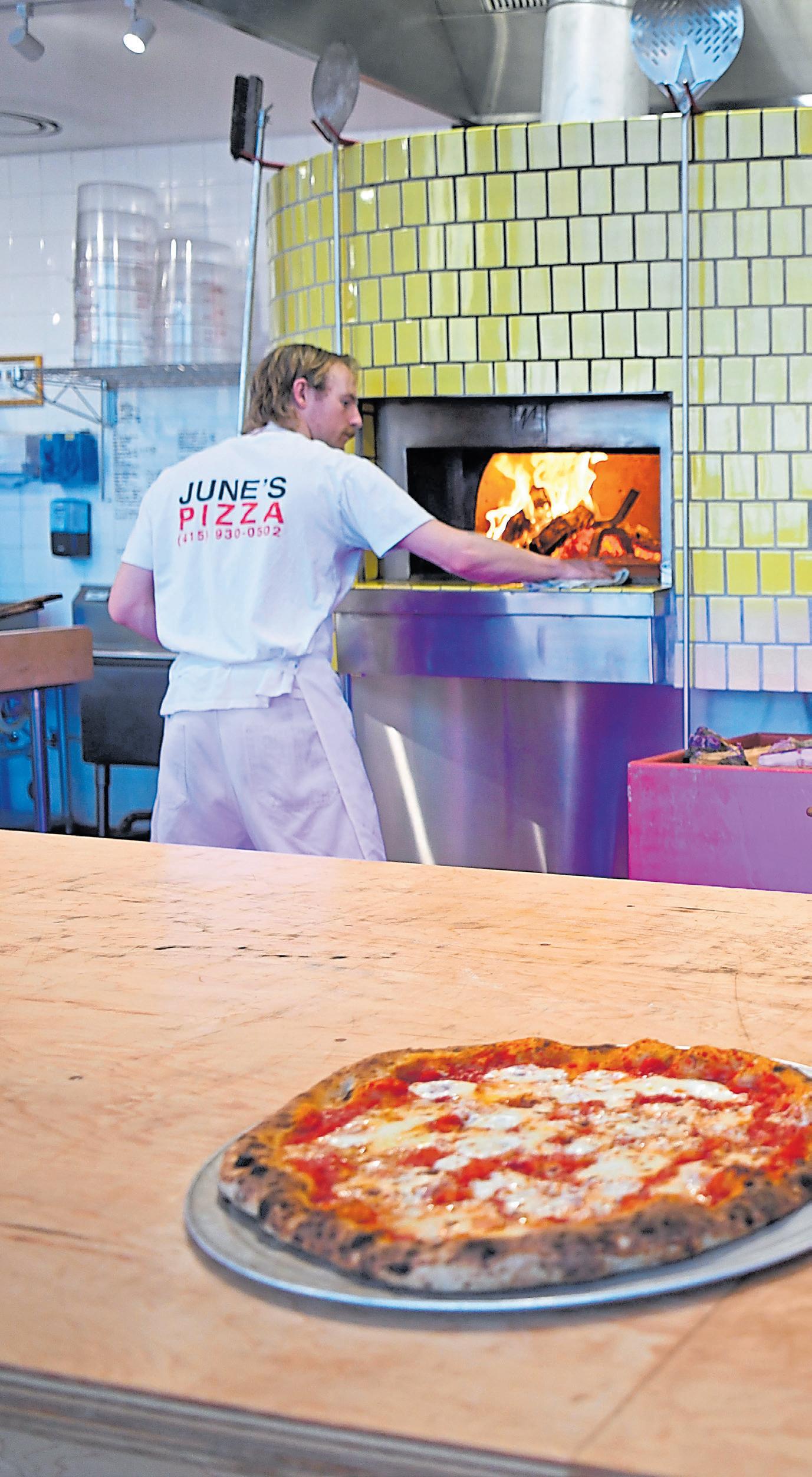
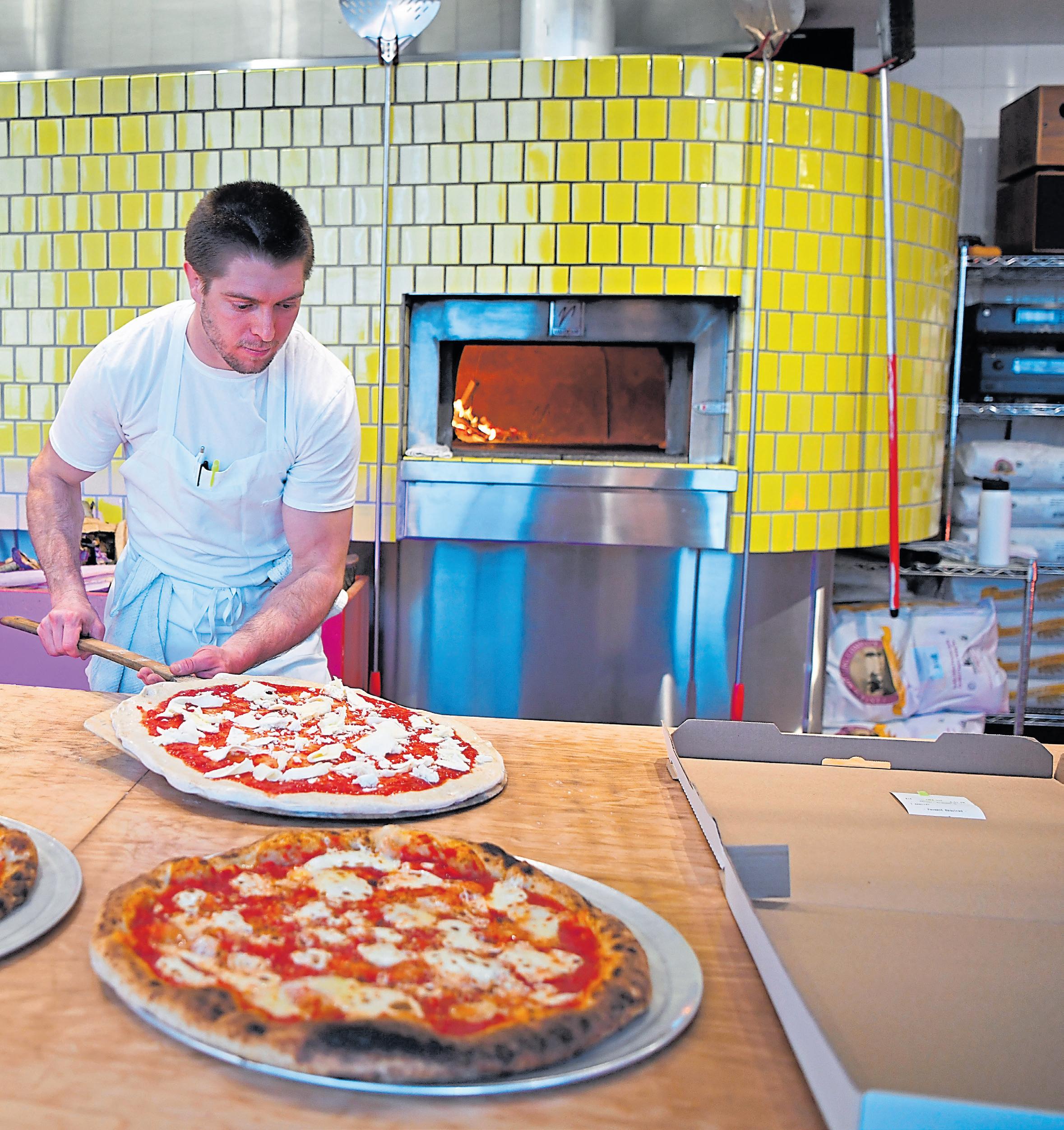
restaurant a few blocks from the park.
On any given evening, you’ll find June’s pizzaiolos maneuvering like a well-oiled boy band as they crank out whole-wheat sourdough pies with flavor combos like cauliflower-bottarga and guanciale-mustard greens with — June’s signature — a whirlwind of fresh-grated cheese on top.
The peak-season ingredients are straight from local farmers markets, and the dough is blistered in all the right places.
“I’m definitely inspired by Connecticut style pizza but also Italian and New York style,” says Murli. “Really what informs it are those places plus California cooking and the local bread culture. June’s Pizza is unique.”
Late-night people take note: While June’s specializes in whole pizzas early in the shift, after 9 p.m., the restaurant starts serving margherita slices with entertainment that ranges from DJs to a “Caturday Night catnip party” with rescue cats.
Details: Open 4 p.m.-midnight Wednesday-Sunday at 2408 Mandela Parkway, Oakland; junespizza.com
The newest, biggest thing to land in West Oakland is just a long fly ball away from the Ballers field. Prescott Market, scheduled to open this spring, gathers more than half-a-dozen local eateries (and drinkeries) under one roof, with outdoor seating to soak in the sun and, you know, try to catch those errant balls.
Last year, Prescott existed as a food-truck night market that attracted big crowds of baseball fans on game nights — plus people driven there by the Instagram algorithm for
viral grub. Now it’s taken over 12,000 square feet in a restored 1920s industrial building, with a total of eight planned tenants. Anchoring the space and lubricating it well is a new taproom from Alameda’s Almanac Beer Co. Non-drinkers can get a buzz at Highwire Coffee Roasters, and grocery shoppers can hit up Prescott Meats and Delicatessen.
The restaurants include Fast Times Burgers, with its grass-fed beef smashburgers and duck-fat fries, and Pizzeria Violetta, which bakes everything from vegan pies to a brown sugar-candied bacon pizza. There’s also Woo Can Cook, run by a self-described “unemployed COVID era musician” who shot to YouTube fame making Chinese dishes from his childhood. Try the bacon-fried rice — people swear by it.
Details: Opening this spring at 1620 18th St., Oakland; westoaklandfarmersmarket.org/ markethall.
John Gillooly is perhaps best known as the former brewmaster at Drake’s — the San Leandro craft brewery whose owners describe him as an “industry treasure” — but in truth, he’s worked at many such places, nine since 1995.
Hopefully, Gillooly won’t leave his current job, because it’s one he helped create. Brix Factory Brewing, which he co-founded in 2024 with family and other beer veterans, lets him experiment with whatever esoteric formulas happen to enter his head that day.
With its corrugated steel and unpainted wood, diverse crowds and canine guests, Brix blends in well with the industrial neighborhood Gillooly calls home. In the back is a manual 10-barrel
Ghost Town Brewing: 1960 Adeline St., Oakland; ghosttownbrewing.com.
Proyecto Diaz Coffee: 1430 34th St., Oakland; proyectodiazcoffee.com
Soba Ichi: 2311A Magnolia St., Oakland; sobaichioakland.com
Tacos la Perla food truck: 1297 West Grand Ave., Oakland; 510384-8964
Kilovolt Coffee: 1829 Mandela Parkway, Oakland; kilovolt.coffee
brewing system responsible for beer like Pop Art — a low-ABV ale with Oregon fruits — and Lost in the Stratus, a hazy IPA with late-harvest Nelson Sauvin hops. Whether a double IPA or black lager or pilsner, the ethos underlying all the beers is “approachability,” Gillooly says.
“If people come in and are like ‘I like to get my face blown off with hoppiness,’ we got those. Or if it’s more ‘I want regular beer,’ we got an American lager on tap,” he says. “We will make anything, do riffs on classic styles or make (stuff) up.”
Brix is a team sponsor, so you may find those beers at the ballpark this season — and occasionally a Baller or two on the premises downing brewskis.
Details: Open daily at 2400 Mandela Parkway, Oakland; brixfactorybrewing. com.
For the last two decades, Martha Barajas has served her popular carnitas and carne
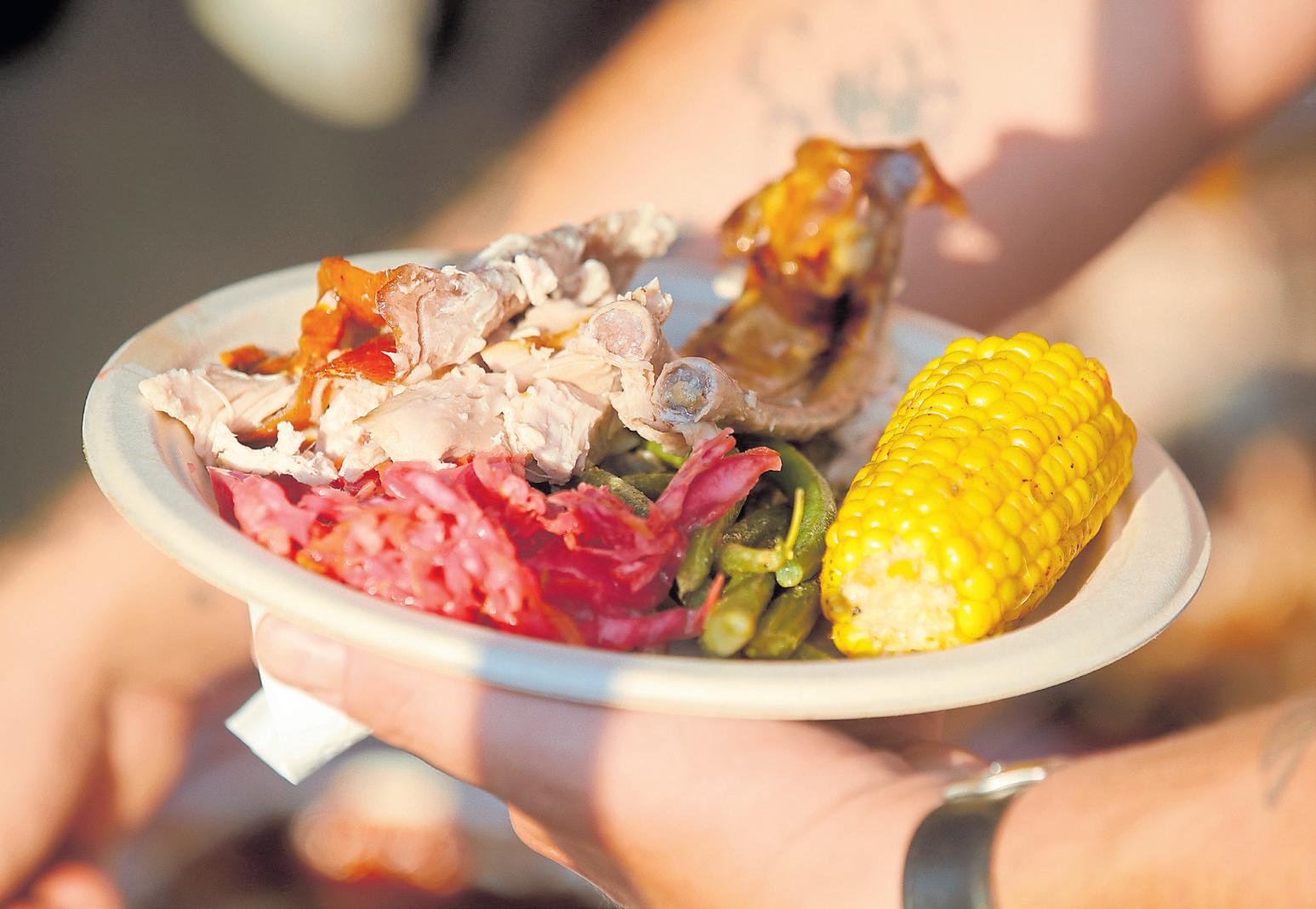
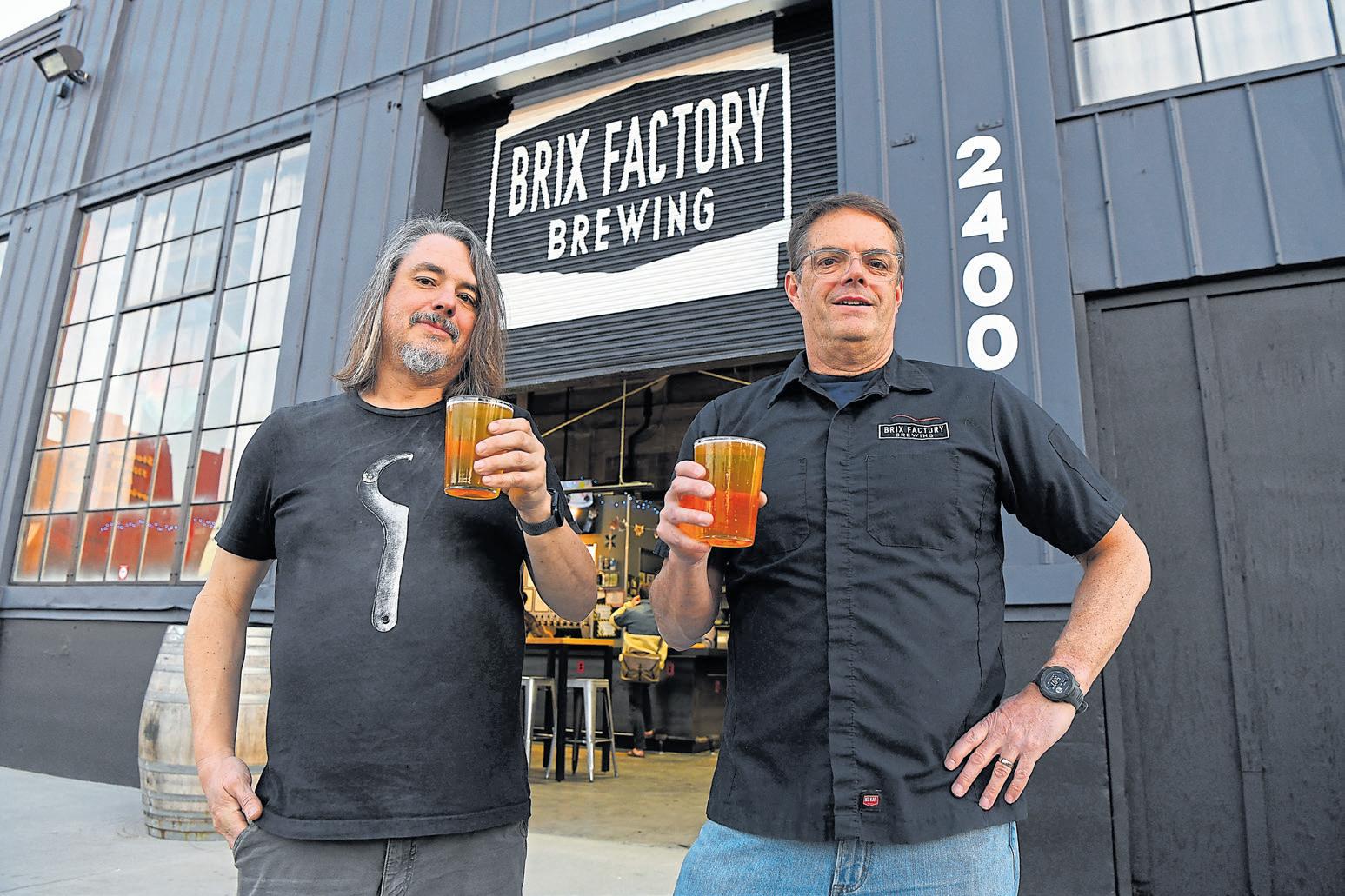
asada tacos out of The Taco Panzon truck on the corner of West Grand Avenue and Campbell Street. It’s been a big hit with Ballers employees and players who often stop by before games or on their days off.
JOSE CARLOS FAJARDO/STAFF
“(Martha) is very particular about how she likes things,” says daughter, Paulina. “She always
uses the most fresh ingredients — she goes to the market at 5 every morning. She won’t put it out, unless she’s happy with the quality.”
The family business began with a restaurant, El Tio Tono, in the 1990s. After it closed, the family turned to taco trucks — several of them. “My mom took
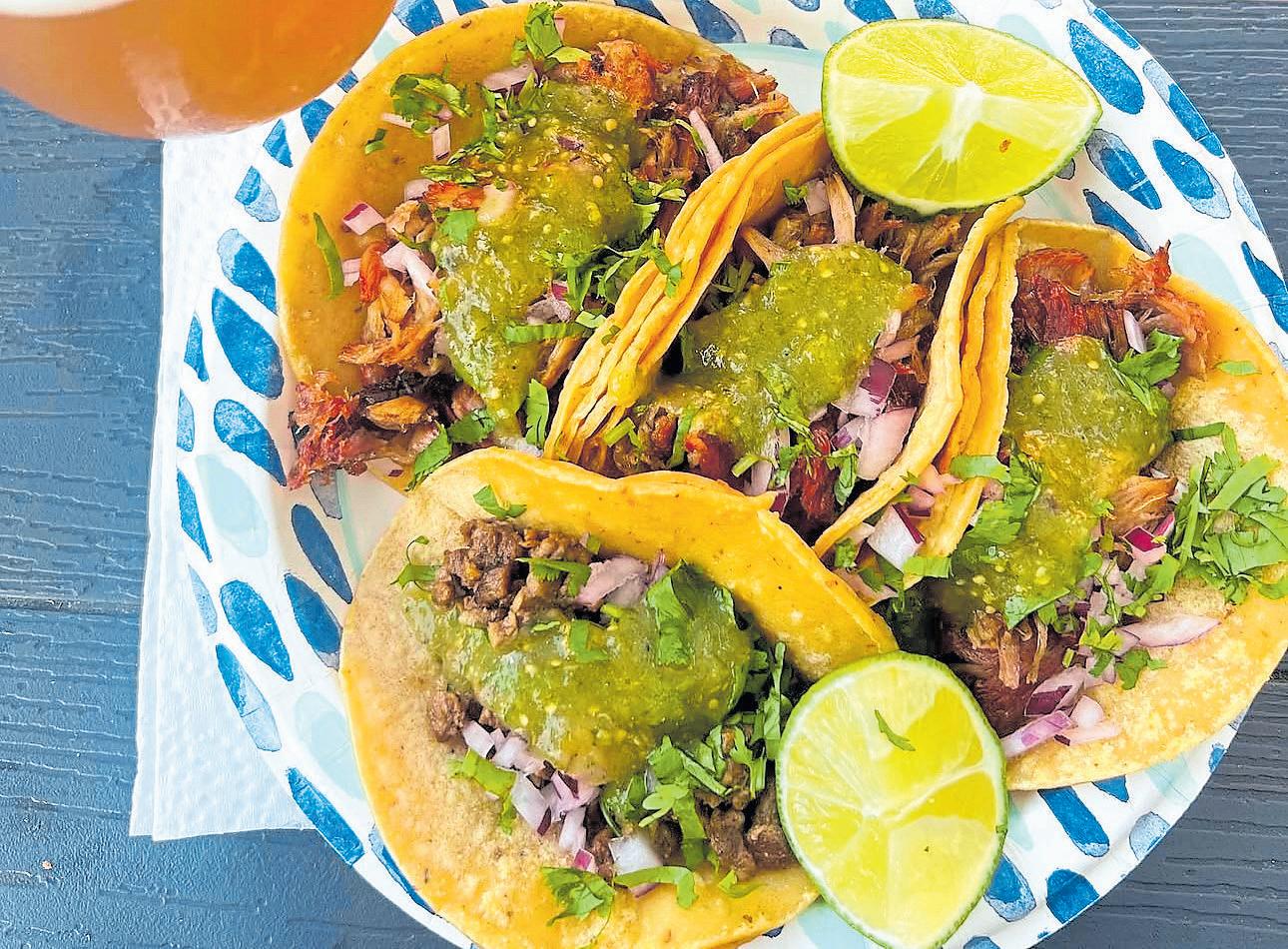
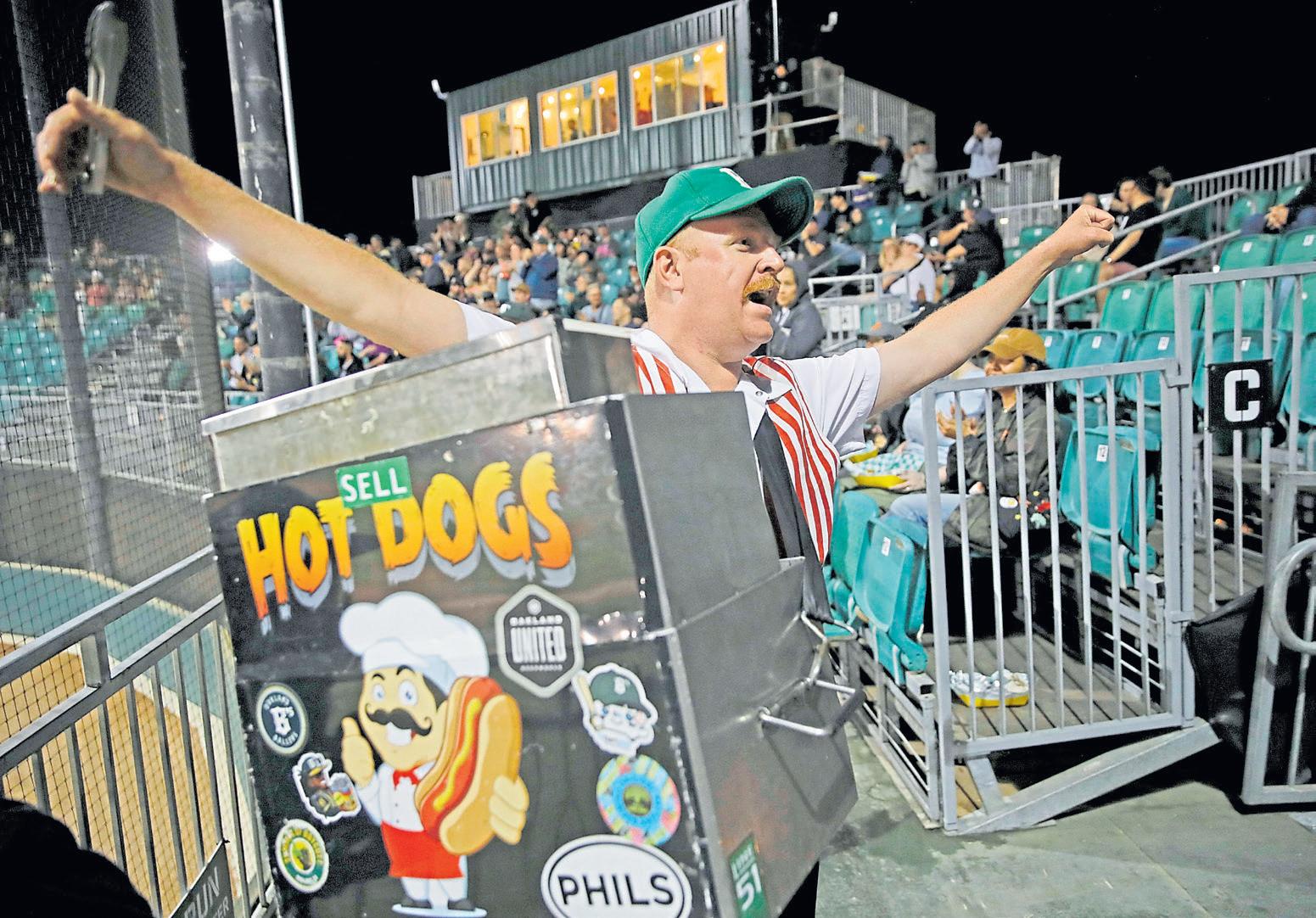
Mike “The Hot Dog Mayor” Davie realized his new job wasn’t just about ballpark franks last year, when he discovered that a child he didn’t even know had dressed up as him for Halloween. Davie had become a local celebrity.
Davie was chosen by longtime Oakland A’s vendor Hal “The Hot Dog Guy” Gordon to carry on the charismatic dog-hawking legacy at Ballers games last year. Lugging around the same steamer once carried by legendary Bay Area vendor Jim Graff, Davie spent the season establishing himself as a character in the stands. But even so, he was surprised.
Other noshing options at Raimondi Park include Taco Panzon, above, and hot dogs from Mike “The Hot Dog Mayor” Davie.
PAULINA BARAJAS; JANE TYSKA/STAFF ARCHIVES
over and named it The Taco Panzon in the early 2000s,” Paulina says. “My dad’s truck, Chile Bravo Grill, is on the corner of West Grand and Market. My aunt and uncle each have one, too.”
At Taco Panzon, you’ll find tacos, burritos, quesadillas, nachos and tortas served with carnitas, carne asada, pollo, al pastor or chicharron, spiked with housemade hot sauce.
Details: Open from 11:30 a.m. to 2 p.m. weekdays at the corner of West Grand Avenue and Campbell Street.
“It was really flattering to have everybody get to know me,” he says. “I learned how to lean into my personality a lot. I make an effort to engage the people. I’m not a droid dispensing hot dogs. I learned the art of the hot dog. I got obsessed with that.” Hawking Miller’s hot dogs, the same brand once sold at the Coliseum, Davie totes an array of condiments, from classic ketchup, mustard, relish and sauerkraut to Kewpie, the tangy Japanese mayo that has proven unexpectedly popular. This year, he’ll add a hot Russian mustard to the mix.
Bringing the hot dog experience to the bleachers isn’t just about toppings. Interacting with kids last season has been perhaps his favorite part of the job.
“I gave out a lot of my oldtimey ’80s baseball cards,” Davie says. “I had a little doggie toy hot dog I’d throw at people. Little leaguers and girls softball players have all these chants — I can’t even keep up. I like to have them lead the chants.”
Details: Raimondi Park on Ballers game nights from the start of the game until about the seventh inning.
As Buster Posey seeks to rebuild the Giants’ farm system, he may bring in a new wave of talent
BY EVAN WEBECK
When the Giants won three World Series championships a decade ago, many of the key players on those teams were homegrown.
Maybe it’s not a coincidence that contributions from players drafted and developed in the minors have been few and far between, as the Giants have reached the playoffs just once in the past eight years.
Now Buster Posey, one of the organization’s greatest products, is back as the president of baseball operations. And near the top of his to-do list is bringing the Giants’ minor league system back to life.
Will the next Posey — or Tim Lincecum, Matt Cain, Madison Bumgarner, Pablo Sandoval, Brandon Crawford or Brandon Belt — be out there this spring
with the San Jose Giants, Sacramento RiverCats, Richmond Flying Squirrels or Eugene Emeralds? Time will tell.
The Giants’ farm system is in better shape than what Farhan Zaidi inherited from Bobby Evans in 2019. Bryce Eldridge, just 20, is considered one of the top prospects in baseball, but overall, the Giants’ crop of young talent is still generally regarded as in the bottom rung of the league.
Things were looking up at the end of 2023, when Marco Luciano seemed primed to succeed Crawford as the franchise shortstop, Kyle Harrison looked poised to join Logan Webb at the top of the rotation, and many of their most promising prospects enjoyed strong seasons.



levels of the minor leagues before reaching Triple-A. And then he played in the Arizona Fall League.
But Posey tempered expectations for 2025, telling reporters at the Winter Meetings, “whether this is right or wrong, I’m looking at it like he should be entering his sophomore year of college.”
When Posey arrived on the scene in 2009, the wily veteran in the Giants’ clubhouse was Randy Winn, and in one of his first moves as the new head of baseball operations, Posey tabbed Winn to oversee player development alongside Kyle Haines, the farm director since 2019.
Winn had been serving in a scouting role, but Posey said, “We feel Randy is the right person to help take our player development to the next level.”
1. Bryce Eldridge, age 20, 1B
2. Carson Whisenhunt, age 24, LHP
3. Josuar de Jesus Gonzalez, age 16, SS
4. James Tibbs III, age 22, OF 5. Rayner Arias, age 18, OF 6. Reggie Crawford, age 24, LHP
7. Joe Whitman, age 23, LHP
8. Dakota Jordan, age 21, OF
9. Johnny Level, age 18, 2B
10. Trevor McDonald, age 23, RHP
the luxury tax threshold.
The handcuffs will make the job more difficult, but not impossible.
GODOFREDO A. VÁSQUEZ/ASSOCIATED PRESS; NHAT V. MEYER/STAFF ARCHIVES
A year later, however, the industry has cooled considerably on Harrison; Luciano’s future is even cloudier, and there’s less confidence in the crop of up-and-comers behind them.
On the bright side, Heliot Ramos realized his potential, becoming the Giants’ first homegrown position player named to an All-Star team since Posey (and Crawford) in 2021, and Tyler Fitzgerald emerged as a potential long-term asset up the middle.
A total of 13 rookies made their debuts in 2024, tied (with the A’s and White Sox) for the most in baseball. With a dozen the year before, the farm system graduated 25 players the past two seasons as the organization took a more aggressive approach toward the end of Zaidi’s tenure. It’s up in the air how many —
if any at all — can achieve the status of the previous homegrown cast that surrounded Posey. But it does mean lists like the one below will omit a number of names who could have figured into the franchise’s future but lost their rookie status.
It also remains to be seen whether the club takes a different tack under Posey, who debuted with less than two years of minor-league seasoning but was also a polished college draftee.
The most exciting development of last season was the stratospheric rise of 20-yearold first baseman Eldridge, the club’s 6-foot-7 first-round pick from 2023. With rocket-launcher exit velocities and an approach heralded as mature for his age, Eldridge climbed through four
One thing is certain: Posey and his general manager, Zack Minasian, will have to be opportunistic in their attempt to rebuild the farm system.
Because of their recent offseason activity, the Giants are operating with less draft capital and resources to sign international amateur talent.
When Posey inked his first major free agent, Willy Adames, he had to consider not only handing out the richest contract in franchise history, but the loss of their second- and fifth-round draft picks, in addition to $1 million in international bonus pool money.
Last winter, they sacrificed their second- and fourth-round draft picks and $1 million of their international bonus pool to sign Matt Chapman and Blake Snell. The penalties were harsher this offseason, because their payroll in 2024 exceeded
On one hand, it makes it all the more important to nail their first-round picks, which have recently produced Ramos and Patrick Bailey but nothing else. Their top pick from 2022, Reggie Crawford, looked overpowering from the left side once he committed to pitching. But a late-season shoulder surgery likely rules him out for all of 2025.
However, they made a splash in the latest international signing period by coming to an agreement with 16-year-old switch-hitting shortstop Josuar De Jesus Gonzalez, considered by many to be the top prospect available in this year’s class of signees. The deal was reported to be worth $2.9 million, the second-richest international bonus in franchise history.
The teenager likely won’t toe the dirt at Oracle Park until the 2030s.
But to build a sustainable winner, this is where the groundwork has to be laid.
BY CHRISTIAN BABCOCK
When you come to a San Jose Giants game, you never know exactly what you’re going to see.
There are some things you can rely on: the smell of barbeque and churros wafting through the air, fresh-cut grass and virtually unmatched sightlines at the intimate, 83-year-old ballpark located on the corner of East Alma Avenue and Senter Road.
But between innings, the Giants pull out all the stops to entertain their fans.
Down in the California League — the San Jose Giants have been a low minor-league affiliate of the San Francisco Giants since 1988 — you’ll witness promotions one wouldn’t dream possible in the tony environs 50 miles to the north at Oracle Park.
“First and foremost, we
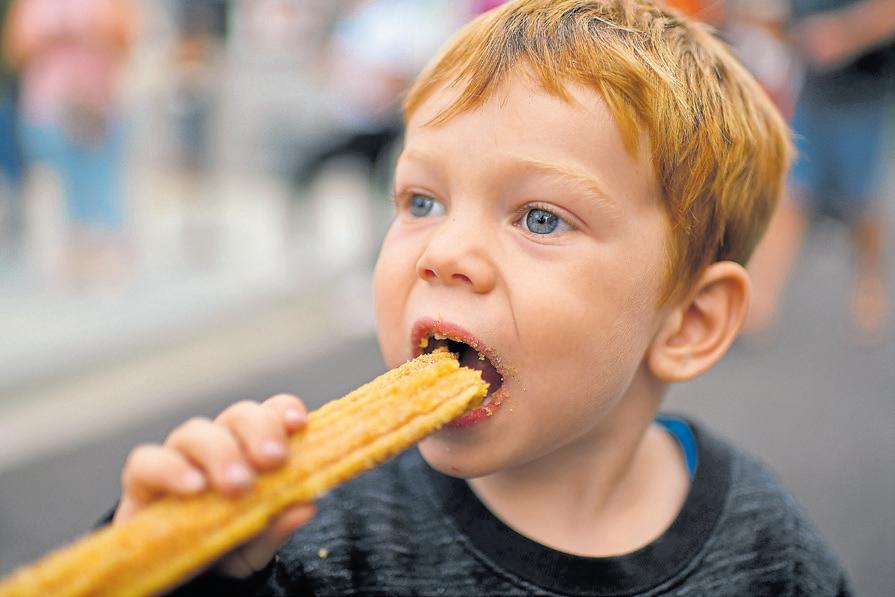
are a community asset,” San Jose Giants assistant general manager Matt Alongi said. “And while we certainly have fans that visit our ballpark to watch baseball and see the future of the (San Francisco) Giants, whatever percentage it may be, it’s a majority of people that come to have a good family outing or a good outing with

friends and family.
“So putting together a product on the field that represents that notion is of utmost importance to us.”
Racing the mascot around the bases, musical chairs and a wooden horse race (think scoreboard dot race, but using hobby horses and played out just beyond the outfield fence) have
been staples between innings at Excite Ballpark, known until 2019 as Municipal Stadium, or simply “Muni.”
For the adults, there is the always popular Beer Batter promotion. Each game, a visiting player is designated the “beer batter.” If that player strikes out, beer is half off for the next 15 minutes.

One beloved between-innings promotion, however, remains on the bench.
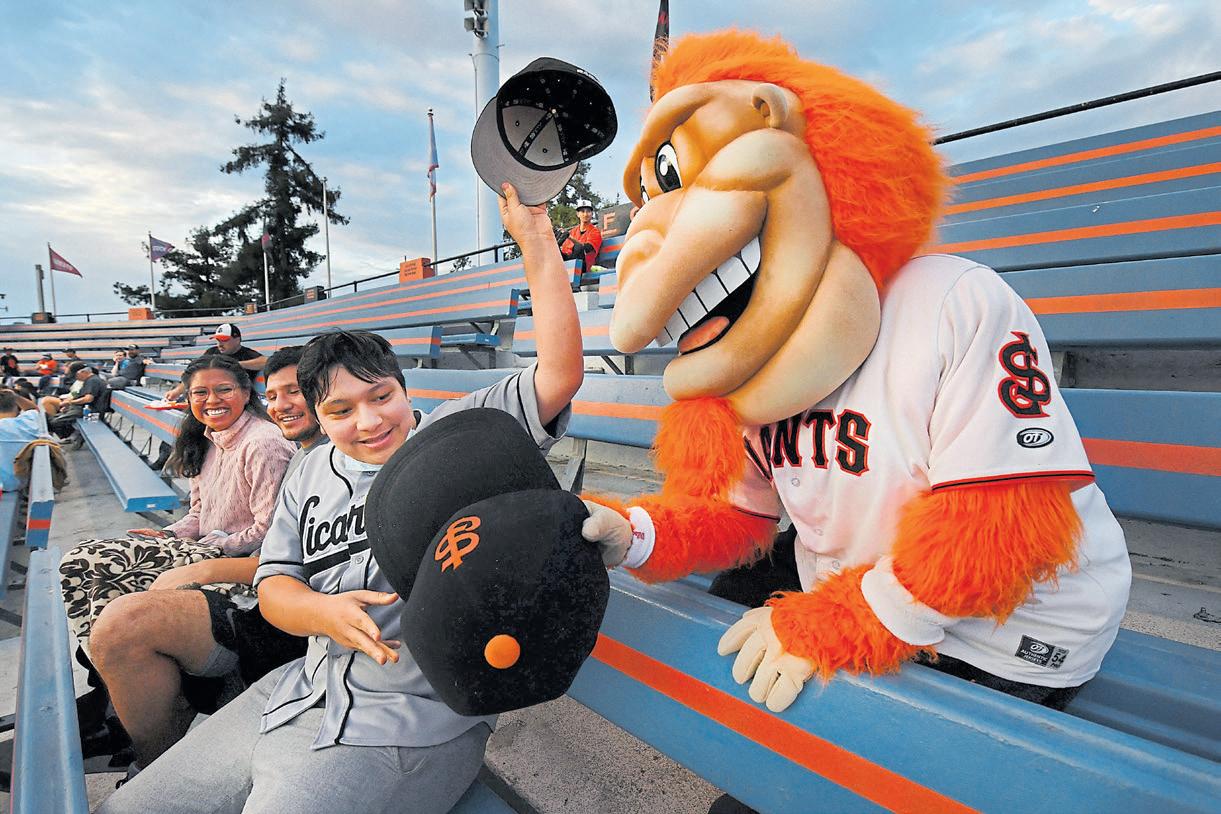
became unfeasible for us to be able to execute it day in and day out.
“We have since let that truck go to bed, if you will.”
Mid-inning promotions this season will include on-field blackjack, a water-balloon toss, the toilet-paper toss and the classic YMCA sing-along.
Theme nights this season include Salute to the Military, Star Wars, Christmas in July, Harry Potter, Margaritaville and Pride. Thirteen games will have giveaways such as bobbleheads, theme night giveaways, Giants apparel and headwear.
Alongi said the promotion was junked in 2020 because it took too long.
“The pitch clock kind of did away with that,” he said. “The fact that we were breaking glass on a field with 90 seconds in between innings, it kind of just
The Smash for Cash, a staple for many seasons, involved a beat-up delivery truck that drove in from beyond the right-field fence to a spot in front of the first-base dugout. SJ Giants players, paired with fans picked at random, would then attempt to smash the truck’s headlights by throwing baseballs from a short distance.
Other promotions that may make appearances from game to game include the golf chip shot contest, uniform race, tennis ball toss and cornhole toss.
And of course, there will be fireworks — lots and lots of fireworks. The Giants will launch pyrotechnics into the night sky 15 times this season, including the July 4 fireworks extravaganza presented by the Rotary Club of San Jose. This display also serves as the official City of San Jose fireworks show.
“Yes, you’re going to see balls and strikes and home runs and good plays,” Alongi said. “But hopefully, you’re also being entertained by what we’re putting on the field with fan inclusion, making them feel like they’re part of something fun and special.”
It’s all about making memories.
“All of these games, hopefully, are something that might seem funny,” Alongi said, “but I can tell you firsthand that they make people’s days and weeks every time it happens to them.”
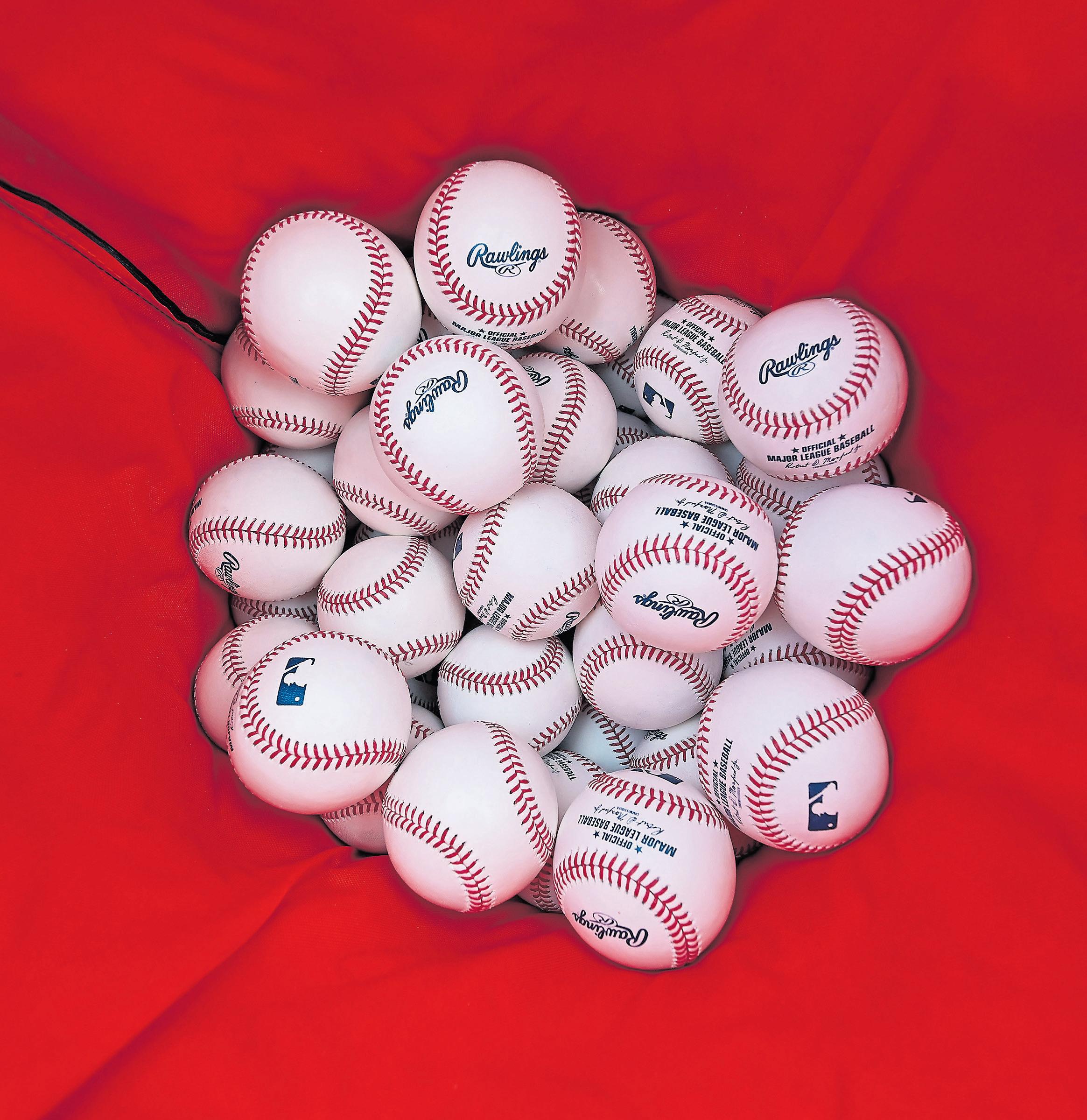
Get all your team’s scores, news and notes delivered straight to your inbox all year long. Take a peek below, then sign up at mercurynews.com/newsletters or eastbaytimes.com/newsletters.
apps.mercurynews.com/newsletters/giants-hq GIANTS HQ
apps.mercurynews.com/newsletters/warriors-hq WARRIORS HQ
apps.mercurynews.com/newsletters/bayareapreps BAY AREA PREPS HQ
apps.mercurynews.com/newsletters/49ers-hq 49ERS HQ
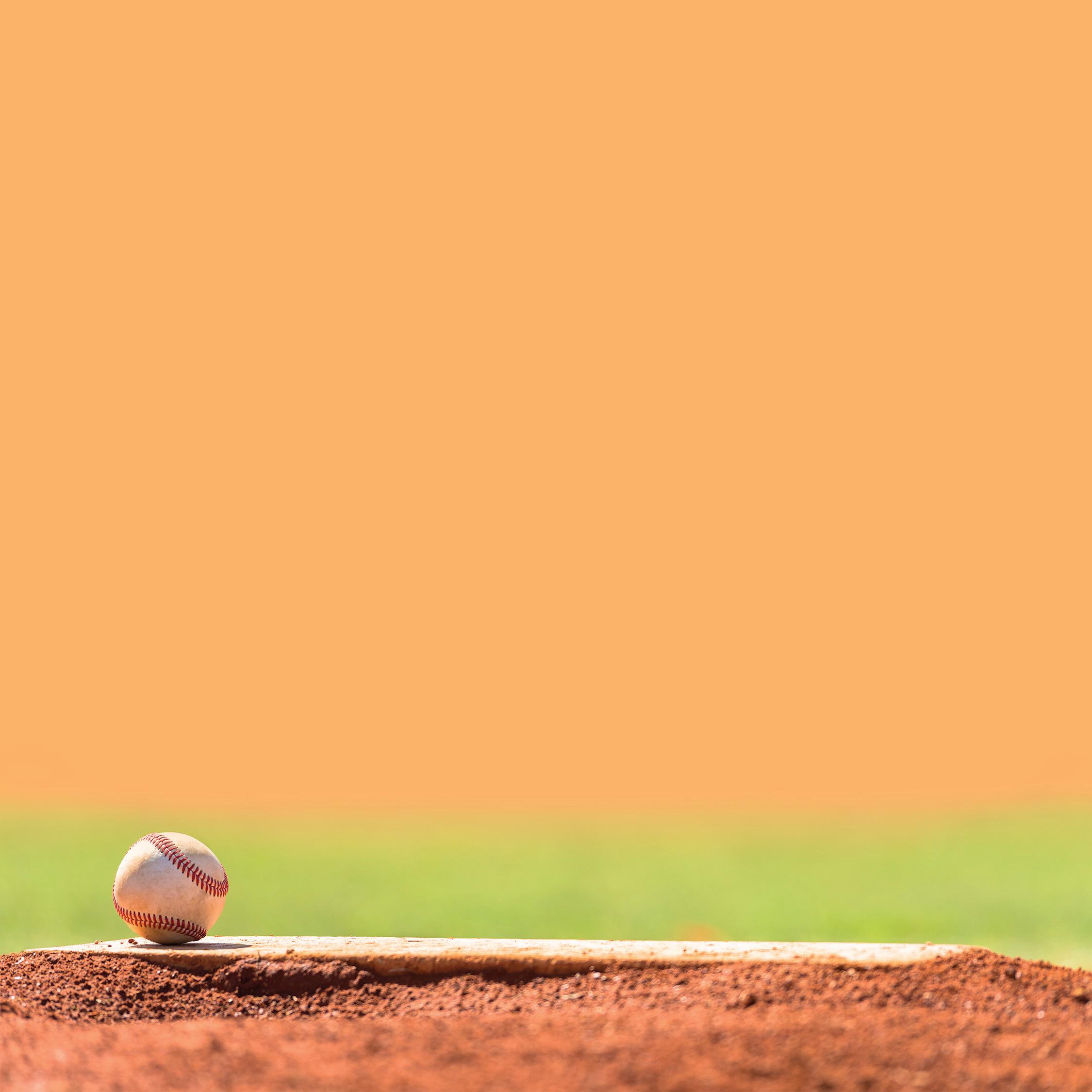
apps.mercurynews.com/newsletters/wilner
apps.mercurynews.com/newsletters/sharks-hq SHARKS HQ